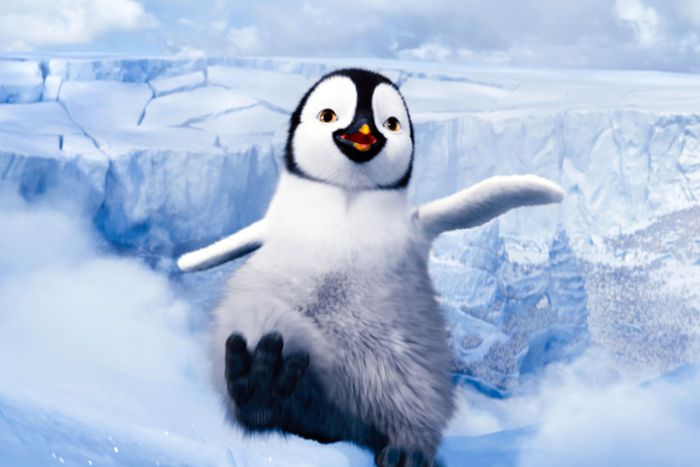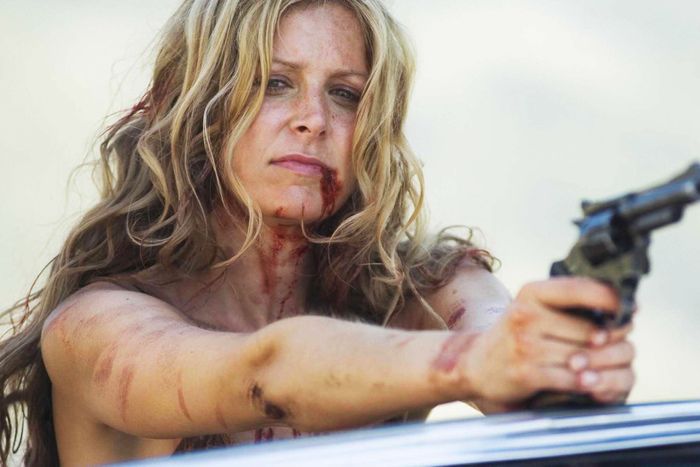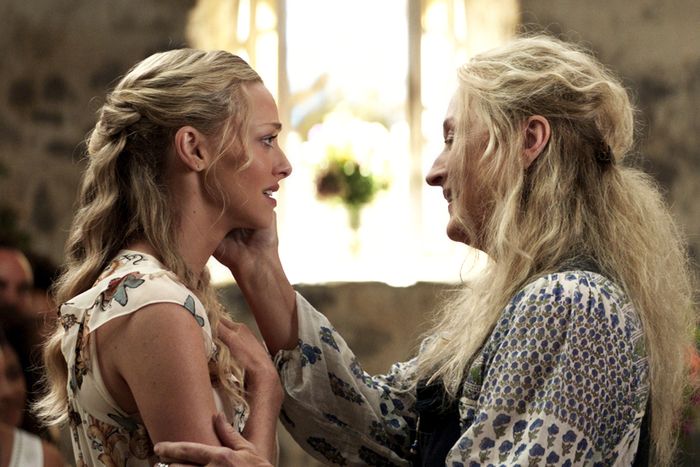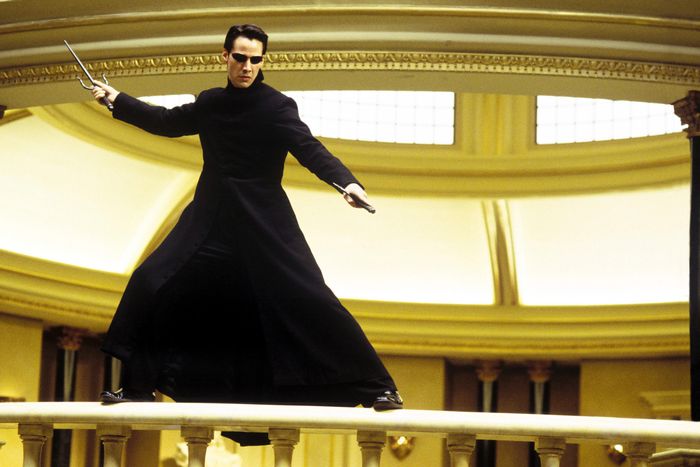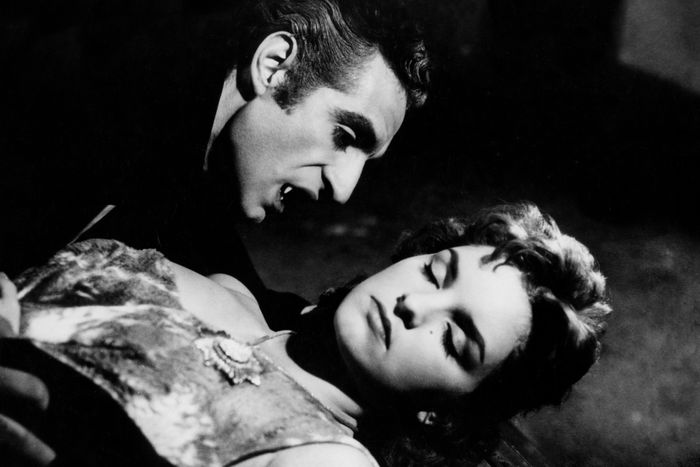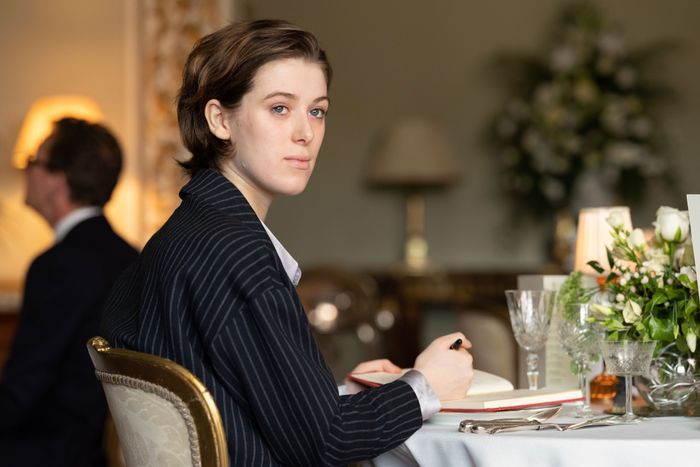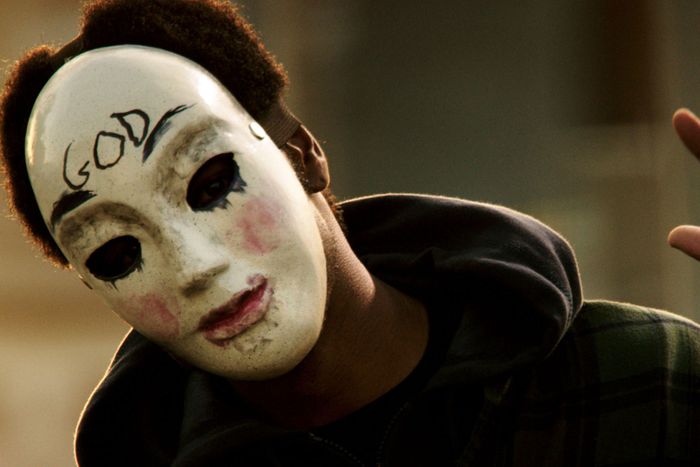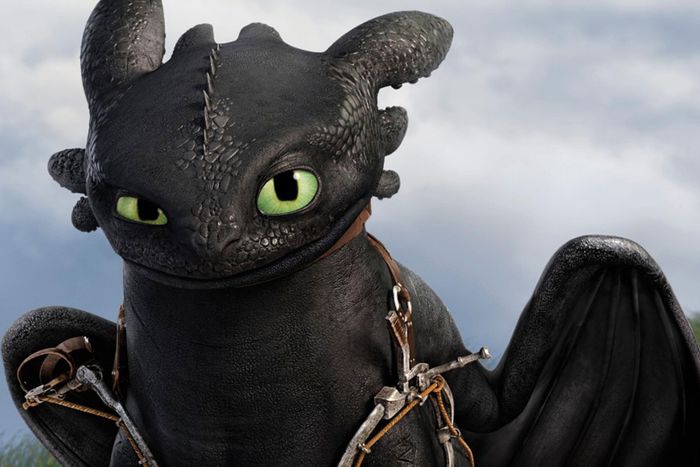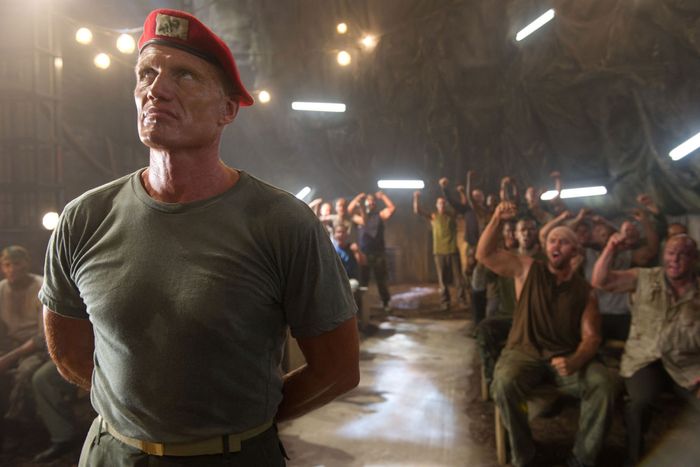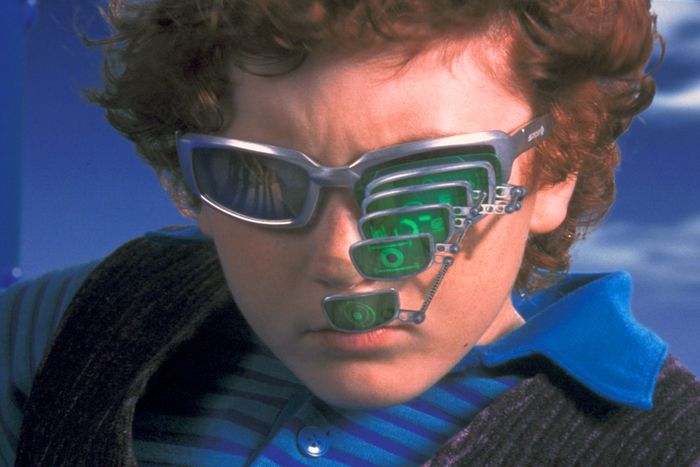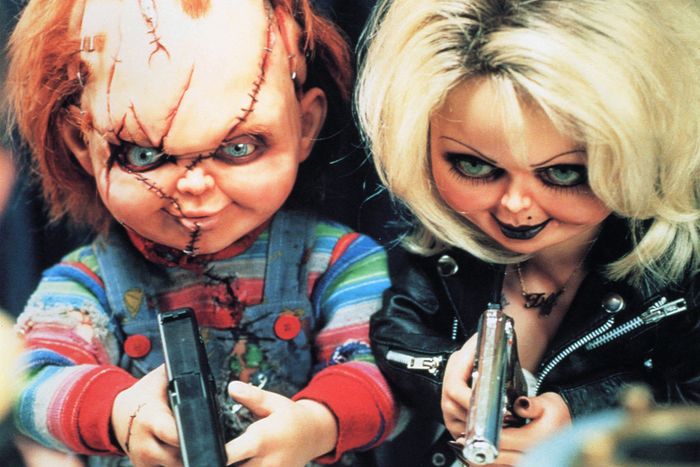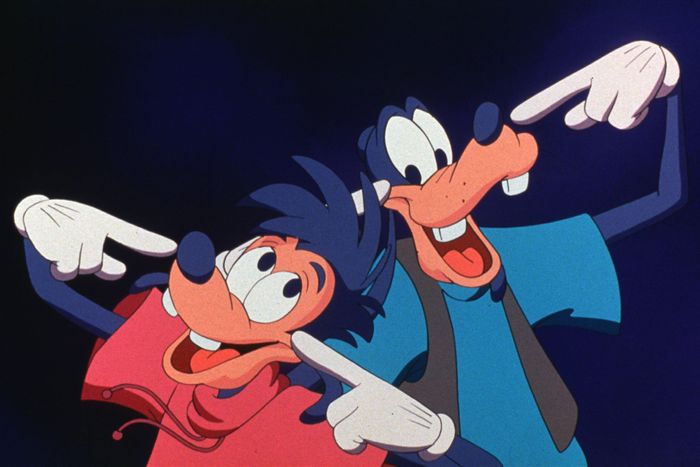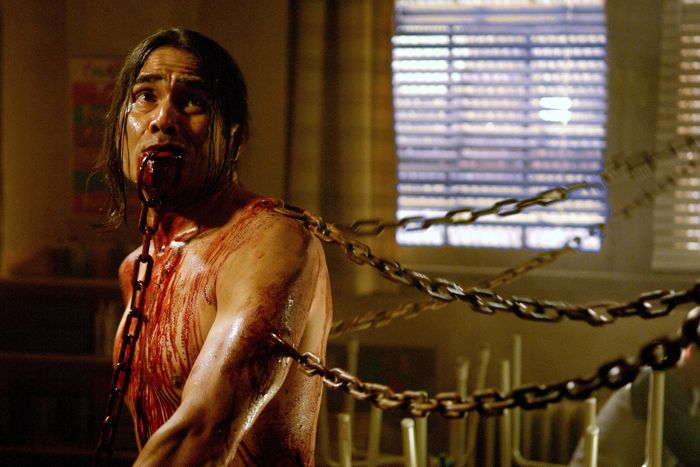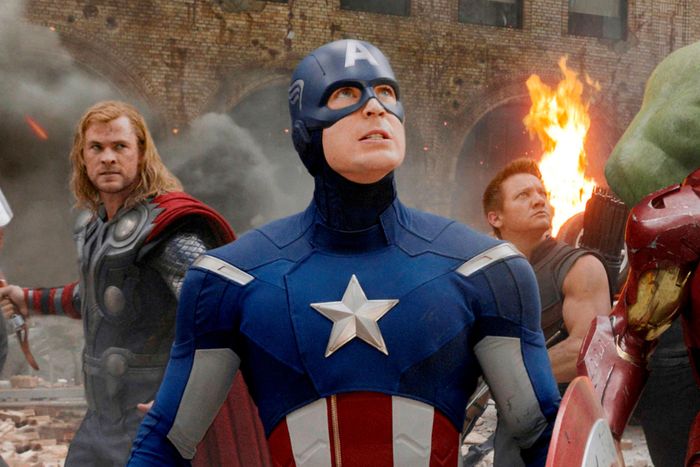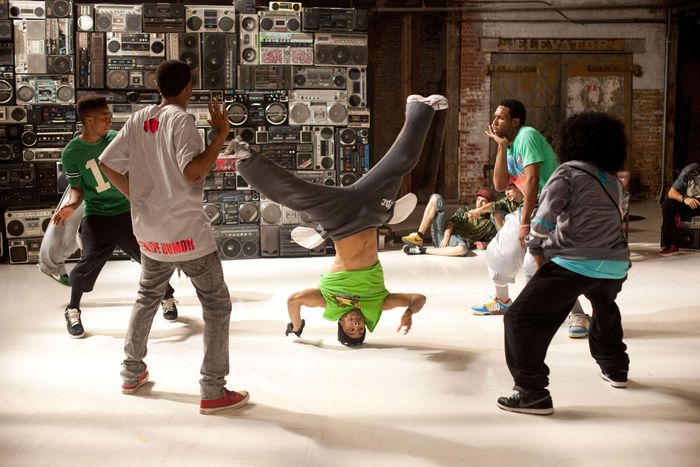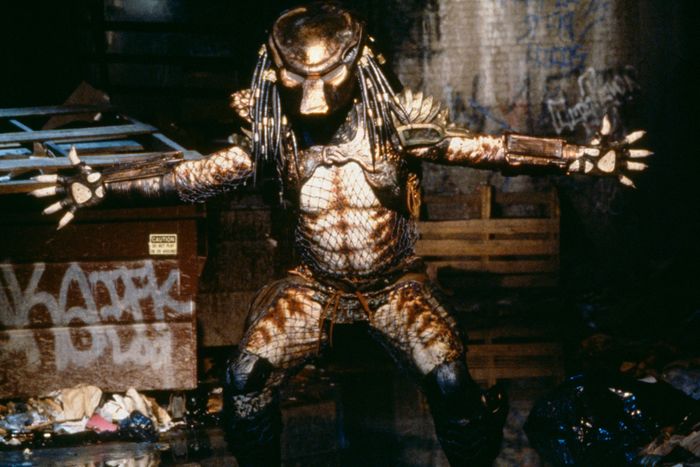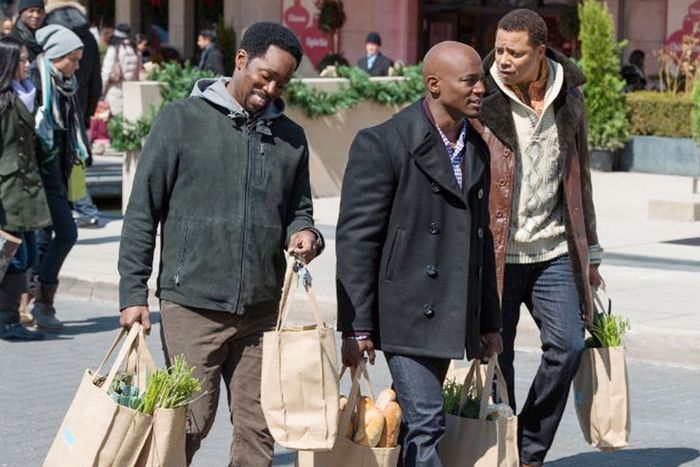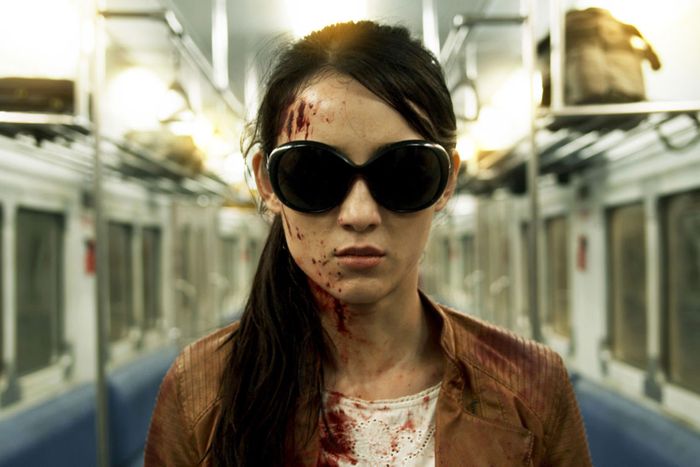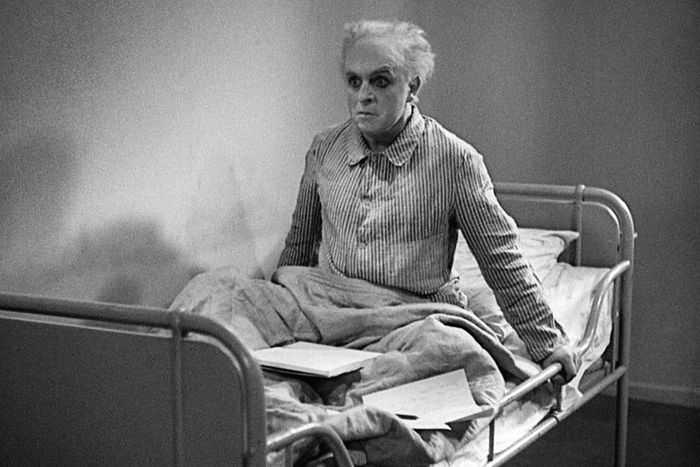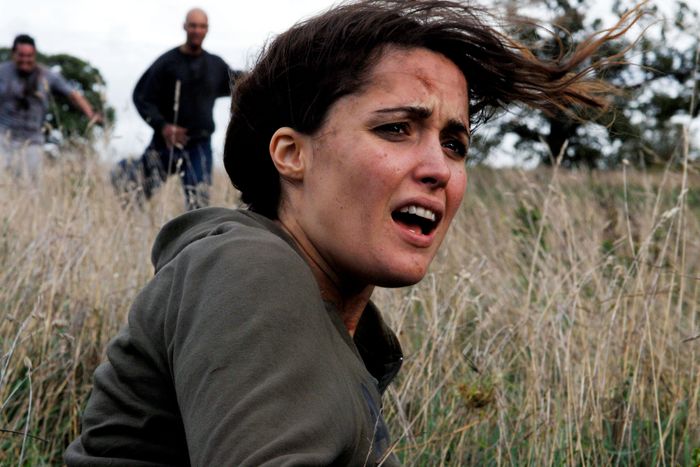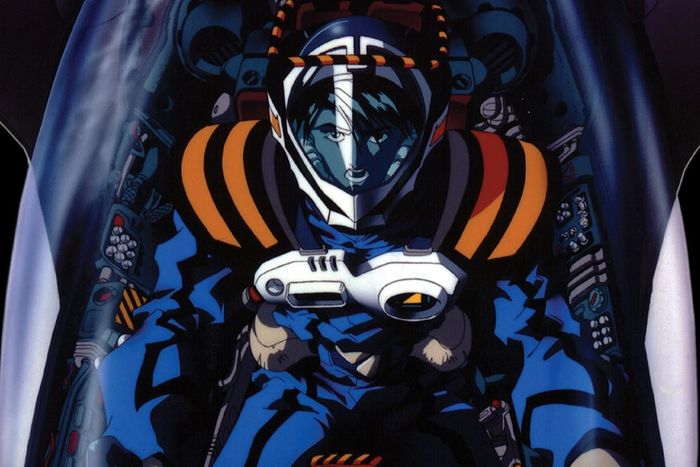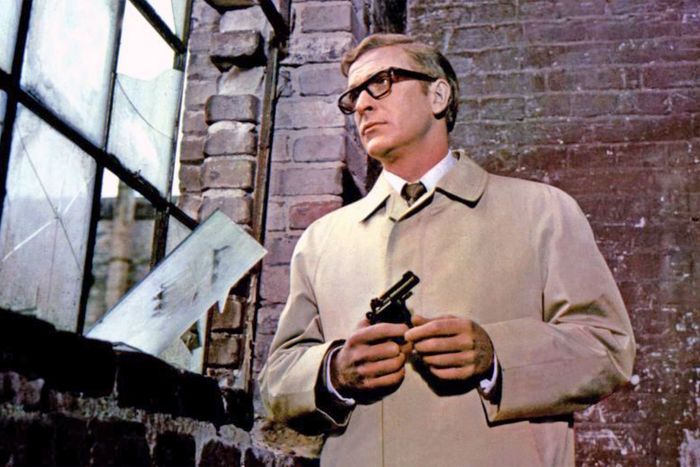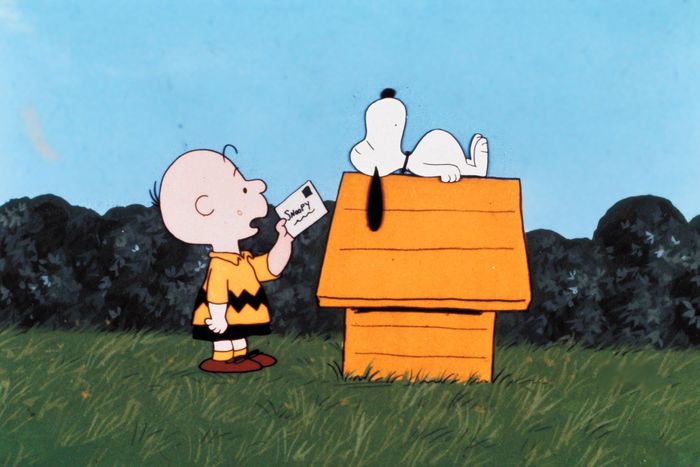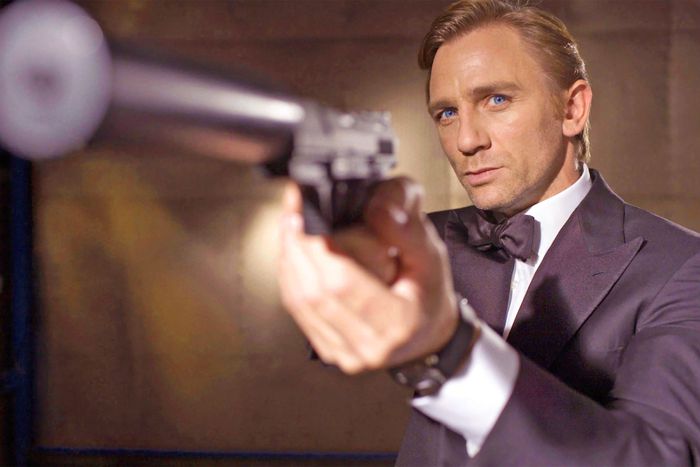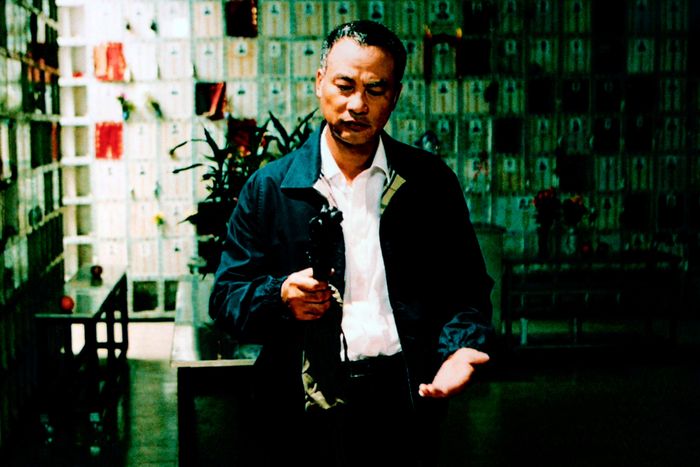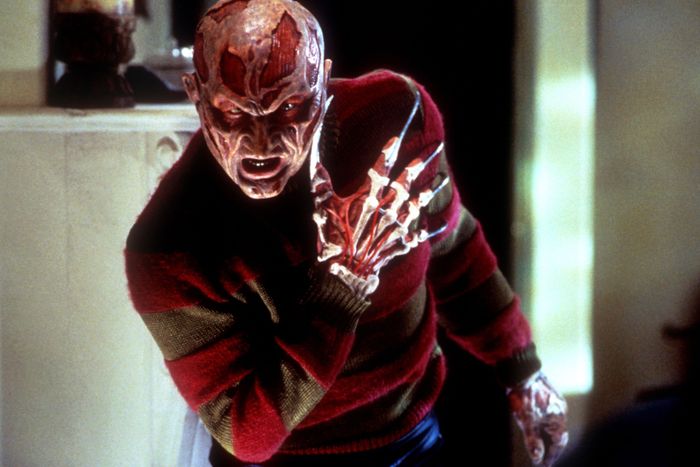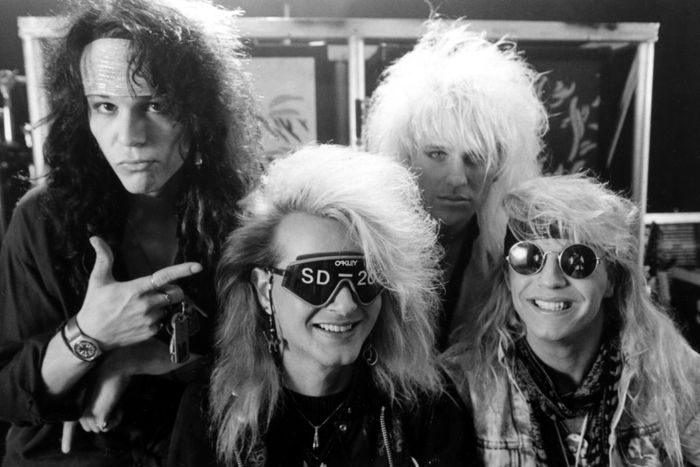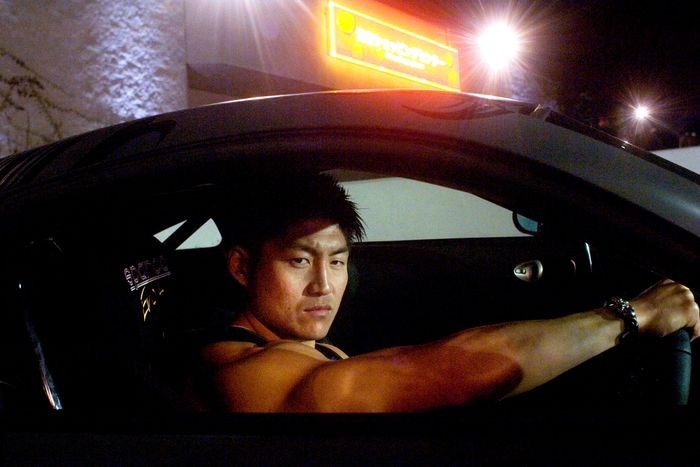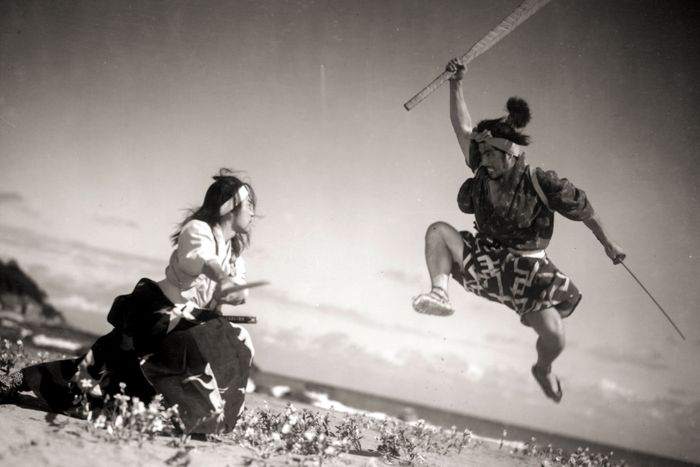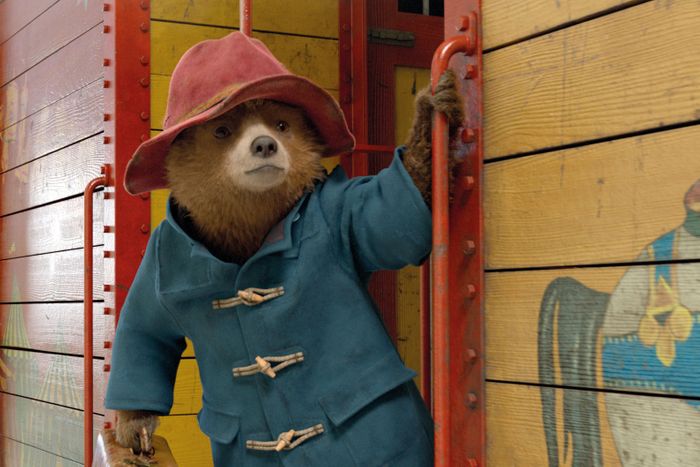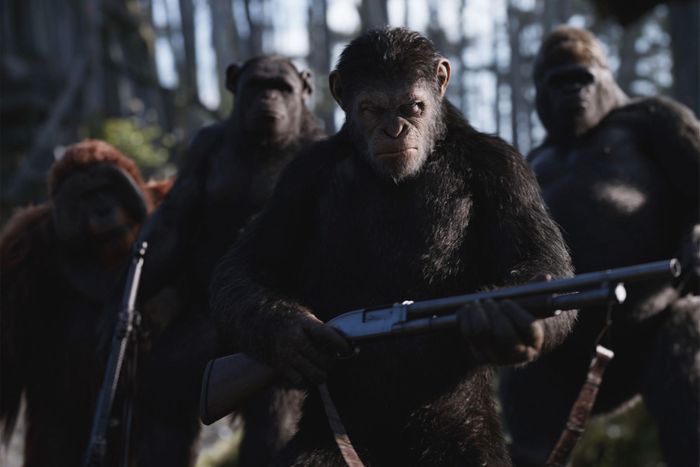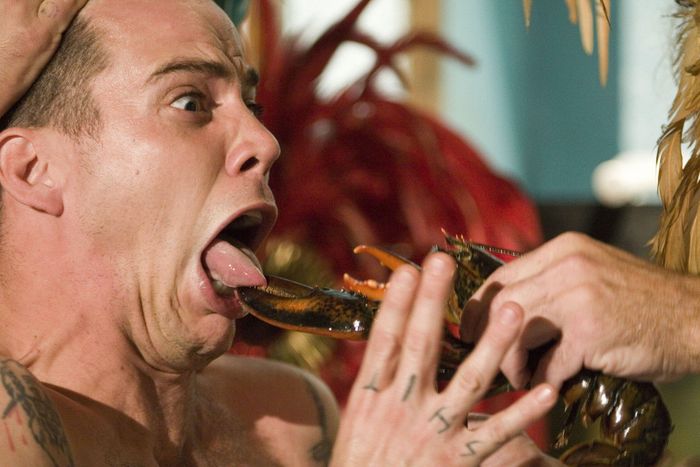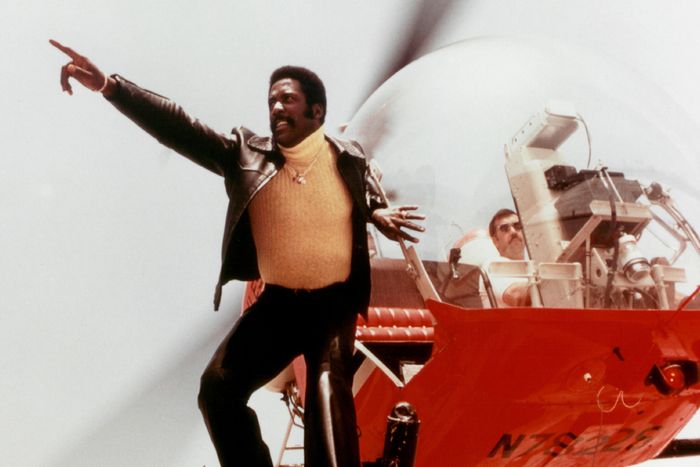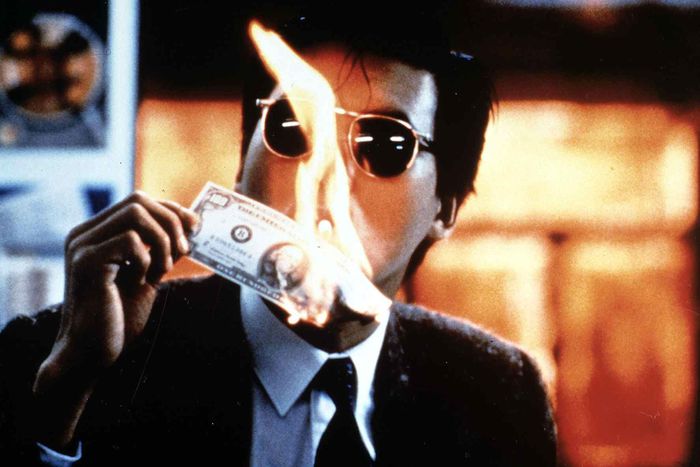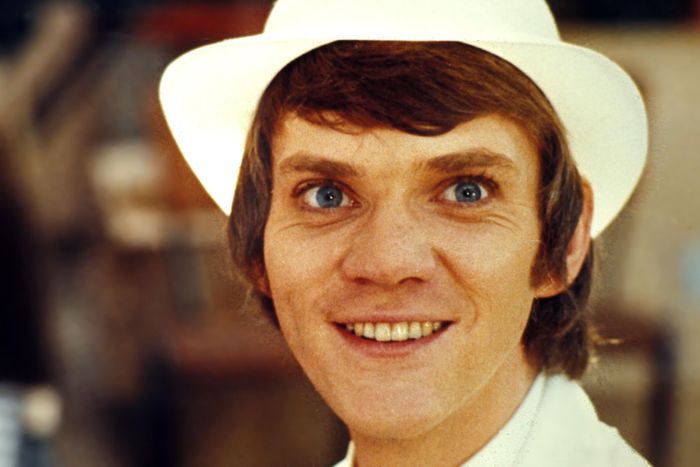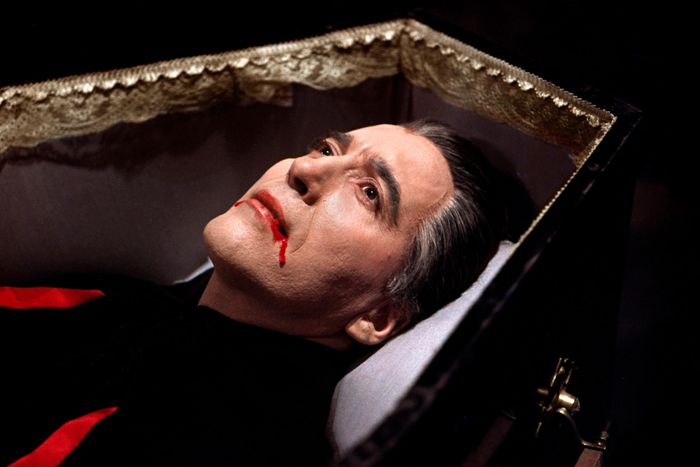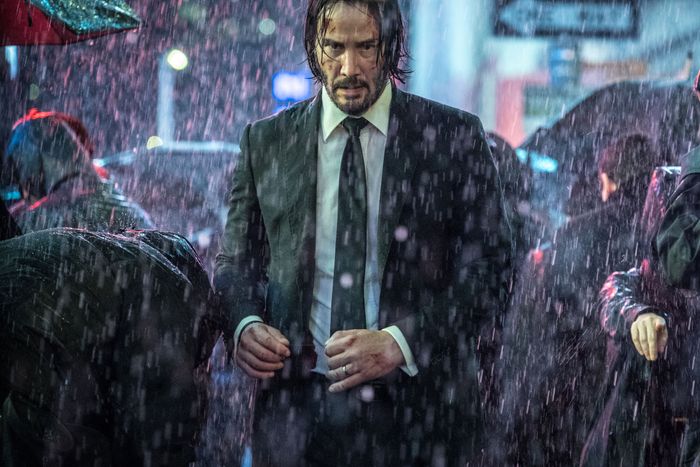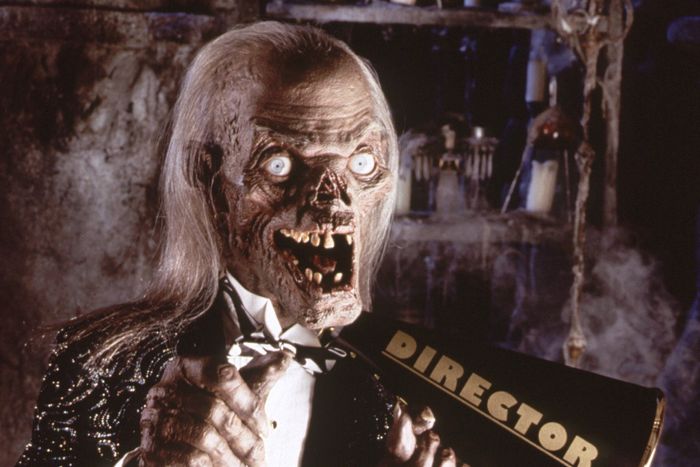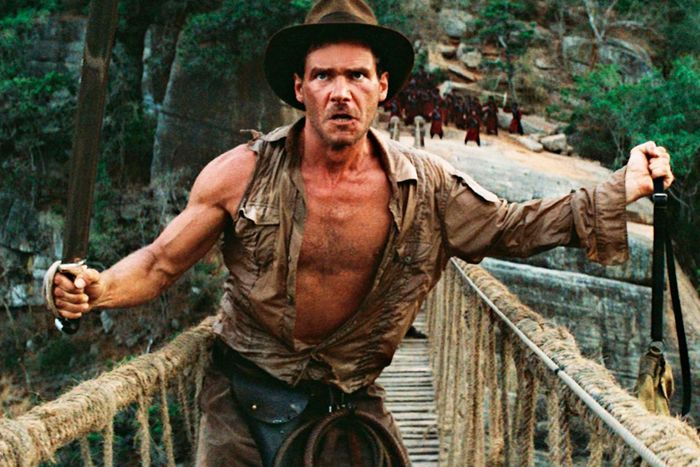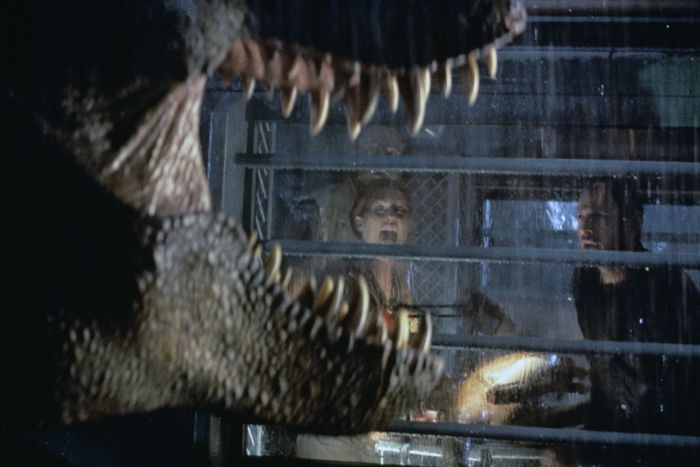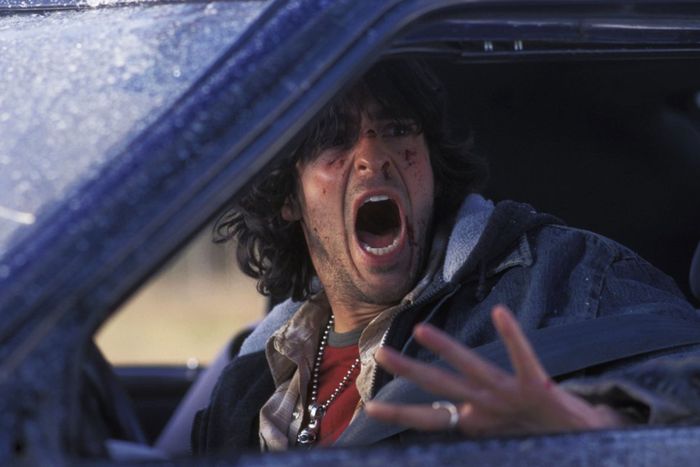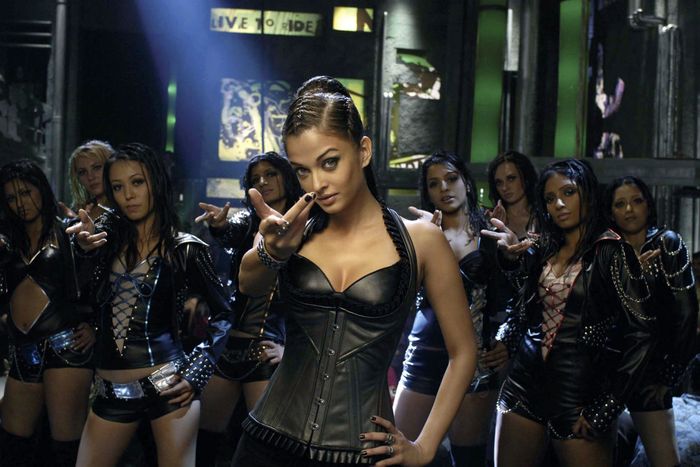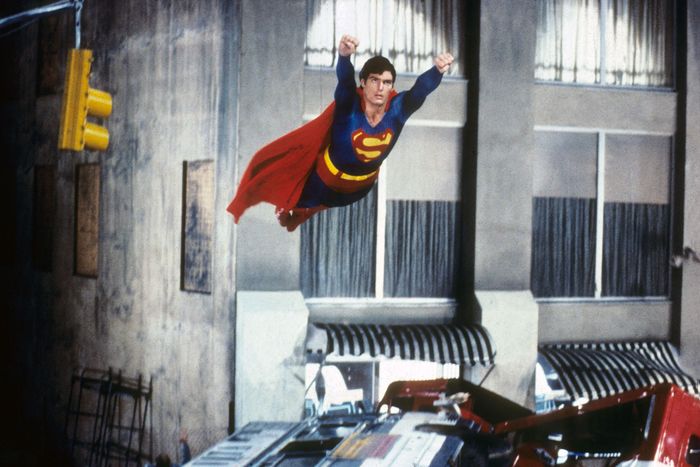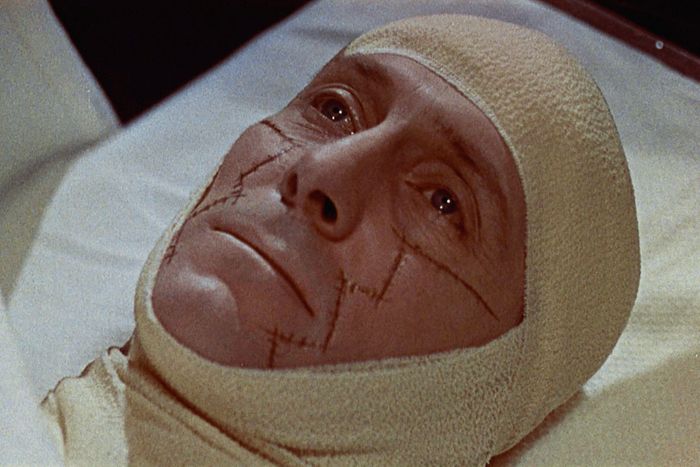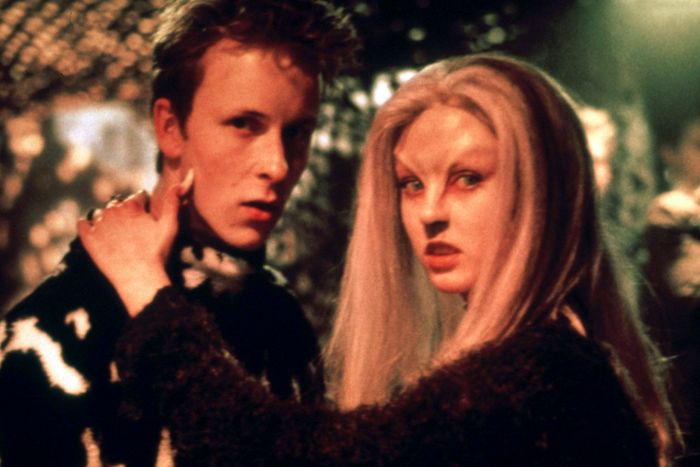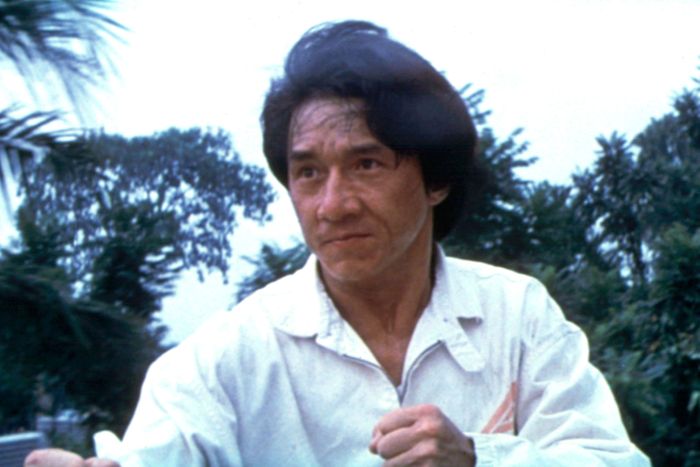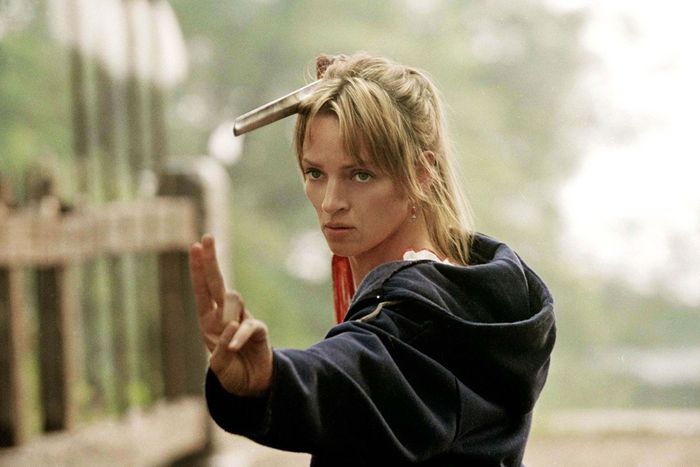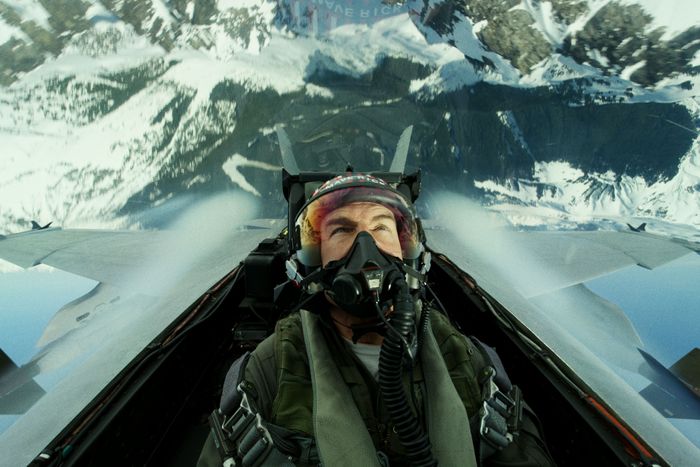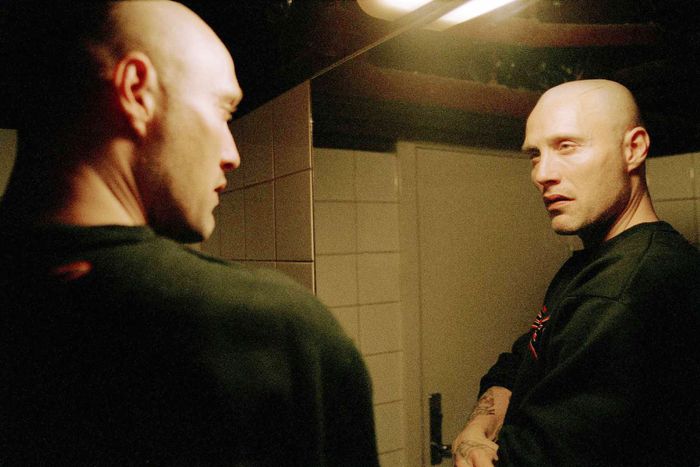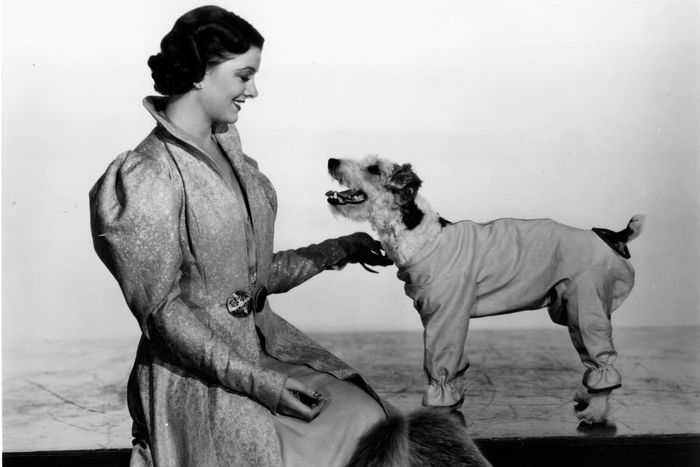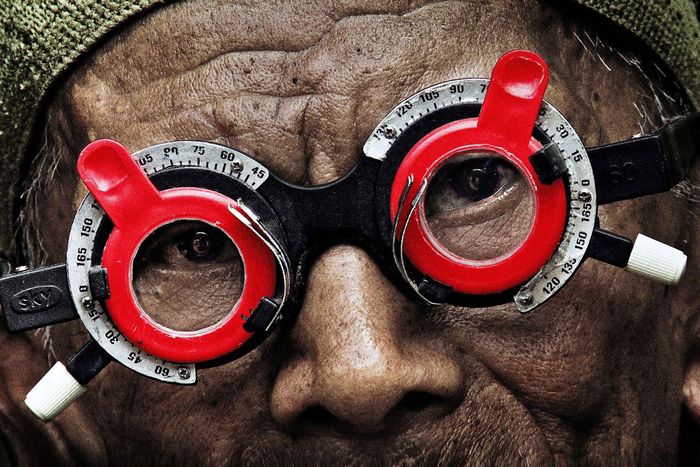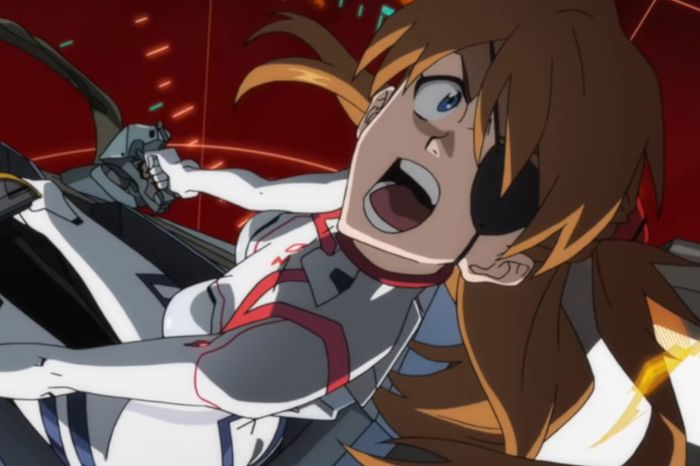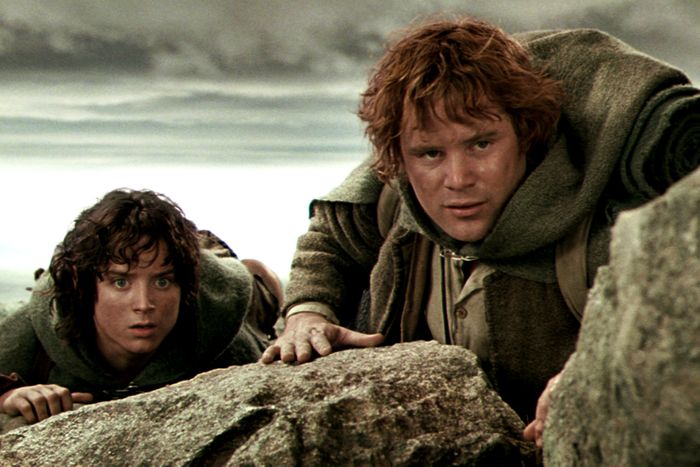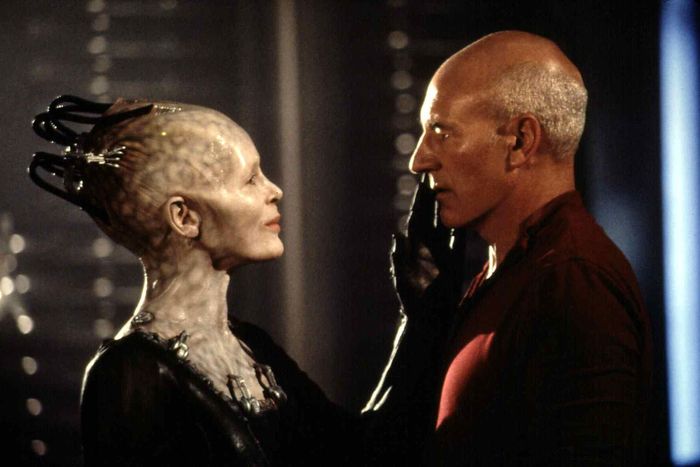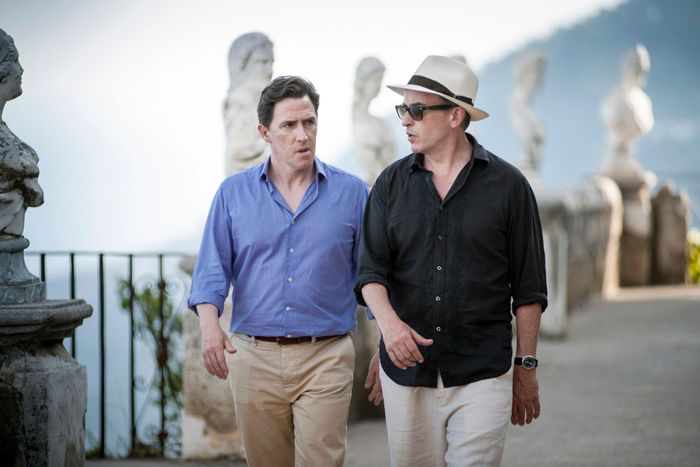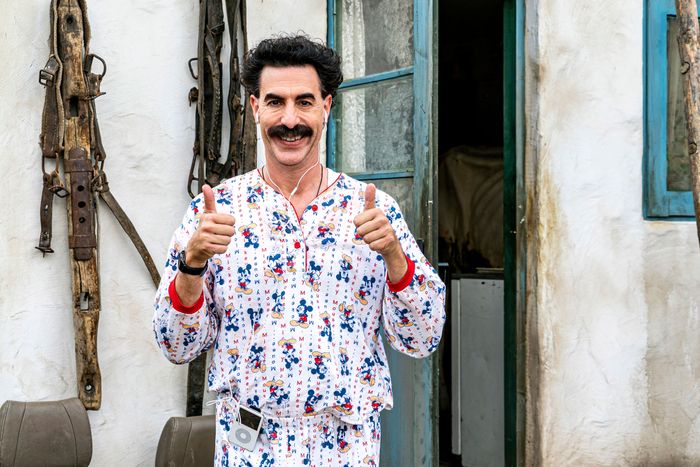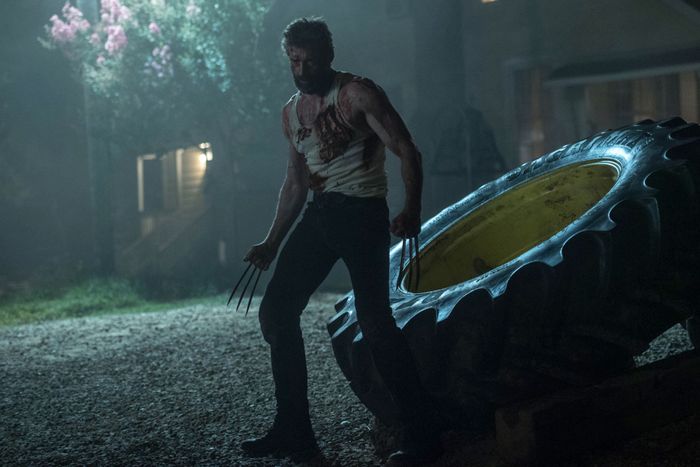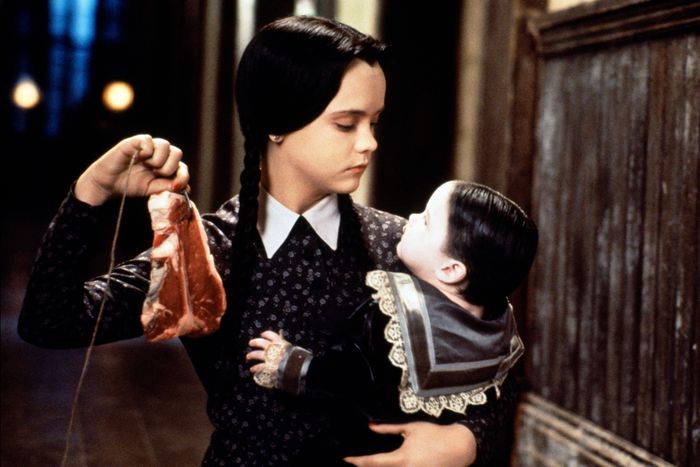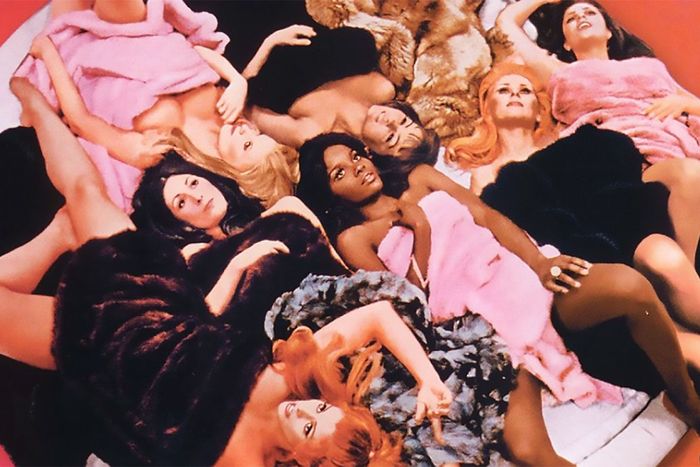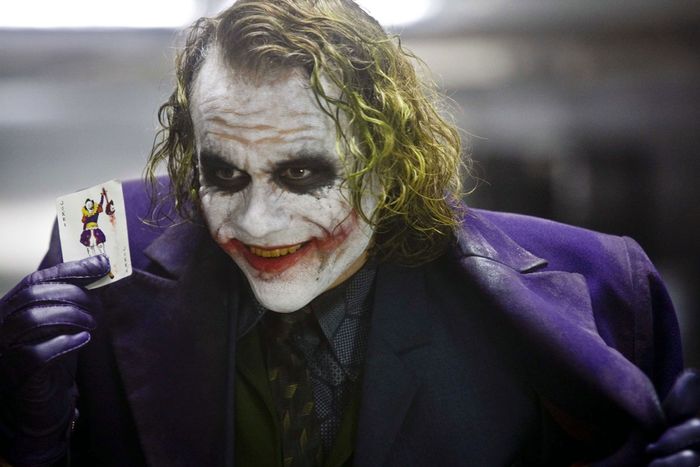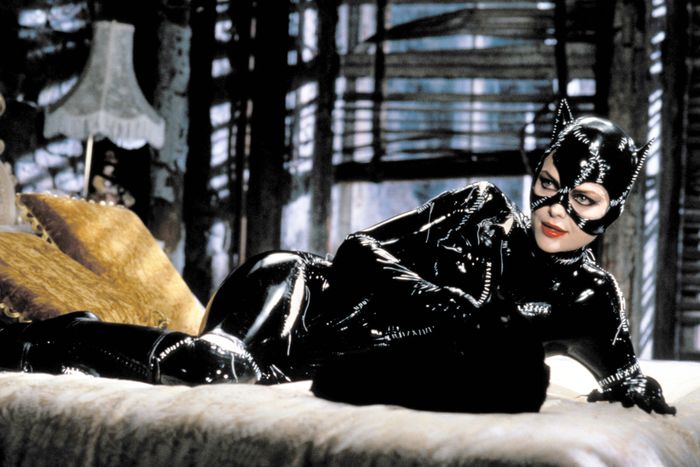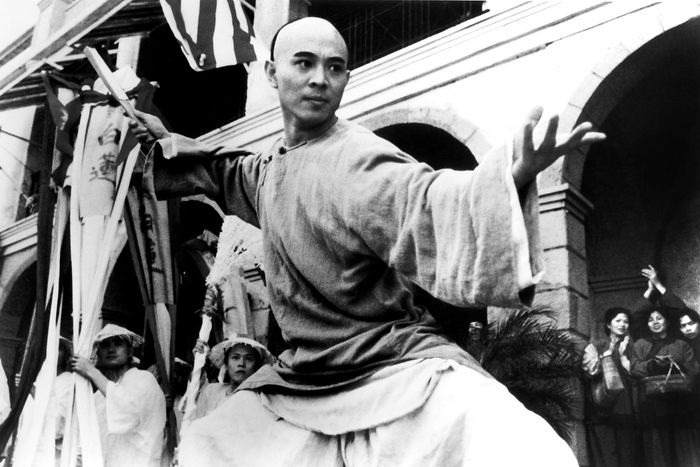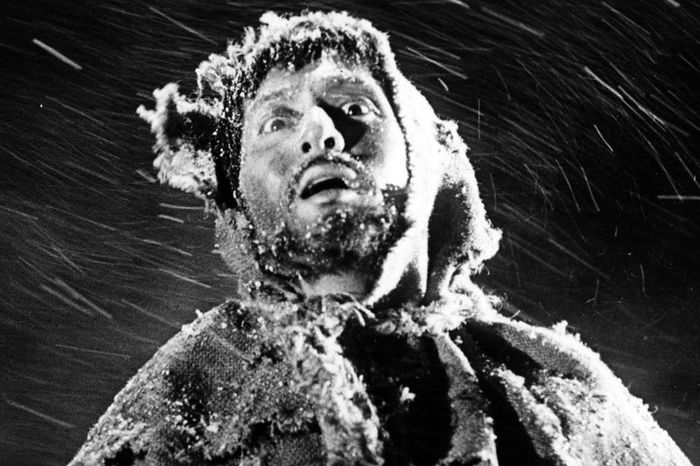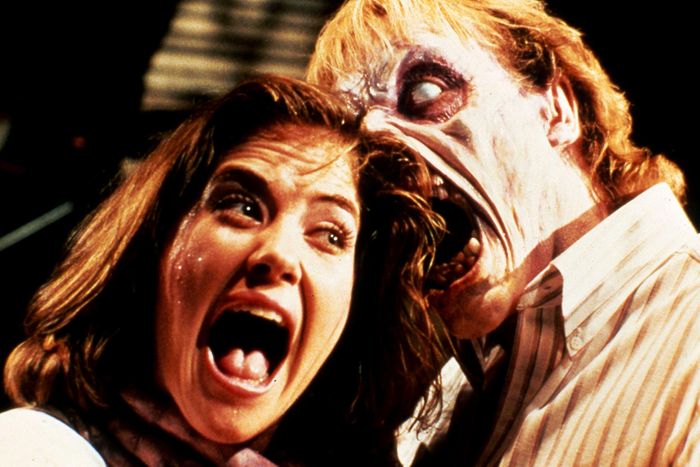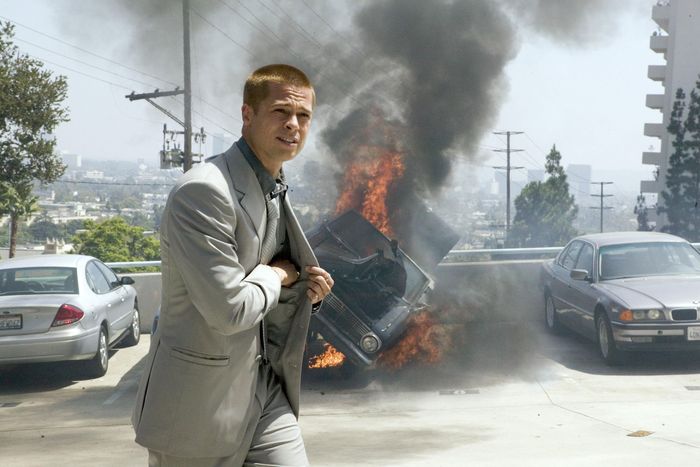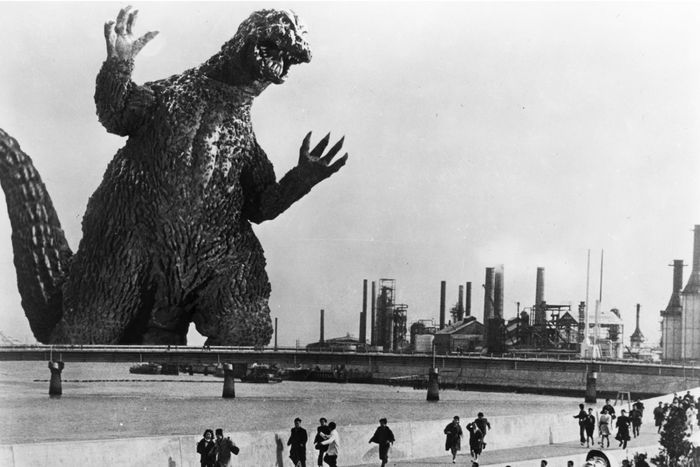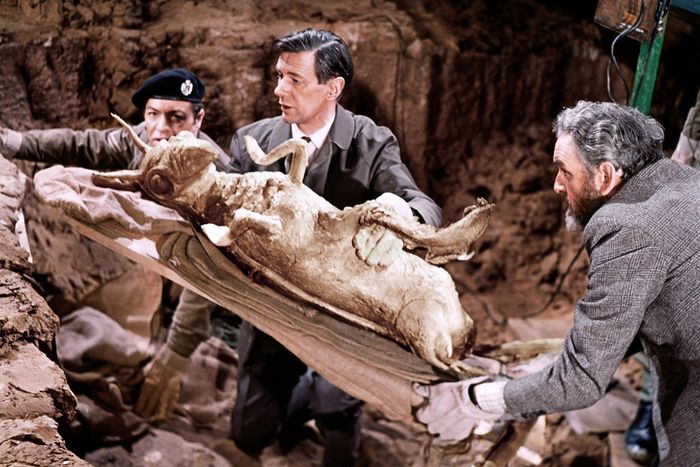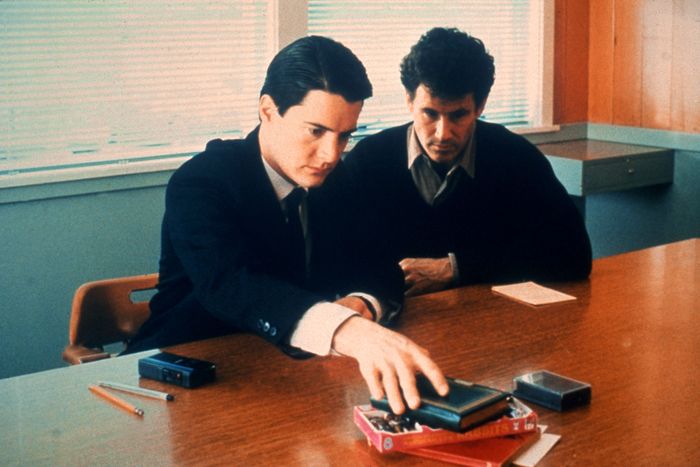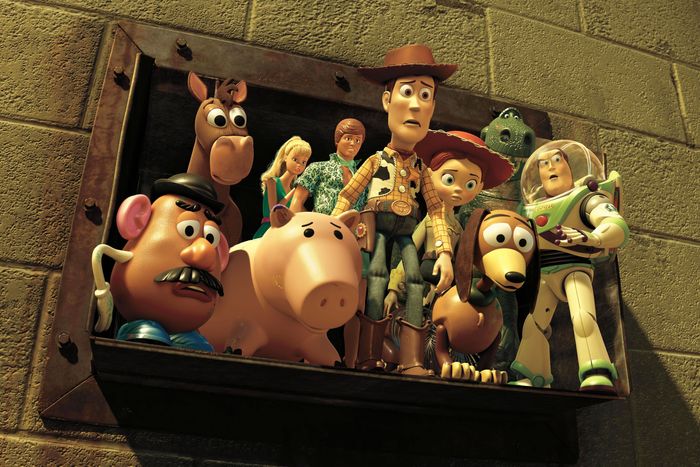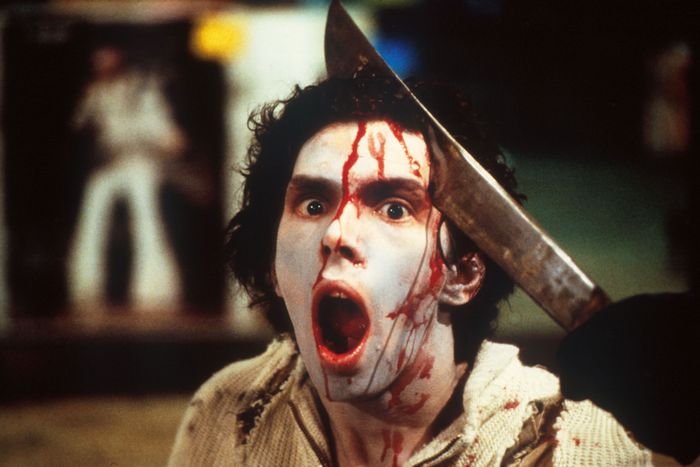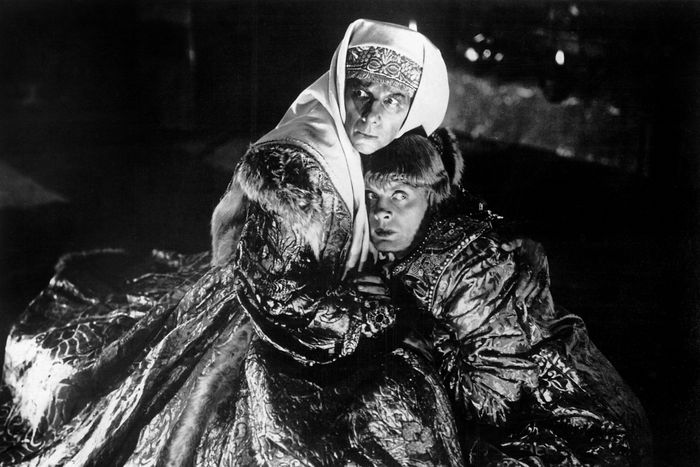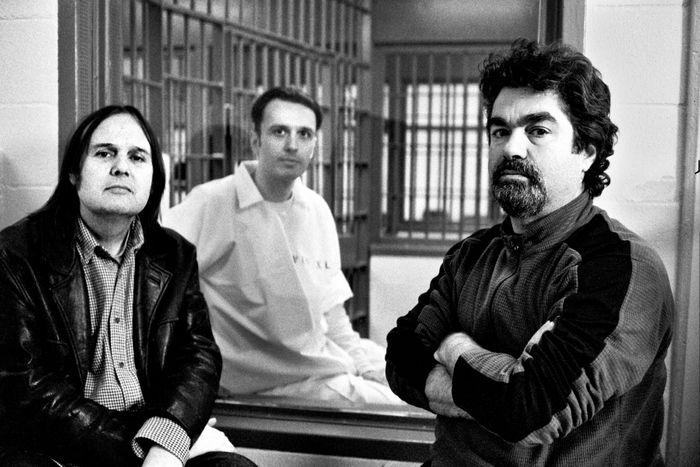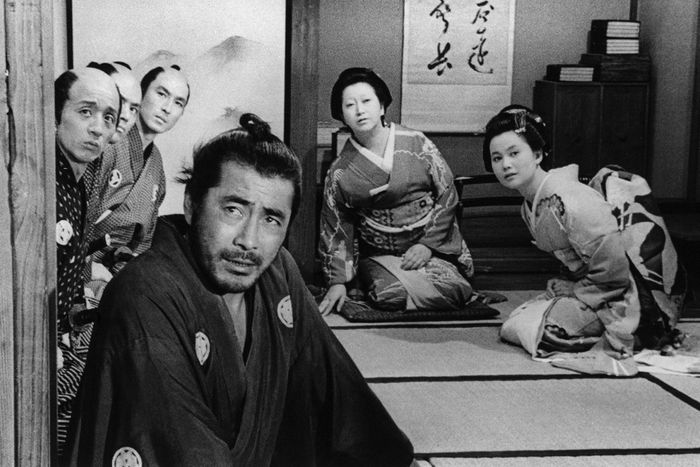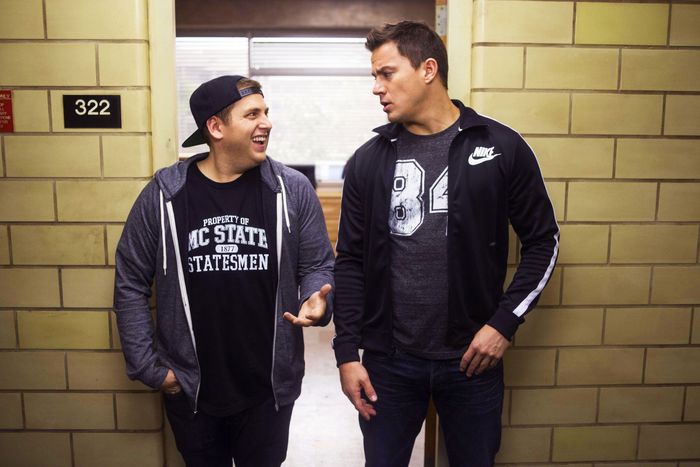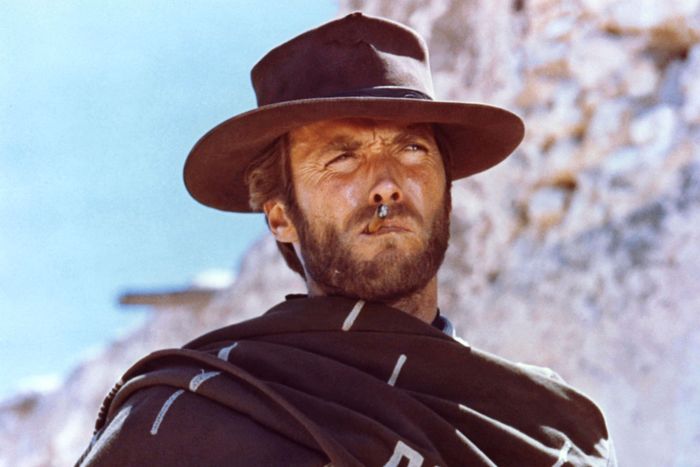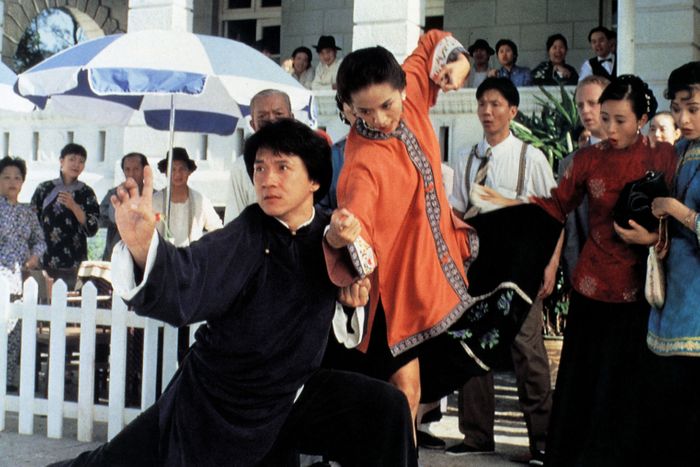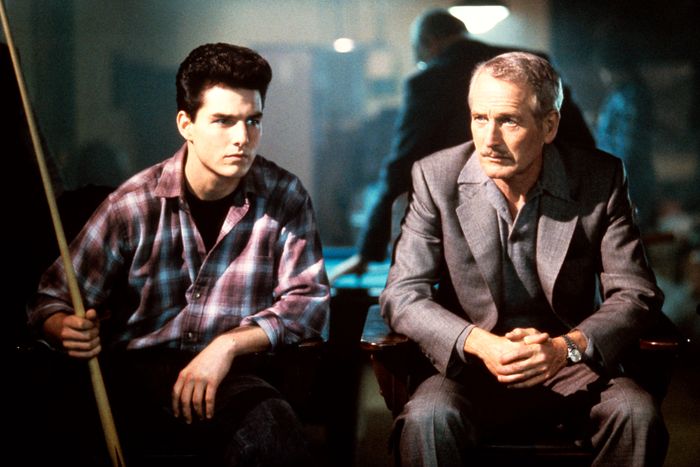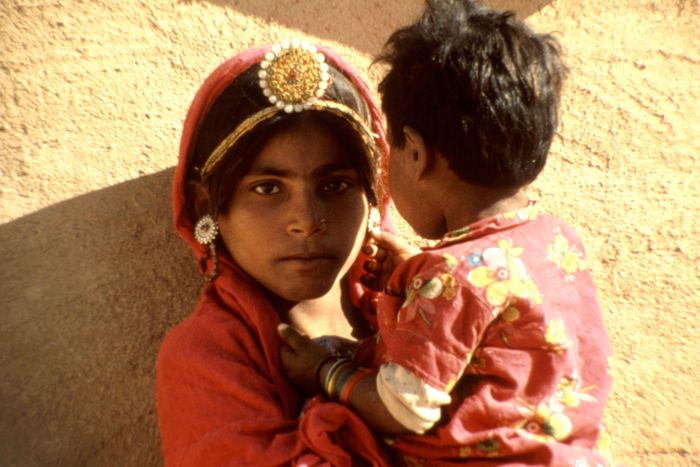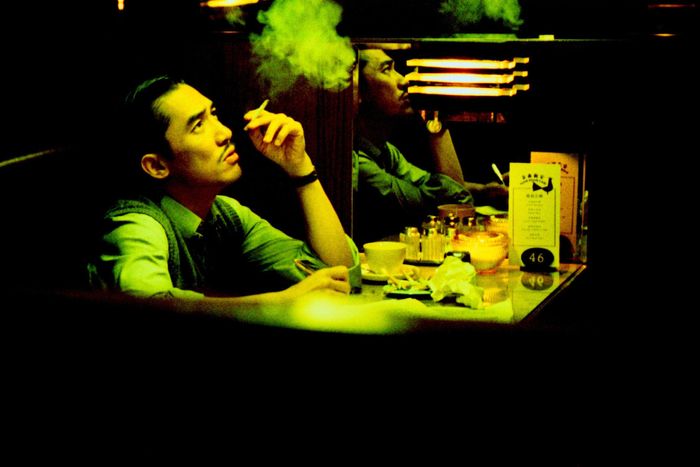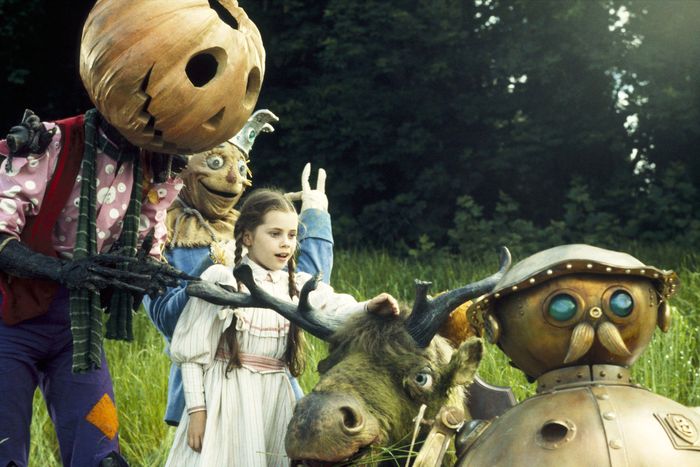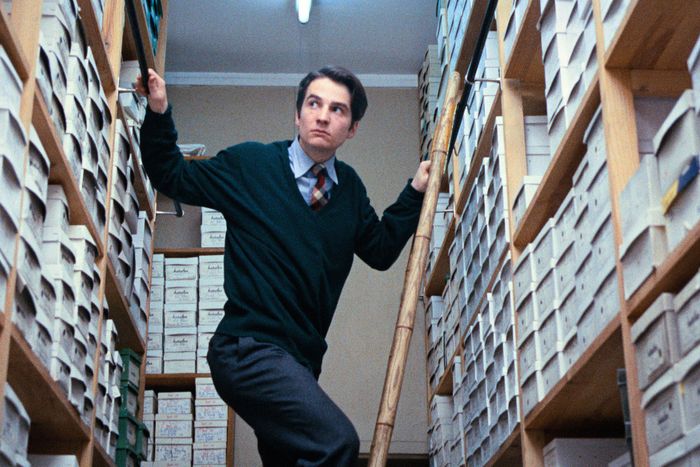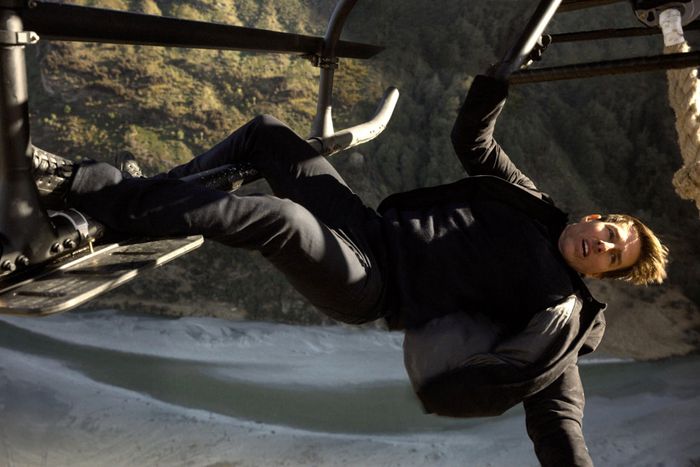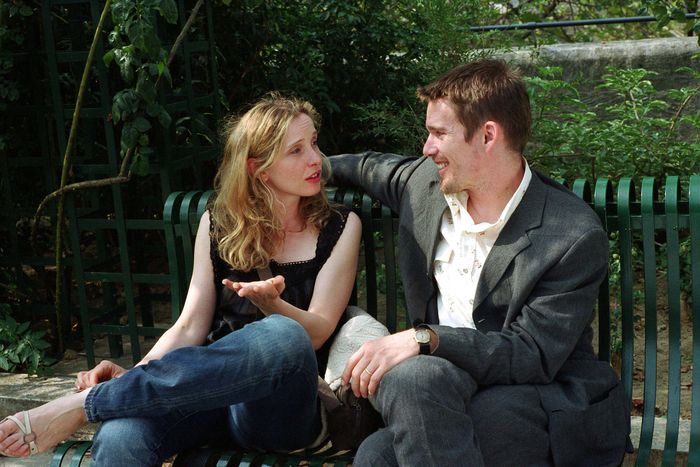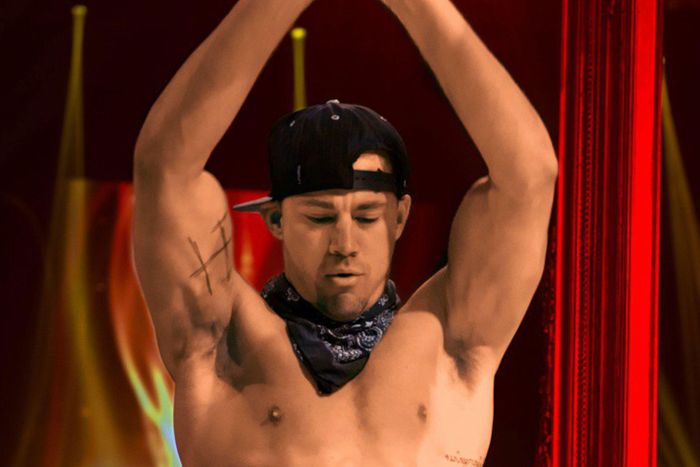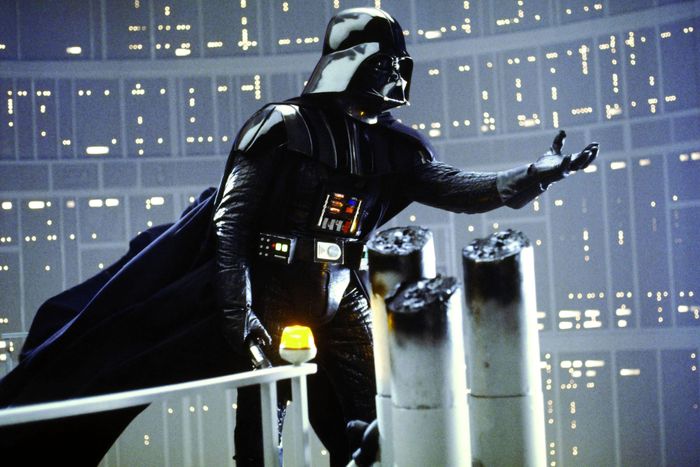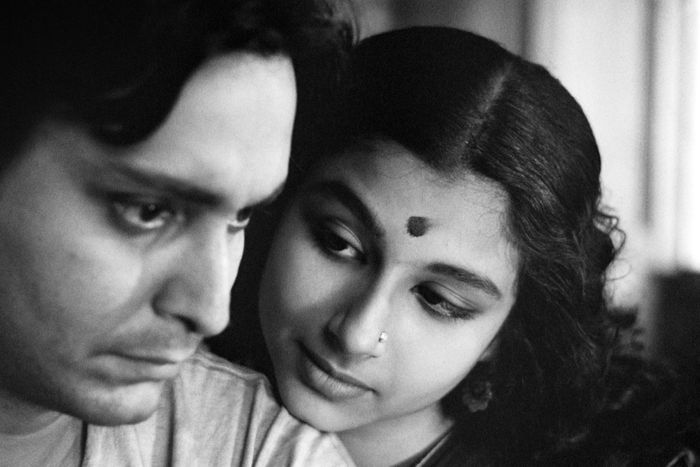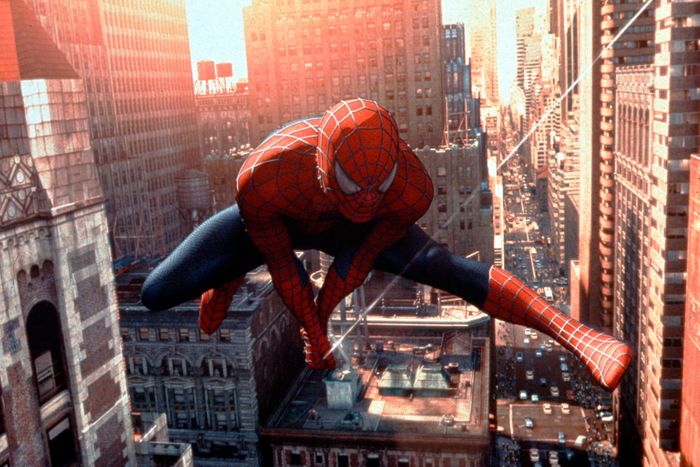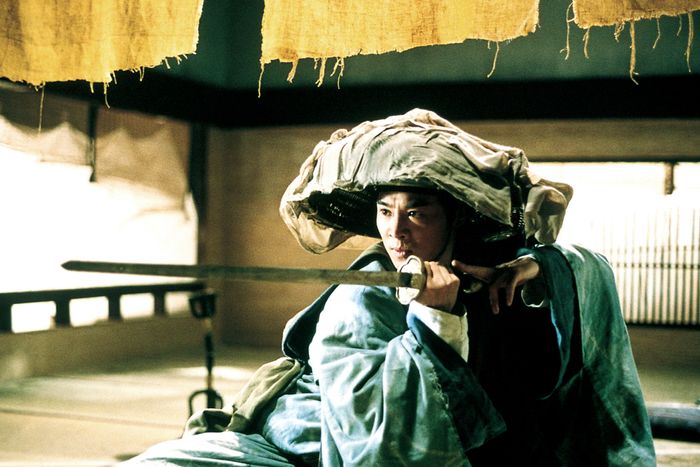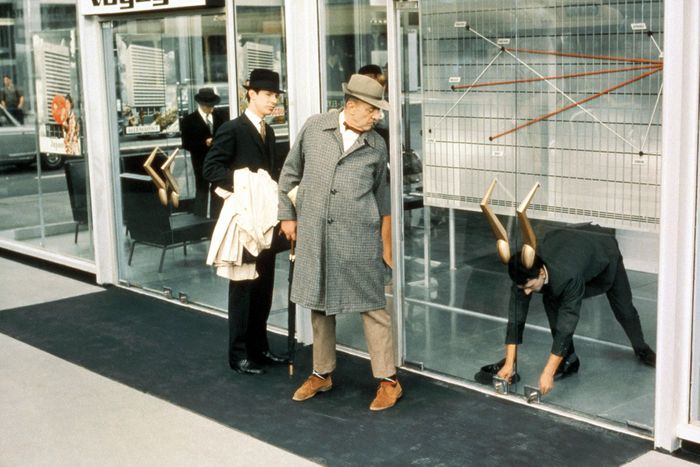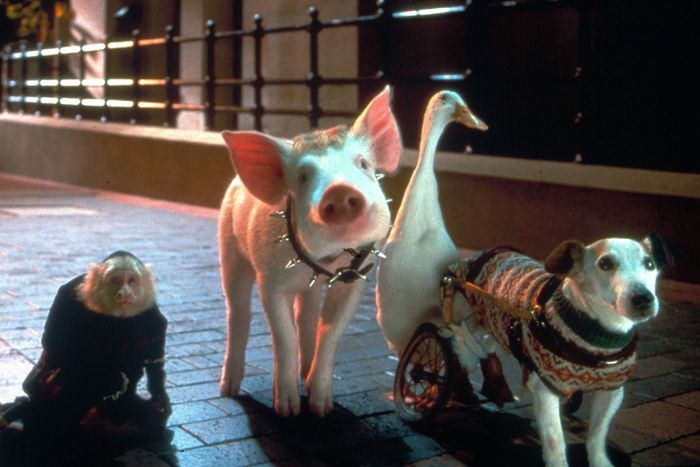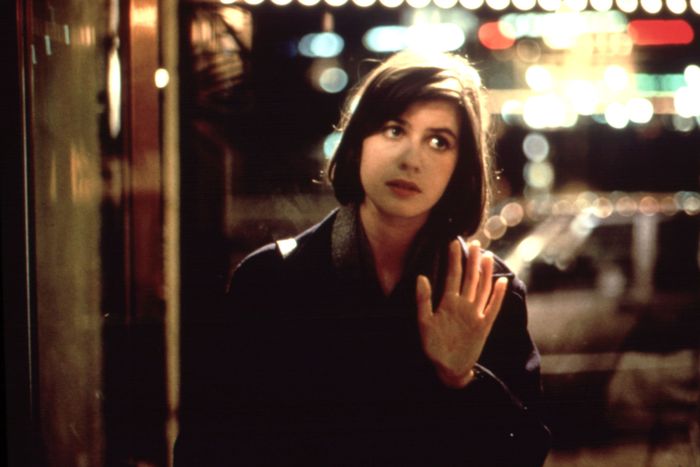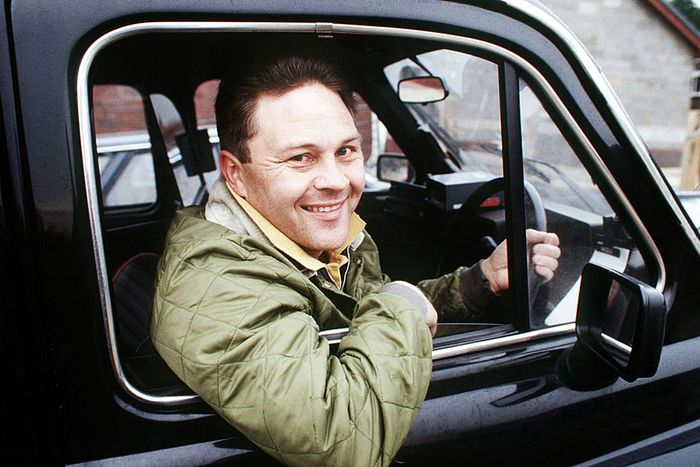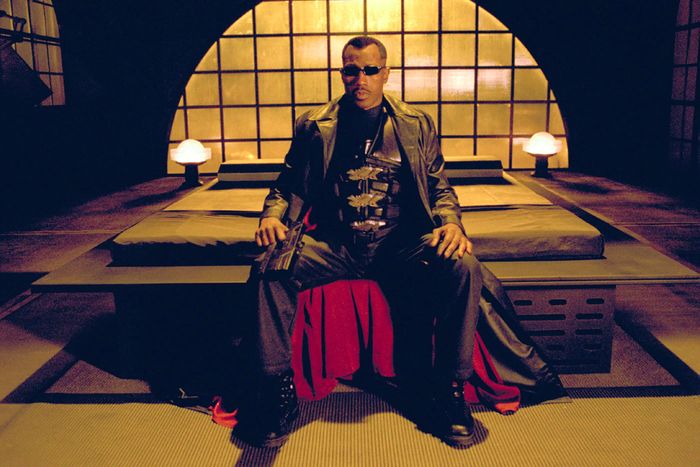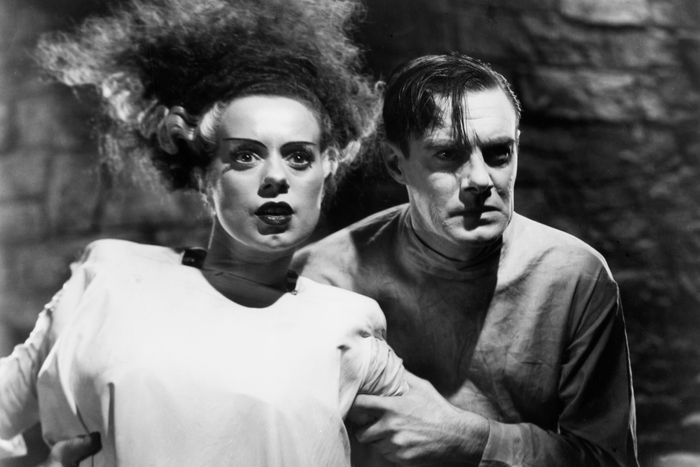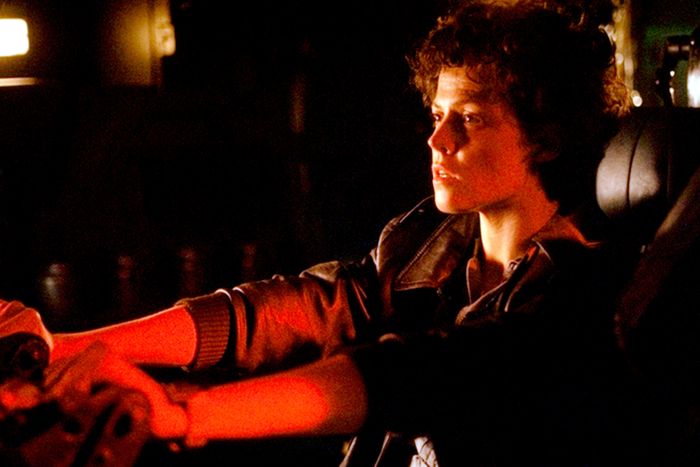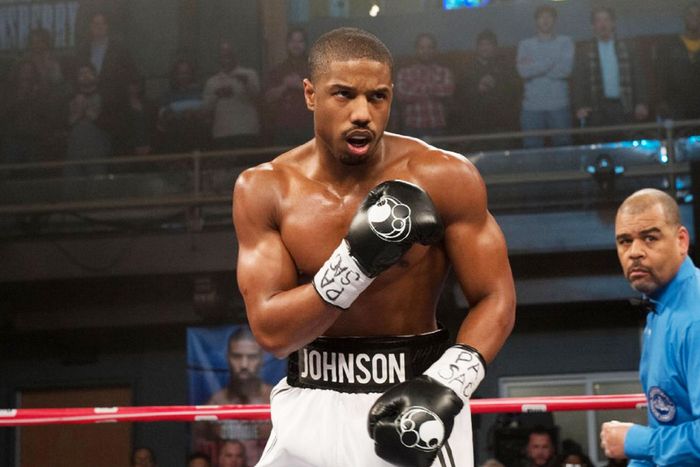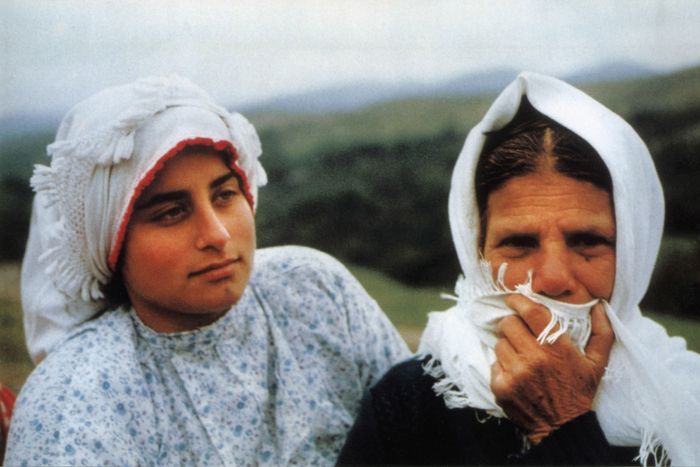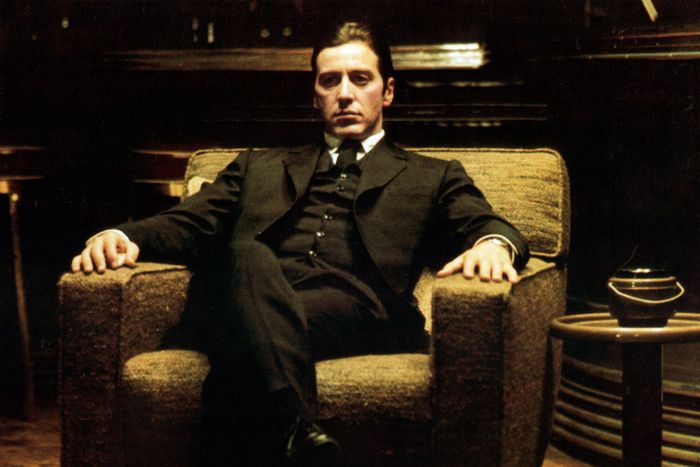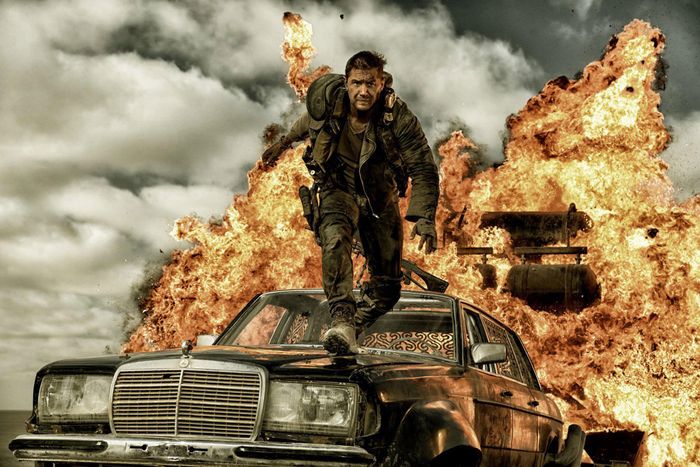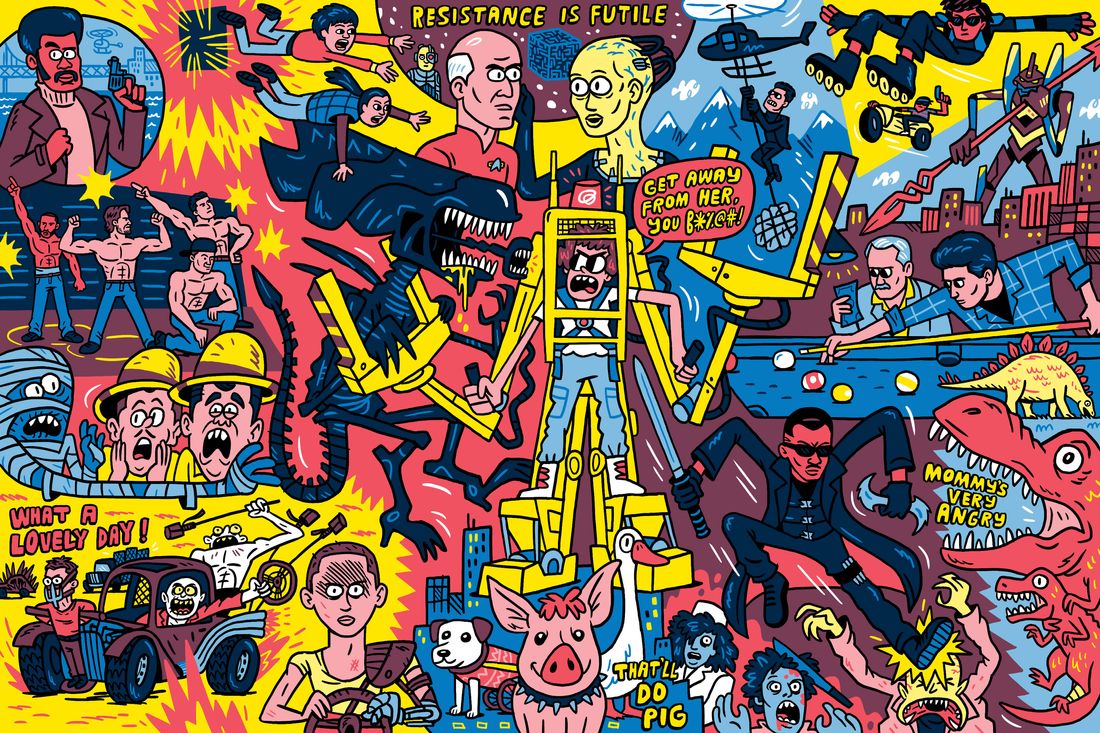
You loved the movie and you want more. The studio loves money, and they want more too. That’s how sequels come into existence — and this year we’re being bombarded by them, with new Sonic the Hedgehog and Fantastic Beasts installments already in theaters, and Top Gun 2, Hocus Pocus 2, another Jurassic World, another Downton Abbey, more Minions, more Thor, even more Marvel and D.C., and Avatar 2, among others, still to come. It’s easy to feel cynical about sequels, since they often seem like cash-grab retreads of their inspiration. But to reflexively dismiss follow-up films is to disregard the enormous potential they hold — in the right hands they can deepen the relationship we have with characters and the worlds they populate.
There’s an art to making a genuinely good sequel. Filmmakers must work within certain parameters to ensure consistency with the original entry, but the best ones treat existing hits (or flops, for that matter) as material that they can reinterpret, comment upon, or completely transform — and that’s when the continuation starts to become fascinating. For the purposes of this list, we’ve defined a “sequel” as any follow-up installment to an existing property. There are straightforward sequels; legacy sequels, featuring an actor from a long-ago hit returning to engage with a new generation in the film’s universe; stealth remakes, where a new filmmaker departs from the original work and changes the genre (from, say, a haunted-house film to a war film), tone (from poker-faced to borderline parodic), or even the level of self awareness (to the point of contemplating what it was about the original that inspired sequels to it in the first place); and interquels and prequels and titles you may well consider to be spin-offs, because what are these if not subcategories of sequels?
What we looked for from each film was the nature of its sequelness, or how much a movie builds off its audience’s preexisting relationship to a story or world. (In that sense, movie sequels to TV series counted.) Our single rule: Only one film per franchise could appear on the list — so the Broccoli family’s Bond world and the MCU get just one entry apiece, while the Batmans and Spider-Mans, having had multiple distinct incarnations, were eligible for repeat appearances. The final choices showcase sequels that introduce new ideas and behaviors and filmmakers who set precedent for not only their own franchises but for the genre worlds beyond them. But more often than not, we rewarded pure pleasure. The sequels that rank highest are those that managed to distract us from the inevitable commercialism in Hollywood and our cynicism about the future of moviegoing. They remind us that more is more can indeed be a righteous course.
Note: This list has been updated (and will continue to be updated) to account for new releases that warrant inclusion. To see where the most recent addition, Top Gun: Maverick, falls on the ranking, jump ahead.
.
(Skip to No. 1 on the list.)
102.
Happy Feet Two (George Miller, 2011)
Don’t let the singing penguins or the puffin who can’t stop blowing snot bubbles fool you: This is a movie from George Miller, the fourth sequel he directed and the last film he made before he set his sights on Mad Max: Fury Road. Happy Feet Two isn’t a perfect film; its narrative is muddled by disjointed scenes in the first half, and, as talented as he was, both of Robin Williams’s race-bent voice roles induce cringe. But as the sequel to a popular, original ’00s animated children’s film, it speaks to the trends that defined its era: The puns are relentless. (“Good-bye, krill world.”) The celebrity casting is dizzying. (Brad Pitt sells his role as Will the Krill, who wants to kill his way up the food chain, which is more than I’ll say about his scene partner, Matt Damon.) The soundtrack is built almost entirely off pop-music covers. (Hank Azaria does “Dragostea Din Tei”!)
For all that and more, Happy Feet Two was punished. Like a flightless bird, it infamously flopped at the box office. When the film works, though, it really sings. The crass jokes snuck in between touching father-son bonding moments hit all the right notes. The animation — specifically the vast, empty Antarctic backdrops — are worth the many, many pennies spent and lost. The climate-change message sorta holds up; this is a movie about preventing an ecological apocalypse in Antarctica, after all. You have to wonder: Would Miller have been so energized to make Fury Road had Happy Feet Two not flopped? Let’s not think about it too much. —Eric Vilas-Boas
101.
Devil’s Rejects (Rob Zombie, 2005)
Rob Zombie branched off from music into filmmaking with 2003’s House of 1000 Corpses — an aggressively violent homage to ’70s horror movies (from classics to grindhouse cheapies) that earned generally negative reviews. Undeterred, Zombie doubled down for this sequel, which resumes the exploits of the kill-happy Firefly family. The film showcases Zombie’s growing confidence as a filmmaker — both in the way he cements his violent western style and in his philosophical themes built into a story of attempts at revenge that escalates into a cycle of cruelty that threatens to engulf everyone in the Fireflys’ orbit (possibly the entire state of Texas). Zombie packs the film with homages and cameos and with a supporting cast that includes everyone from comedian Brian Posehn to cult star Mary Woronov, but he refashions the existing story universe to create a distinctly original vision that made even those who dismissed his first film take notice. —Keith Phipps
100.
Mamma Mia! Here We Go Again (Ol Parker, 2018)
The first installment of Mamma Mia! is its own accomplishment, not least for featuring Meryl Streep doing the splits in midair in a pair of overalls. But Mamma Mia! Here We Go Again is a whole universe unto itself, so important to the international cinematic canon that this is now the third time I am writing about it for this very website in as many years. This is because MM!HWGA is about nothing less than the Technicolor insanity of life itself. It crams the plot, character count, and themes of at least 12 films into one. It is about how sometimes you are Meryl Streep doing the splits in midair in a pair of overalls, and sometimes you are Meryl Streep coming back as a ghost at your granddaughter’s baptism. It is about being slutty in Europe. It is about death. It is about time travel. It is about Cher. It is about the Mother Wound and healing intergenerational trauma. It is about aging; it is about making fertility decisions. It is about having good beach hair. It is about the challenges of balancing entrepreneurship and long-distance relationships. It is about shawls. It is about friendship over decades. It is about how it is inherently funny to see old men in glittery spandex. It is about forgiveness and horses. It’s about liminality. It is about unpredictable weather patterns in the Mediterranean. It is about temporarily shaking off the dark, powerful specter of Lars von Trier’s filmography. Most of all, it is about egolessness and joy, about how sometimes life throws you a bone and somebody pays you actual money to get really tan and drunk with Christine Baranski and Pierce Brosnan on a fictional Greek beach again. —Rachel Handler
99.
The Matrix Reloaded (The Wachowskis, 2003)
A little over halfway through the Wachowski sisters’ follow-up to their game-changing The Matrix is a freeway chase of glorious sensibilities. Cars flip like gymnasts and crack apart as if made of glass. The chase reaches operatic heights when Trinity gets on a motorcycle with the character known as the Keymaker holding on for dear life. The thumping score by Don Davis brings us to the apotheosis of cinematic rapture. Of course The Matrix Reloaded continues the journey from the first movie, bringing back the main crew along with some new additions, all fighting the machines in hopes of protecting the city of Zion. The film can get messy, enamored with its philosophy. But at its best it’s a love story revolving not just around the tender-hearted savior figure Neo, but around community and the worth of humanity itself. The Matrix Reloaded is what happens when directors get a larger palette with which to play. It’s bombastic and easy to love, keeping audiences and its beloved characters on the precipice of disaster. —Angelica Jade Bastién
98.
The Vampire’s Coffin (Fernando Méndez, 1958)
1957’s El Vampiro was one of the signature films of the Mexican horror boom of the 1960s, and it was so successful that director Fernando Mendez and producer Abel Salazar swiftly produced this sequel. Also returning was German Robles, who had made such a charismatic and elegant monster in the first film; his is still one of the all-time great portrayals of a vampire onscreen. You can see that this one was a quickie. The first film was drenched in creepy rural atmosphere, while this one is set mostly in a curiously empty, blank-walled hospital and, well, a basement. But it’s loads of fun in its own right. It has an unhinged sense of humor, for starters — as if the filmmakers are constantly winking at us not to take this whole sequel thing too seriously. And not unlike the first film, The Vampire’s Coffin is enormously creative in its use of low-budget effects. Watching these movies, you realize that an effect need not look realistic to send shivers up your spine. It’s wonderful what Mendez could do through just the simplest of cuts. —Bilge Ebiri
97.
Abbott and Costello Meet the Mummy (Charles Lamont, 1955)
Brand synergy. Crossover events. We think we’re at a boiling point for this stuff now, but Disney/Fox/Marvel/Star Wars/The Simpsons/Spider-Man has nothing on the hottest collab of the mid-century: Universal Classic Monsters x Abbott and Costello. Between 1941 and 1955, Bud Abbott and Lou Costello starred in six monster mash-ups for Universal Studios — getting wound up in hijinks opposite the horror greats: Bela Lugosi’s Dracula and Lon Chaney Jr.’s Wolf Man (in, oddly enough, Abbott and Costello Meet Frankenstein); and Boris Karloff (not as Frankenstein but Abbott and Costello Meet Dr. Jekyll and Mr. Hyde). Their vaudevillian slapstick translated well into the heightened worlds of horror — the nonsensical nature of both complementing each other. The duo’s final creature feature was Abbott and Costello Meet the Mummy, in which they get themselves mixed up in a plot to steal sacred treasure from an Egyptian tomb. What the two blabbering goofballs lack in pith they make up for in pith helmets as they use ancient archaeological ruins as a playground for gags; some comedic business about “taking your pick” between a shovel and a pickax is a “Who’s on First?”-style libretto of misunderstanding.
The upside of an Abbott and Costello film at this late stage of their partnership is that they’ve worn into the rhythms of their banter like they share one mind. The downside is that, by the mid-50s, their ’30s-vaudeville-style routines were beginning to gather dust and grow a little creaky — fitting for a mummy movie. Here, they weren’t acting against Chaney or Karloff but rather their studio stunt double Eddie Parker. Not to mention the Orientalism of it all. This sequel was the end of more than one era; it was the penultimate Universal Classic Monsters film (a Creature from the Black Lagoon threequel came out in 1956). With Mummy, Abbott and Costello landed the punch line. —Rebecca Alter
96.
The Souvenir: Part II (Joanna Hogg, 2021)
Did The Souvenir really need a follow-up? Joanna Hogg’s art-house memory piece ended pretty definitively with the death of one half of its central couple. There’s a reason they didn’t make a sequel to Titanic, you know? And yet, once Part II hit screens, the reason for its existence became self-evident. The Souvenir was Hogg turning her old love affair into art; its sequel sees her stand-in Julie (Honor Swinton Byrne) stumbling through her own attempts to adapt the story to film. It is, essentially, a movie about how hard it was to make The Souvenir, and Hogg offers an unsparing — but not unkind — view of her youthful missteps. (Pressed to explain her creative decisions to her cast and crew, Julie can only offer a feeble “That’s how it happened.”) Part II shares a time-capsule tactility with its predecessor, and it has the benefit of being funnier — especially when Richard Ayoade pops up as a filmmaker with the bitchiest perm in London. The film’s slyly triumphant ending makes it clear how far Julie has come. —Nate Jones
95.
The Purge: Anarchy (James DeMonaco, 2014)
Set in a near future in which a fascistic American government ruled by the “New Founding Fathers of America” makes all crime legal for one night a year, the 2013 film The Purge introduced an irresistible premise. Focusing on a single family trapped in their (supposedly) well-protected home, it’s also, at heart, a dressed-up home invasion thriller. Which raised a question: What was going on in the rest of the world? The Purge: Anarchy — the first sequel in what’s become a five-film (and counting) franchise that’s also spun off a TV series — answered with a handful of characters who find themselves stuck in the wilds of Los Angeles when Purge Night begins. Written and directed, like the first film, by James DeMonaco, The Purge: Anarchy retains the original’s brutality while offering glimpses of a larger world filled with Purge diehards, resistance movements, and general nutcases, while opening the door for the even more explicitly political sequels that followed. —K.P.
94.
How to Train Your Dragon 2 (Dean DeBlois, 2014)
The thing about animated sequels (whether set in a realistic Antarctica or a fictional Viking village) is that the development, artwork, and effects required to bring back their worlds require gargantuan amounts of time. (Rendering one frame of animation takes about one day, and there are 24 frames per second; the math gets wild!) Creators risk years of work on the belief that the audience of the first animated film has not aged out of interest by the time a second or third or fourth arrives. Somehow, the How to Train Your Dragon franchise never felt like it was flattening itself for a younger audience or overreaching for an older one. Instead, How to Train Your Dragon 2, the trilogy’s middle entry, is bold in its storytelling, with director and writer Dean DeBlois trusting fans could follow a plot about compromised dreams and the threat of forever war. The result is thrillingly imaginative both visually (so many new dragon designs) and thematically, with a particularly poignant good-bye to Gerard Butler’s Viking chieftain Stoick the Vast that unfurls a path forward for Jay Baruchel’s Hiccup, setting aside this as one of DreamWorks Animation’s best. —Roxana Hadadi
93.
Universal Soldier: Day of Reckoning (John Hyams, 2012)
The original Universal Soldier, a pretty schlocky 1992 Jean Claude Van Damme-Dolph Lundgren team-up that was directed by future disasteur Roland Emmerich, initially gave rise to a series of fly-by-night sequels that are all but forgotten today. Years later, however, director John Hyams got his hands on the franchise and created a couple of surreal, low-budget action thrillers that don’t seem to have anything to do with the original films, aside from the presence of the aforementioned stars. This is the second of Hyams’s efforts, and it’s probably the closest thing we’ll ever get to a Michael Haneke-David Lynch-Rowdy Herrington collaboration. The great Scott Adkins plays a grieving man on a Heart of Darkness–style journey to find super soldier-turned-terrorist Luc Devereaux (Van Damme), who now seems to be more eternal spirit of evil than man. Gorgeous, perplexing, and — when it bursts into violence — heart-stoppingly intense, with fight scenes that are choreographed and filmed with unnatural fluidity. This might be the only case in history of a franchise that was utterly moribund right from the get-go and yet somehow managed to produce a masterpiece with its … [checks notes, does a series of quick calculations] … sixth installment? —B.E.
92.
Spy Kids 2: Island of Lost Dreams (Robert Rodriguez, 2002)
The English language is too feeble to contain a word that captures the aesthetic overload of watching one of Robert Rodriguez’s Spy Kids films. The closest thing that comes to mind is an amalgam (like the CGI-fusion creatures of Spy Kids 2: Island of Lost Dreams): hyperfake. Hyper as in hyperreal but also hyperactivity disorder. These movies look and move like they were made on a pixie-dust bender — with writer-director Robert speaking in a whistle tone that only Y2K kids can decipher. (Babe: Pig in the City is another fine example of “hyperfakecore.”) The first Spy Kids (2001) still had some tether to things like story structure, character arcs, emotional variation, and pacing, but the maximalist Spy Kids 2 just takes the fantasy-fulfillment angle of that story and runs with it. Every shot has something wild rendered in crisp, colorful, hyperfake CG fueled by Looney Tunes–paced slapstick: A gravitationally impossible theme park run by Bill Paxton in a cowboy hat (the character’s name? Dinky Winks). Pigtails that spin like helicopters. A top-secret tree house with Danny Trejo in it. Two dads fighting as the kids yell, “Kick him in the butt!” so the dads literally kick each other in the butt. A presidential banquet where all the food is buttered noodles. With Island of Lost Dreams, Rodriguez took his prodigious genre abilities and applied them to making a movie that speaks to its audience members on their level like little else. “Do you think God stays in heaven because he, too, lives in fear of what he’s created?” And do you think he fears Rodriguez specifically? —R.A.
91.
Bride of Chucky (Don Mancini, 1998)
Bride of Chucky marks a turning point in the Child’s Play franchise that introduced the murderous kids’ doll inhabited by the soul of a serial killer voiced by Brad Dourif. No longer playing it straight, Don Mancini’s Bride of Chucky is meta and silly. At a lean, mean 89 minutes, Bride is electric from the start, with Tiffany Valentine (played by the GOAT Jennifer Tilly) playing the former lover and accomplice to the serial killer that became the Chucky we know and love. Tiffany has the unfortunate fate of being killed by Chucky, her soul transferred into a doll herself, leading to some intense domestic squabbles that come with a body count. Bride of Chucky is gleefully profane, directed with the sort of orgasmic joyfulness that I want from a horror sequel. “What would Martha Stewart say?” Chucky asks. “Fuck Martha Stewart!” Tiffany replies. (Its queer excess set the stage for Seed of Chucky’s nonbinary child, referenced in the Syfy television series that dropped last year.) There have been self-referential horror films before and after it, but Bride of Chucky is a smart example of how to inject new life into an ailing franchise: Lean in and the camp will come to define the franchise. —A.J.B.
90.
A Goofy Movie (Kevin Lima, 1995)
A Goofy Movie — technically a spinoff to the TV series Goof Troop, but in our taxonomic worldview a sequel nonetheless — is a kind of kid film that no longer exists, especially when it comes to Disney. A road trip turns into a misadventure that bonds the single father Goofy and his son, Max, who have a tense relationship because of various unspoken fears on both sides. A Goofy Movie is direct in its emotional resonance and gentle in its messaging, opting against grand statements about the world in favor of a simple, loving story between a single parent and his only child. The voice work is gorgeous and elastic. The animation is lived in and textured, making me miss the days of hand-drawn work. And A Goofy Movie is Black cinema. Every Black kid I knew — my family included — viewed the story as that of a Black family, because when you love pop culture you learn to find yourself in unexpected places. (Among others, in the vocal stylings of Tevin Campbell as Powerline.) It’s why audiences turn to sequels with hunger: They allow us to be enveloped once more in an expanding world we believed we already knew, simultaneously confirming and introducing ideas for nothing more than contentment. —A.J.B.
89.
Saw III (Darren Lynn Bousman, 2006)
How many sequels begin with the inevitable death of its main villain? Though director Darren Lynn Bousman and screenwriter Leigh Whannell knew other entries would follow, they framed Saw III around a brazen conceit: Dying from an incurable disease, Jigsaw clings to life with the same desperation as his many victims. On his orders, his psychotic protégé, Amanda, kidnaps Dr. Lynn Denlon to keep him alive while his latest game unfolds: Jeff, a father consumed by regret, must traverse Jigsaw’s maze, passing tests with people involved in his son’s death. Through frenetic flashbacks it builds out backstories to Jigsaw and other characters, and features head-spinning twists. Elaborate kills are a mark of the franchise, and Saw III possesses some of the best, most gnarly of them. (For instance, “The Rack,” which bolted a man in a crucified position to a machine meant to twist every limb off his body. Its distorted sound design still haunts my spine.) But most importantly, the installment builds on the ideas of moral absolutism introduced by its predecessors. Jigsaw is a heinous murderer, but he lives and plays by a certain set of rules. Toxic grief, on the other hand, consumes Amanda and Jeff to the point of bending their morals. Copycat horror flicks followed — You’re Next, Escape Room, Don’t Breathe — but few effectively wrestled with the question Saw poses: Who deserves forgiveness and who is beyond it? —Robert Daniels
88.
The Avengers (Joss Whedon, 2012)
The Avengers is one of the most sheerly satisfying comic-book blockbusters — a pure entertainment machine that brought together heroes and storylines separately established in films about Iron Man, Thor, the Incredible Hulk, and Captain America, plus several other heroes, all banding together in New York City to protect Earth from an extradimensional and extraterrestrial invasion. Written and directed by Buffy the Vampire Slayer showrunner Joss Whedon — one of many once-adored pop storytellers who became He Who Shall Not Be Named following revelations of sordid private conduct — the film also established and cemented the franchise’s default tone, which mixed self-aware, snarky quips with landscape-altering mayhem and bruising fights. The interplay between the key members of the team — especially Cap, Iron Man, and Bruce Banner — is genuinely funny, never more so than when they’re interacting with the franchise’s finest villain/antihero/spoiler, Thor’s trickster brother Loki (Tom Hiddleston). The Avengers is also notable as the final ensemble-driven, “heroes unite” MCU epic that wasn’t somewhat weighed down by self-importance, an obsession with ancient mythology parallels, and audiences’ expectations that the studio should give them something more overwhelming than they got last time. The movie is light on its feet, and not just because some of its characters can fly. —Matt Zoller Seitz
87.
Step Up 3D (Jon M. Chu, 2010)
If the Step Up franchise had only given us Channing Tatum, that in itself would have been a solid achievement. But it also served as the launching pad for Crazy Rich Asians and In the Heights filmmaker Jon M. Chu, who made his directorial debut with 2008’s Step Up 2: The Streets and then two years later would craft the dazzling Step Up 3D. The plot is predictable, with star-crossed lovers from within and without a dance crew named the House of Pirates trying to balance their passion for dance with the demands of family, school, and “real” life. (There’s also a narratively important pair of limited-edition Nikes because consumerism, baby!) But Step Up 3D is thoughtful both in its deployment of returning cast members and in its suggestion that they all continue to exist in a world where dance is a shared language that expresses every kind of human feeling, from jealousy to resentment to love. The film’s concluding World Jam competition between the rival House of Samurai and House of Pirates captures some of Chu’s worst tendencies (e.g. cutting away from the main action for rote reaction shots) but more of his good ones, like how fluidly he guides our perspective toward the dancers’ flipping, contorting, sashaying, and spinning bodies. It takes a lot of gumption to redo a Fred Astaire classic like “I Won’t Dance,” but Step Up 3D pulls that off, too. —R. Hadadi
86.
Predator 2 (Jim and John Thomas, 1990)
Same predator, different jungle. That’s the premise of Predator 2, which takes the extraterrestrial hunter and places him in a future (1997) Los Angeles where various drug cartels have turned the city into a warzone. Despite constantly pissing off his superiors, LAPD officer Mike Harrigan has been tasked with quelling the turf war, but he quickly turns his sights on the mysterious invisible force wiping out gang members one by one. Although Kevin Peter Hall reprises his role as the Predator, albeit with a sleeker design, and co-writers Jim and John Thomas returned to pen the sequel, Predator 2 almost immediately establishes its own identity with an opening shoot-out that embraces the controlled chaos of its urban environment. Director Stephen Hopkins lends a craftsman’s eye to the sequel: He follows Predator director John McTiernan’s lead by emphasizing space but adopts a more manic energy to better fit the claustrophobic setting. Danny Glover’s keyed-up performance, complete with violent outbursts and cheesy insults, keeps the film’s momentum amped up, especially when he takes on the Predator in a protracted final battle. Yet it’s supporting turns from Gary Busey and the late, great Bill Paxton — who delivers his patented schtick like a consummate pro — that build out Predator 2’s frenzied landscape chock-full of overworked, shortsighted professionals trying to put a lid on an alien invasion. By the end, it’s only Harrigan who comprehends the scale of who and what has been hunting them. —Vikram Murthi
85.
The Best Man Holiday (Malcolm D. Lee, 2013)
Malcolm D. Lee’s The Best Man Holiday doesn’t exactly pick up where his 1999 rom-com The Best Man left off. How could it? The Best Man arrived on a wave of other Black rom-coms — Love Jones, How Stella Got Her Groove Back, The Preacher’s Wife — that stood apart from the decade’s gangster films by highlighting a middle-class Black existence. Arriving nearly 15 years later, The Best Man Holiday reteams a once tight-knit friend group, a plethora of now successful Black entrepreneurs with families, for a Christmas celebration and reunion. Its drama rests on open wounds and broken words: Harper Stewart became a successful author with Unfinished Business, a book about his falling out with former friend and now record-breaking NFL running back Lance Sullivan after Harper had an affair with Lance’s bride and current wife, Mia. Harper, who hasn’t published a best seller since, comes to the Christmas party with his pregnant wife Robyn to not only mend fences with Lance but to offer to write his biography. The fun of The Best Man Holiday stems from its messiness: Chic dinner parties dissolve into ugly insults and knock-out, drag-out fights, giving way to thoughtful heart-to-hearts. Here, masculinity is vulnerable; the camaraderie of women is raw and open. Faith-based reflections guide each scene in a movie not afraid to be religious. Ultimately, the growth of the characters, their fresh conflicts and tribulations, sets the standard for how to revisit a lovable franchise without burying it in cash-grabbing mediocrity. —R.D.
84.
The Raid 2 (Gareth Evans, 2014)
The Raid: Redemption succeeds in its simplicity: a group of Jakarta police officers tasked with storming an apartment building run by a local crime lord. What follows is a barbaric, occasionally moving series of fight scenes, with rookie cop Rama (the incredibly adroit Iko Uwais) escaping by the skin of his teeth and enough exposed brains to make Martin Scorsese blush. The Raid 2 not only ratchets up that tension, but spreads it out over a dizzying two-and-a-half-hour family gang drama, with an undercover Rama at its grizzly center. The story is a bit harebrained — it includes rival gangs, multiple inter-family dramas, and too many betrayals to count. But a good sequel doesn’t necessarily live and die by its plot points, particularly when the audience has come to watch director Gareth Evans throw increasingly creative fight traps Uwais’s way. As the Indonesian crime world begins to crumble under Rama’s feet, we’re delivered the goods: a two-dozen-person melee in a bathroom stall, a prison riot in a mud pit, on-the-nose new villains Baseball Bat Man and Hammer Girl, and the glorious return of Yayan Ruhian (this time as a new character). In The Raid, Evans did the impossible, showcasing a kind of beatific brutality amid flying body organs and gushing blood. Watching him pull it off a second time feels like a magic trick. —A.S.
83.
The Testament of Dr. Mabuse (Fritz Lang, 1933)
When the Luxembourger author Norbert Jacques introduced the character Dr. Mabuse in his 1921 novel Dr. Mabuse the Gambler, the Nazi Party was in its infancy; a year later, Austrian filmmaker Fritz Lang would present his first cinematic version of the supervillain in a same-named silent film. Lang brought Dr. Mabuse to life as a man of seemingly supernatural powers, with his goal of spreading chaos and terror worldwide achieved through a network of sometimes-brainwashed, sometimes-possessed, sometimes-willing accomplices. By the time Lang released his April 1933 sequel, The Testament of Dr. Mabuse, was it really a surprise that the director and writer’s depiction of the character evoked then German chancellor Adolf Hitler, who had authorized the creation of the Dachau concentration camp a month before and would encourage the country’s first large-scale book-burning event a month later? Or that the Nazi Ministry of Propaganda banned the film? (It wasn’t shown in Germany until 1961, 16 years after Hitler’s suicide and Germany’s World War II defeat.)
Lang’s genre offerings — the sci-fi Metropolis and the noir thriller M — were linked to his political sensibilities, and The Testament of Dr. Mabuse is both a demonstration of Lang’s creative production techniques (the ghostly image of Mabuse that is able to duplicate itself and possess others) and of the ease with which “the tainted ideals of a world doomed to annihilation,” as Mabuse says, can spread among those who believe themselves disenfranchised and dispossessed. The evil genius spreading anarchy and dread has endured for decades since. Batman’s Joker, David Lynch’s BOB, and Stephen King’s The Outsider can all trace themselves back to the walls of masks frozen in expressions of agony in The Testament of Dr. Mabuse. —R. Hadadi
82.
28 Weeks Later (Juan Carlos Fresnadillo, 2007)
One would think it impossible to make a zombie thriller as unrelenting as director Danny Boyle and screenwriter Alex Garland’s original 28 Days Later, but director and co-writer Juan Carlos Fresnadillo’s sequel 28 Weeks Later meets the goal, delivering all the shocks and thrills one would expect from a second entry in a horror franchise while extending its humanistic interest in what becomes of once-healthy people after they are infected with a rage virus that turns them into rabid, violence-craving beasts. Weeks focuses on a couple of children who were vacationing away from their parents outside of Britain during the initial plague outbreak but are returned home, protected by a U.S. Army sniper, and reunited with their father Don, a coward who, unbeknownst to them, panicked and abandoned their mother while escaping a home besieged by the infected.
Like George Romero zombie films that acknowledge the pathetically recognizable afterimage of mortals who transformed into ghouls, Weeks cares very much about Don, an unlikable yet not entirely unsympathetic man who was already emotionally infected by guilt and self-loathing and whose disease just makes his condition official. After the father is transformed himself, his children remain sympathetic toward him even though they know he’d tear them apart if he got his hands on them. Confounding audience sympathies in the manner of all great horror films, Weeks doesn’t make you root for the bad guy to die because there are no bad guys in it, only people who, to greater or lesser degrees, struggle to live in a transformed world where death or sudden transformation lurk around every corner. —M.Z.S.
81.
Macross Plus (Shōji Kawamori, Shinichirō Watanabe; 1995)
Macross Plus isn’t Robotech, but American audiences may recognize its jet-fighter designs as such. In fact, it’s the first official sequel to a Japanese anime from which the first arc of Robotech was adapted, Super Dimension Fortress Macross. By focusing on a new team of test fighter pilots, a new virtual idol, and studio Triangle Staff’s seamlessly blended CGI and traditional cel animation, Macross Plus took the ideas of that first Macross season and compressed them into a tight two hours of sound-barrier-shattering heroics. It’s a bit like Top Gun — if Top Gun’s fighter planes transformed into robots and Tom Cruise’s enemy was an AI named Sharon hellbent on hypnotizing humanity. (Nearly 30 years later, Sharon still looks uncanny thanks to Akira animator Kōji Morimoto.)
Despite wearing them, Macross Plus doesn’t lean on the throttle of its franchise trappings. You don’t really need to know much about stuff like “Protoculture” or the “Zentradi” to appreciate what’s going on. Macross Plus’s four-part original video animation (or: OVA) and reedited film were directed by Shōji Kawamori (creator and mechanical designer of Macross) and Shinichirō Watanabe (Cowboy Bebop), who keep the action moving at a rapid clip but also make time for patiently static moments focused on the characters’ states of mind. Screenwriter Keiko Nobumoto and composer Yoko Kanno — both of whom would later join Watanabe on Bebop — respectively bring their existentialist writing and eclectic musicianship to the script and soundtrack. Its kinetic dogfight sequences came courtesy of veteran animator Ichiro Itano, whose trademark “Itano circus” sequences make several appearances and propel the aerial combat throughout. The first Macross series (and Robotech) had great emotional heft, writing, dogfights, and music sequences, too, but Plus used its ’90s animation techniques, technology, limited time, and higher budget to take it all higher, faster. —E.V.B.
80.
Funeral in Berlin (Guy Hamilton, 1966)
Imagine a spectrum of fictional spycraft with James Bond on one end and John le Carré on the other. The Harry Palmer series is halfway in between: the ’60s cool of Bond (Michael Caine sure can wear a pair of glasses) mixed with the darkness and moral ambiguity of le Carré. The first Palmer movie, 1965’s The Ipcress File, was a purely domestic affair. With Funeral in Berlin, under the direction of Guy Hamilton (who’d done Goldfinger for the other fellas), the franchise goes international. We’re in divided Berlin at the height of the Cold War, and Palmer’s assignment is to usher a defecting Russian colonel across the Berlin Wall. It all goes fubar, of course, with double crosses, sexy Mossad agents, and a reminder that our friendly West German allies happen to employ a lot of ex-Nazis. The Berlin locations mirror the film’s cynicism; underneath the FRG’s economic miracle, the wreckage of the war still lingers. The third installment of the series, 1967’s Billion Dollar Brain, would be a good deal sillier, and the Harry Palmer cinematic universe ended there — though Caine did reprise the role for a pair of ’90s TV movies. —Nate Jones
79.
Snoopy Come Home (Bill Melendez, 1972)
The Peanuts gang sheds a lot of tears in this sweet story — the second major motion picture centered around Charlie Brown — about Snoopy’s reunion with his original owner, a girl named Lila who’s about to be released from a hospital stay, and the dog’s conflicted feeling about whether to live with her or return to his blockheaded owner. At an economical one hour and 20 minutes, Snoopy Come Home is one of those movies that imprints on the brain, especially when viewed at an impressionable age. That’s partly because it veers away somewhat from the template established by the late 1960s Peanuts television specials. While the style of animation remains the same — Melendez directed, Peanuts creator Charles M. Schulz wrote the script, and Lee Mendelson produced — the focus is much more on Snoopy and his buddy Woodstock, introduced for the first time onscreen here. The jazz of Vince Guaraldi is replaced by music written by the Sherman Brothers of Disney fame, yielding dreamy songs like “At the Beach,” the peppy, “Supercalifragilisticexpialidocious”-style “Fundamental Friend Dependability,” and the heartstring-puller “Lila’s Theme (Do You Remember Me?).” That soundtrack switch contributes to the more introspective vibe of the movie, which is refreshingly low-key compared to the overstimulated cadences and imagery of more contemporary animation. Though it certainly has its upbeat moments as well as a happy ending, Snoopy Come Home also stands out for doing something that fare aimed at young children usually does not: show people (and beagles) expressing genuine grief. —Jen Chaney
78.
Casino Royale (Martin Campbell, 2006)
Yes, Bond movies are sequels — even when some of the only things holding the thread together is the character’s name and his disposition for married women. So why did we select the 21st film in the franchise for our lone 007 entry? The same reason we ranked it the best Bond movie of all-time: it’s a brilliant reinvention of a man we thought we already knew, breaking already established tropes and giving viewers something else to latch onto other than just a witty Cold War-era killing machine. The point: to show how 007 became 007. When we first meet Daniel Craig’s Bond, he’s still a bit green: not yet double-O status and wide-eyed enough to fall in love — and not the “love” you see at the conclusion of every Bond film, with James winking at his latest infatuation as they ride off into the sunset. This love, between Craig and Eva Green’s Vesper Lynd, felt intimate and carnal. Meanwhile, director Martin Campbell’s fight sequences were fresh and exciting in ways previous Bond movies never seemed to pull off. (All due respect to Pierce Brosnan, but it’s laughable trying to imagine him parkouring his way through a Madagascar construction site as swiftly as Craig does.) Past 007 chapters had showcased destruction, pain, sex, tension, and ego (also: poker!) many times before. None had done it in a way that felt as fallible, or as human, as Casino Royale did. —A.S.
77.
Election 2/Triad Election (Johnnie To, 2006)
Johnnie To’s Election films are scathing indictments of the self-mythologizing of the Hong Kong triads and the greed and violence lurking under traditions and formal ceremonies that get thrown out as soon as anyone involved feels like acting out. 2005’s Election is centered on a showdown between two would-be chairmen — the seemingly restrained Lok (Simon Yam) and the ostentatious Big D (Tony Leung Ka-fai) — though the ending is a reminder that neither was actually the kind of principled criminal the organization pretended to be made up of. The second film is even brisker than the first in its backroom machinations and bloody betrayals, with Lok planning on greedily breaking the rules in order to hold onto power and his young protégé Jimmy getting pressured to run against his mentor by the mainland police. The film plays out like a dark fable in which maintaining a certain level of corruption is ideal for everyone involved, including the mainland cops who may as well be the most powerful cartel of them all, and the biggest fools are those who think they can extricate themselves from the illicit underworld they’ve long been a part of. —A.W.
76.
Wes Craven’s New Nightmare (Wes Craven, 1994)
When I was nine years old, no movie terrorized my waking hours like Wes Craven’s New Nightmare. My child brain was simply unable to handle the meta-textual twist of the seventh Nightmare on Elm Street movie, in which Freddy Krueger terrorizes the people who made the original films — including stars Heather Langenkamp and Robert Englund and Craven himself. The plot seems designed to short-circuit the usual parental reassurances: Don’t be scared. It’s just a movie! That’s what everyone said in this, too, and look how they all got murdered! For a year, I saw the specter of Freddy lurking everywhere — in dark closets and the forests next to the highway. I was never able to listen to “Losing My Religion,” which soundtracks the movie’s opening kill, ever again. Needless to say, I did not rewatch it to write this blurb, so you’ll just have to trust my third-grade self, who says this is the scariest sequel ever made. —N.J.
75.
The Decline of Western Civilization Part II: The Metal Years (Penelope Spheeris, 1998)
The first and third films in Penelope Spheeris’s documentary trilogy focused on Los Angeles’s hardcore scene, going from capturing performances of Black Flag and Germs at clubs to exploring the lives of gutter punks carving out a precarious community for themselves on the street. But it’s the second installment that remains an all-time banger, venturing into the excesses and bombastic self-mythologizing of glam rock and heavy metal musicians. Spheeris let her subjects choose where they wanted to be interviewed, leading to some inspired settings — Kiss’s Paul Stanley in bed with three lingerie-clad women, W.A.S.P.’s Chris Holmes wasted in a pool with his mother looking on. So what if the shot of Ozzy Osbourne spilling OJ everywhere while making breakfast and talking about drug use was faked? It felt spiritually true. Spheeris’s film has been credited with killing off the scene it documented, though if that’s accurate, it was really by way of self-inflicted wounds. But The Metal Years is most potent seen in contrast to the films surrounding it, an ode to artifice and indulgence set between two documents of artists and fans in pursuit of a nihilistic, dead-end authenticity. —A.W.
74.
The Fast and the Furious: Tokyo Drift (Justin Lin, 2006)
Are there better movies in the Fast & Furious series? Debatable. Are there bigger movies? Without question. But Justin Lin’s 2008 installment was the crucial point for the now-megafranchise, proving that it was bigger than either of its original stars, who at that point had moved on, with Vin Diesel deigning to show up for a late cameo appearance in exchange for the rights to the Riddick series. By transplanting the action to Japan and away from quarter-mile racing into balletic feats of drifting, Lin opened the door for more globetrotting and escalatingly absurd automotive stunts as well as unlikely bursts of poetry — the quiet moment as racing cars glide through the crowds at Shibuya Crossing, shocked faces reflected on the windshield, is still one of the best things the series has done. Screenwriter Chris Morgan began engineering a wild but stubbornly consistent chronology for the series from this point, establishing its tone of taking stupid things very seriously. And in having Sung Kang as a scene-stealing supporting character, Tokyo Drift stealthily connected back to Lin’s milestone of Asian American cinema, Better Luck Tomorrow, while setting the series on a course toward its multiracial, multinational present. Eventually all the stars would return, but it’s Kang who represents the series’ heart, brought back from the grave first by timeline contortions and, eventually, screenwriterly magic. —A.W.
73.
Samurai III: Duel at Ganryu Island (Hiroshi Inagaki, 1956)
“Take up your stance with the sun behind you,” master swordsman Miyamoto Musashi taught in his sword-fighting manual The Book of the Five Rings. Musashi might have appreciated that director Hiroshi Inagaki took the tip to heart when he and cinematographer Kazuo Yamada filmed the titular fight in the climactic entry of the Samurai trilogy, Duel at Ganryu Island. Drenched in the light of a creeping sunrise, the duel is a dramatic, wordless exchange of footwork, swordsmanship, and bravado. Yamada and Inagaki’s frames, shot in Eastmancolor, erupt from the screen as silhouettes of Musashi and his opponent Sasaki Kojirō clash. And as technically proficient as the filmmaking and swordplay are, they only work half as well as they do because they close out the stories of these two men established in the films that came before, which dramatized Musashi’s self-actualization beyond a life of pure violence and, later, Kojirō’s descent into it as he chased renown.
The real Musashi was never quite as heroic as Inagaki made him out to be in his films. (And Inagaki made a lot of them; the color Samurai trilogy, a remake of his own earlier black-and-white Musashi trilogy, and four films about Sasaki Kojirō.) Nor is he always that heroic; he’s quick to dispose of or conveniently reattach himself to the women in his life without much care for their feelings. Nonetheless, the films made a myth thanks to their indelible, crowd-pleasing bona fides, and it led to more roles for Mifune, like the very different ronin he played in Yojimbo and its own noteworthy sequel, Sanjurō. —E.V.B.
72.
Paddington 2 (Paul King, 2017)
One of the internet’s favorite sequels and the finest film Hugh Grant ever made, according to Hugh Grant, Paddington 2 is even more of a delight from beginning to end than the previous Paddington, which was also quite delightful. Built around an easy central narrative — Paddington wants to send his Aunt Lucy a pop-up book as a birthday gift, but multiple obstacles get in his way — the film delivers charming set piece after charming set piece and looks absolutely stunning while doing it. Its saturated colors and golden glow rival the jewel-tone twinkle of Moulin Rouge, while its unexpectedly joyful (and very pink) prison scenes would not seem out of place in a Wes Anderson film. Every family movie should aim to be this gorgeous. All the actors in the excellent cast seem to be thoroughly enjoying themselves, and yes, that includes Grant, as a scheming, villainous magician capable of assuming multiple personas. This movie is a beam of light, an instant serotonin boost, and a cure for pessimism, if only temporarily. When that little bear with Ben Whishaw’s voice insists that “if you’re kind and polite, the world will be right,” you absolutely believe him. —J.C.
71.
War for the Planet of the Apes (Matt Reeves, 2017)
Between The Batman, his remake of Let the Right One In, and his work on the Planet of the Apes reboot franchise, director Matt Reeves has spent years thinking about preexisting canon. When War for the Planet of the Apes came out in 2017, he pointed out that while the franchise’s “what” has always been right there in the name, its “how” opened up lots of narrative possibilities: “When you know the end of the story, the focus changes.” So Reeves focused, in War for the Planet of the Apes, on making his lead Caesar “a mythic ape figure, like Moses.” The reboot franchise accomplishes this through heavy serialization and politicization. Across three films, we get to know Andy Serkis’s Caesar as a main character, watching him strive, fail, face his former ally in combat, raise a son of his own, and face a final boss in a human paramilitary leader. Woody Harrelson’s murderous Colonel will stop at nothing in his fight for human dominance. In the Colonel, Caesar faces an endangered shadow of himself, the perfect opposite for a folk hero at the end of his story. —E.V.B.
70.
Jackass Number Two (Jeff Tremaine, 2006)
Jeff Tremaine’s big-screen continuation of his hit MTV series with star Johnny Knoxville and his band of merry, self-obliterating pranksters was the first movie in the series to look at itself not merely as an unscripted comedy but as a statement on friendship, mortality, maturity, and aging. It was also the first to openly reflect on the audience’s emotional bond with a bunch of dudes whose greatest purpose in life was to risk death and injury to show their love for each other. Knoxville and the gang make like a family of Wile E. Coyotes. Knoxville rides a rocket; Chris Pontius lets his penis be made up to resemble a mouse and then waits to see if a snake will bite it; Ryan Dunn is slammed into a garage door while sitting in a runaway shopping cart; and Ehren McGhehey wears a beard created from pubic hair donated by the performers and crew — one of whom unfortunately has crabs. Each new set piece brings a new can-you-top-this spectacle. But the foundation of the film is the homosocial love between the men, which is always nearly indistinguishable from same-sex affection and desire — a fact that is both acknowledged and celebrated in the film’s climactic staging of “The Best of Times” from the Broadway musical-adaptation of the gay-themed domestic farce La Cage aux Folles. —M.Z.S.
69.
Shaft’s Big Score! (Gordon Parks, 1972)
Gordon Parks’s Shaft helped launch the blaxploitation genre and remains a classic to this day. But its sequels tend to be under-celebrated — perhaps because they didn’t have the rough, gritty edges of the first movie. Shaft’s Big Score, however, is a fantastic picture in its own right. With this follow-up, Parks took full advantage of the bigger budget to stage his share of elaborate action sequences — including a climactic, explosive car-helicopter-boat chase/shoot-out on the East River and in the Brooklyn Navy Yard. He and writer Ernest Tidyman played around a bit more with the figure of John Shaft, giving him Bondian flair and a slightly more distant demeanor. Parks tended to value his other, more serious films over his genre efforts, but we can see his earnest classicism peeking through in Shaft’s Big Score, which has an elegance and warmth that runs counter to its reputation as a lesser sequel. Helping set the mood is the gracefully jazzy score — not coincidentally composed by Parks himself (one of America’s great Renaissance men), as Isaac Hayes, who had won an Oscar for the first film’s music, reportedly asked for more money than MGM was willing to part with. —B.E.
68.
A Better Tomorrow II (John Woo, 1987)
John Woo’s sequel to the massively successful A Better Tomorrow certainly adopts the “more is better” philosophy: more guns, more blood, and more bodies. The film’s two big shoot-outs, one in a hotel and the other in a mansion, are some of the best of Woo’s career — a high-wire ballet of bullets and bombs designed to elicit loud cheers from audiences. Despite his character, Mark, being killed in the first film, Chow Yun-fat returns as Mark’s twin brother and spends the entire time kicking ass, taking names, and trying to restore the sanity of a former Triad member. The plot is basically irrelevant — no longer on opposite sides of the law, brothers Ho and Kit team up to investigate the activities of Ho’s mentor — existing only to move the film between cool, eye-raising set pieces. Woo allegedly disowned A Better Tomorrow II, save for the final shoot-out, after a protracted dispute with producer Tsui Hark over the film’s editing. While Woo would go on to make even more acclaimed Hong Kong features (like The Killer and Hard Boiled) before a period in Hollywood and Hark would create his popular Once Upon a Time in China series, A Better Tomorrow II represents a key synthesis of styles and ideas between the two filmmakers. And even if it didn’t, it would still feature that epic scene of Chow browbeating an Italian mobster after the latter insults his fried rice. —V.M.
67.
O Lucky Man! (Lindsay Anderson, 1973)
In terms of scope and ambition, O Lucky Man! is Godfather II to Lindsay Anderson’s 1968 If …. It is a thematic adaptation of Voltaire’s Candide functioning as a sprawling epic of disillusionment with the British class system and, more to the point, the irresolvable corruption of colonialism, imperialism, and capitalism. Our hero, Mick Travis, whom we remember as a rebellious schoolboy opening fire on the mad upperclassmen and headmasters of his boarding school, moves from the most promising clipboard-holder in his coffee warehouse up every rung of the corporate ladder. Along the way, he encounters a corrupt police force interested only in the preservation of wealth for the robber barons, a broken political system in which “the dividing line between the House of Lords and Pentonville Jail is very, very thin,” and a prison-industrial complex used as a cudgel to oppress the lower classes. Rather than coming off as a dreary sociopolitical screed, however, Anderson’s sequel tells it all through surreal, dreamlike vignettes bookended by Alan Price’s arch tunes, which function as a Greek chorus to Mick’s gradual loss of innocence. Anderson simmers all the motives of man into a thick reduction of lust and greed to create a singular film — not only for the breadth of its targets but for the freshness of its incandescent rage. —Walter Chaw
66.
Dracula Has Risen from the Grave (Freddie Francis, 1968)
A black-and-white poster for Dracula Has Risen from the Grave features a buxom woman with pink Band-Aids on her neck and “(obviously)” added below the title. The fourth entry in Hammer’s Dracula series isn’t quite as hip as its poster, but it does feature Christopher Lee’s iteration of Dracula dripping blood from his eyes. It’s splashes of style like that from director Freddie Francis that make this entry in the franchise so alluring. Lee’s first outing as Dracula introduced the image of fangs, a red satin-lined cape, and beady red eyes. This Dracula exudes a sexual heat Bela Lugosi’s lacked (although Lee is not quite as horny as Frank Langella would be a few years later) and proves that a vampire film does not need familiar characters like Van Helsing to flesh out its world. All you need for a good time is an isolated town, some voluptuous women, and good old-fashioned bloodlust. Bright scarlet blood is everywhere — from dripping from the corpse of a woman tumbling out of a church bell in the opening scene to Dracula’s resurrection to the gory finale. Although Lee would go on to play the Prince of Darkness four more times, Dracula Has Risen From the Grave is the last film to which Lee brings all of his powers as a star — and the last worthy of his talent. —Marya E. Gates
65.
John Wick: Chapter 3 – Parabellum (Chad Stahelski, 2019)
There is a magical alchemy to the John Wick franchise that director Chad Stahelski, writer Derek Kolstad, fight choreographer Jonathan Eusebio, and star Keanu Reeves have created together, and it has made each sequel to the original 2014 film more deliriously bonkers than the last. John Wick: Chapter 2 has some exceptional scenes (including the rave catacombs and “excommunicado” sequence) and broadened the series’ mythology with its explanations of the High Table and blood-oath markers. But it pales in comparison to John Wick: Chapter 3 – Parabellum — a 130-minute cascade of “What? What!” and “Hold up! How?” for the film’s even longer takes, more complicated sequences, and wilder bravura moments from Reeves’s very-much-back assassin.
Consider this brief list of frankly wondrous set pieces: Wick killing someone with a book, wielding a samurai sword on horseback around New York City, teaming up with Halle Berry’s ex-assassin Sofia Al-Azwar and her dogs to fight their way out of a Moroccan casbah, and brawling against Mark Dacascos’s Zero and his students in the Continental’s all-glass room with shards shattering and falling all around them. Parabellum shades in Wick’s backstory through his ties to the Ruska Roma syndicate led by Anjelica Huston’s Director, furthers his alliance to Ian McShane’s Winston and Lance Reddick’s Charon before blowing up that teamwork in advance of John Wick: Chapter 4, and never loses sight of the most important element of this franchise: how adorable Daisy is. Keep her safe at all costs. —R. Hadadi
64.
Tales from the Crypt: Demon Knight (Ernest R. Dickerson, 1995)
How the hell did this stand-alone film make the list? Well, it spun off of (and, in our terms, “sequelized”) the perfectly sordid and far too underrated HBO series Tales From the Crypt — its excessive host, the Crypt Keeper, voiced by John Kassir. And the film deserves to be here. It opens with a righteous car chase on a desolate New Mexico road between a powerful demon known as the Collector and a drifter named Frank, who has been tasked with protecting an artifact since World War I that contains the blood of Christ and allows its keeper to be immortal. Frank finds his way to a grand, isolated hotel that used to be a church populated by character actors Thomas Haden Church, Dick Miller, and C. C. H. Pounder as the dame managing the joint. When the Collector tap dances his way into the hearts and minds of these mortals to get the key and move on up the ladder, so to speak, things quickly turn hellish. Demon Knight is powered by practical effects rendering bodies bloodied, broken, mutated, and, in some cases, demonic. Full of puns and vicious jokes, bristling with violence and playfulness, it’s grungy and fueled by pulp sensibilities. The movie is brought to life by the great Ernest Dickerson; it can be argued that, with his direction and Jada Pinkett Smith as the final girl who takes on Frank’s cause, this too is a sly entry in the canon of Black cinema. Like many of the 1990s entries in this list, Demon Knight is fueled by the prowess of later-billed actors, but it’s Billy Zane who really takes it to operatic heights. He’s gloriously arch, hot as hell. His line readings are delectable and dangerous — like chocolate cake dolloped with poison. —A.J.B.
63.
Indiana Jones and the Temple of Doom (Steven Spielberg, 1984)
Simultaneously dazzling, clever, offensive, disgusting, and bizarre, Indiana Jones and the Temple of Doom — the follow-up to Raiders of the Lost Ark — showed a cruder, meaner, more selfish and openly misogynistic Jones getting embroiled in shenanigans in colonial India, where a modern variant of the ancient Thuggee cult that has stolen sacred Sankara stones from a nearby village operates in catacombs beneath an outwardly respectable seat of government. There are savage beatings and torture scenes; a ceremony in which a man’s heart is ripped from his chest and his body roasted in a lava pit; a banquet featuring live eels, hand-size scarab beetles, and monkey brains; a spike chamber teeming with glistening insects; images of enslaved children being beaten, starved, and whipped in a diamond mine; and a long sequence in which Indy is forced to drink a potion that turns him evil and moves him to abuse his child sidekick Short Round (Ke Huy Kwan) and lower his love interest, gold digger Willie (Spielberg’s future second wife Kate Capshaw), into a magma pool.
This movie was one of two summer 1984 Spielberg hits (the other was Joe Dante’s Gremlins, which Spielberg executive-produced) that so appalled the Motion Picture Association that it moved to create a new rating, PG-13, to label films that weren’t exactly adult but were unsuitable for younger children. It’s a problematic classic par excellence: casually racist and historically and culturally insensitive, even for an Indiana Jones film, but one of Spielberg’s greatest sustained displays of pure-action filmmaking — viscerally thrilling and, at times, punishing even by today’s more heightened standards. It mixes Buster Keaton–style slapstick, James Bond–style ludicrous stunts (such as a fall from a plane on an inflatable raft), and ghastly imagery one would rarely expect to encounter outside of an R-rated horror film. It marks one of the few times that Spielberg seemed to be fully surrendering to his id without keeping one eye on the audience to make sure it feels safe and protected. —M.Z.S.
62.
The Lost World: Jurassic Park (Steven Spielberg, 1997)
The wonder of Jurassic Park was in watching dinosaurs again walk the earth in a terrifyingly realistic way. While The Lost World sees Spielberg, egoless yet again, using some of the visual markers audiences loved from the first movie — the thrum of a T. rex’s footsteps, the darting eyes of a velociraptor — attempting to summon that same feeling of awe for a sequel was always going to be impossible. That leaves The Lost World as less of a study on the beauty of an extinct species and instead a big dumb-fun action film filled with extravagant set pieces and humans behaving badly. It all manages to stay on course thanks to the charm of Jeff Goldblum’s returning quasi-everyman Dr. Ian Malcolm, and his infinite contempt for madcap billionaire John Hammond (Richard Attenborough, in a measly two scenes). There’s a sick fun in watching Dr. Malcolm being repeatedly proved right, even when it costs his friends and the group of hunters they’re fighting against their limbs. No, there’s not a lot of subtext to that. But who needs that when you get to see a big ol’ T. rex stomping its way through the streets of San Diego? —A.S.
61.
Final Destination 2 (David R. Ellis, 2003)
One of the many, many beauties of the Final Destination franchise is that because the series’ villain is death itself (as in, like, the concept), you really don’t need to bother with any strained explanations as to why it has returned for a new movie. Death is never vanquished, just (momentarily) thwarted, which simply means that it keeps coming back to finish the job. That’s a deliciously cinematic premise — watching victims get offed through an assortment of increasingly unlikely accidents and coincidences that combine to turn ordinary life into a series of Rube Goldberg–inspired death traps. The cinematic creativity involved in the kills means that sequels are always welcome, because we’re constantly waiting to see how the filmmakers will top the previous deaths. That said, Final Destination 2 opens with what is still the most spectacular sequence of them all: a delirious, nightmarish highway pileup that serves as an unforgettable showcase for director David Ellis’s special way with mayhem. (He was, after all, a stunt coordinator and second-unit director.) Still the high point of the series, this entry also distinguishes itself through the fact that, unlike in most horror movies (and especially horror sequels), its characters are likable and actually seem willing to cooperate against the invincible force that’s picking them off one by one. They’re not all just jerky teens, in other words. This, in turn, adds an extra element of pathos to their inevitably gruesome ends. —B.E.
60.
Dhoom 2 (Sanjay Gadhvi, 2006)
Running on diesel and Bollywood dance numbers, Dhoom 2’s ensemble cast of cops and robbers make street racing look so badass that it was blamed for a rise in bike-stunt accidents among Indian youth. A team of police officers led by steely-eyed ACP Jai Dixit pursues the international and elusive thief Mr. A and his pseudo-partner Sunehri. Despite an erotic game of rainy basketball and an opener in which A rips off a mold of the queen’s face before skydiving onto a train, Dhoom 2 has an uncomplicated core idea; it’s a sequel that extols the virtues of sequels. Cop and thief meet in a movie theater — with Sunehri in the middle as the screen blares a Cars fight scene between Lightning McQueen and Mater. Lovelorn cop Ali envisions running along a beach with every woman he meets, including twins Shonali and Monali Bose, in Baywatch-esque red swimsuits. The movie is kitschy and obsessed with duplicity at every turn. Just like A’s shifting identities — Snow White’s dwarf, a Greek statue, Queen Elizabeth — Dhoom 2 shows how great reinvention can be when it’s not taken too seriously. —Ashley Shannon Wu
59.
Superman II (Richard Lester, 1980)
The second Superman established plenty of the superhero-sequel conventions that other titles would mimic moving forward: Superman is joined by familiar faces and fights brand-new villains (see also Batman Returns and Teenage Mutant Ninja Turtles II: The Secret of the Ooze). He loses his powers (Spider-Man 2, X-Men: The Last Stand). He gets the girl only to lose her (Batman Returns, Spider-Man 2, The Amazing Spider-Man 2, The Wolverine). Everything escalates. If Superman convinced the world a man could fly, Superman II’s job was to convince us that he could fly higher while also retaining an essential humanity.
Four decades later, all the Zod stuff still rules, because Terence Stamp plays an evil megalomaniac so well that he can steal scenes from Gene Hackman. The superhero action, by the standards of the early ’80s, is superb and suffused with a screwball humor that’s practically extinct in modern blockbusters — especially Superman films. The Richards, Donner and Lester, deserve credit for how much of Superman II feels exciting and fresh (even if Donner famously didn’t want to share credit after being replaced as director). What doesn’t work, however, is the love story between Lois and Clark — a shame given how easy Margot Kidder and Christopher Reeve’s chemistry felt onscreen. Superman lies to Lois a lot in this film — even when she has him dead to rights. At their romance’s emotional climax, when she admits that she doesn’t want to share him with the world, he robs this successful, hard-as-nails reporter of her agency with a kiss that wipes her memories. It feels weak-willed — more so now given how the latest Spider-Man film ends. Like the lessons of so many other sequels, not all of Superman II’s were worth rehashing. —E.V.B.
58.
The Revenge of Frankenstein (Terence Fisher, 1958)
For decades, director Terence Fisher shelled out a string of sturdy horror sequels based on characters like the Mummy and Dracula for Hammer Film Productions — a London-based studio dedicated to genre. Among them was The Revenge of Frankenstein, the adventurous 1958 sequel to The Curse of Frankenstein, wherein Baron Victor Frankenstein (character actor Peter Cushing), three years after his monster’s disaster, escapes the guillotine to reestablish himself in Carlsbrück as a confidant to the wealthy and physician to the poor. A snooping Doctor Hans Kleve, having sussed out Baron Frankenstein’s real identity, arrives in search of knowledge: How does he harness the power of God? Baron Frankenstein has learned from his past mistakes. Instead of using a defective brain, he plans to transplant the hunchback Karl’s brain into a poor man’s body. The masses know Cushing as Grand Moff Wilhuff Tarkin, but the initiated will recognize him as the shouldering star of Hammer Films — all lanky body and chiseled, ghostly visage. The gorgeous technicolor of Revenge deepens Cushing’s sockets to grim ends (ruby reds and jade greens painting the screen), blending Victorian opulence with wonderful B-movie style. The film reminds me of the craftsmanship behind the props and practical effects of the 1950s; dismembered eyeballs staring at a flame are still and simply unnerving. Then there’s Quitak giving one of horror cinema’s most unhinged, physically attuned performances in playing the monster not as a grunting specter but as a real man. —R.D.
57.
Ginger Snaps 2: Unleashed (Brett Sullivan, 2004)
John Fawcett’s 2000 supernatural dramedy Ginger Snaps is a cult classic for a reason — a funny, sexy, and utterly savage film about adolescence by way of lycanthropy. The original starred Emily Perkins and Katharine Isabelle as sisters Brigitte and Ginger Fitzgerald, high-school outcasts whose close relationship starts splintering when Ginger gets bitten by a werewolf. It gets darker as it goes along, so it only makes sense that its expectation-defying follow-up starts bleak and gets bleaker as it follows Brigitte, solo after killing her sister, as she tries to stave off her inevitable transformation with injections of monkshood. What’s so satisfying about Ginger Snaps 2 is how hard it’s willing to go, refusing to allow its sardonic teen roots to temper a desperate scenario while still finding time for jokes about teen hormones and literally hairy palms. To land Brigitte in rehab, where in trying to protect her the facility prevents her from taking the shots she’s using to keep from transforming into a monster, is inspired. To have a young Tatiana Maslany playing a fellow patient who offers a tentative replacement for the friendship Brigitte used to have with her sister is even better, leading to an ending that’s more brutal than the one in the first film. —A.W.
56.
Supercop (Stanley Tong, 1992)
Everything is better with Michelle Yeoh. The Police Story franchise was already an exhibition for international film star Jackie Chan, who directed, co-wrote, and choreographed the action scenes and stunts for 1985’s Police Story and 1988’s Police Story 2 with his team of collaborators. The fast-paced films focused on Chan as Inspector Chan Ka-Kui and emphasized Chan’s singular mix of silly slapstick humor and bone-crunching martial arts — or seemingly singular until Yeoh was paired with Chan as a co-lead in Police Story 3, or Supercop. As Inspector Yang Chien-Hua, the straight woman to Ka-Kui, Yeoh is an absolute treat to watch, adept at both the physical demands of the role and the comedic timing needed to play off Chan’s zaniness. Those skills come together particularly well during a scene in which Ka-Kui is undercover as a criminal and Chien-Hua poses as his sister. It’s an elaborate setup and Yeoh’s performance helps sell the ruse. She’s exuberantly physical, delivering a leaping split kick in pigtails and a fuzzy cardigan, but also believably exasperated with Ka-Kui, snarking at his failed chopstick attack with “Can’t you throw?” The film’s stunt work gets increasingly insane — rocket launchers going off during a drug-exchange shoot-out in the Golden Triangle; Chan hanging off a helicopter to save his abducted girlfriend (Maggie Cheung) — but it’s Yeoh you’ll keep searching for as she zooms along in a motorcycle and hangs onto the top of a speeding van. —R. Hadadi
55.
Kill Bill: Volume 2 (Quentin Tarantino, 2004)
In his review of Kill BIll: Volume 1, Roger Ebert called the film “all storytelling and no story.” Volume 2, released about six months later, delivered on the latter, replacing the hyperstylized, ultraviolent bloodshed of the first film with the dialogue-happy delirium for which Quentin Tarantino is known. The script is delightful. Bill massacred the Bride’s entire wedding party and tried to kill her and her unborn child. Bill’s recollection when the Bride confronts him? “I overreacted.” Volume 2 is full of character work like that, big and small. In another scene, Budd reveals to Bill, his brother, how guilty he feels about the whole bloody affair. Bill asks if he’s kept up with his swordplay, and Budd replies that he had pawned his priceless Hattori Hanzo sword for $250, to Bill’s horror. As we learn later, though, the sword was in Budd’s trailer, stuffed in a bag with his golf clubs, and an inscription on it read, “To my brother Budd, the only man I ever loved — Bill.” Kill Bill was originally produced as one film and split in half for release, and it’s to Tarantino and Thurman’s credit that its two halves feel complementary rather than out of sync, which was Tarantino’s complaint with a couple of movies also produced consecutively and released six months apart in 2003: The Matrix sequels. —E.V.B.
54.
Top Gun: Maverick
Who in the world actually wanted a Top Gun sequel? Even Tom Cruise didn’t; he resisted the idea for decades and was reportedly still reluctant even as producer Jerry Bruckheimer was commissioning scripts for a proposed follow-up in the early 2010s. But by the time director Joseph Kosinski’s COVID-delayed Top Gun: Maverick finally hit theaters, the world not only wanted a Top Gun sequel — it needed it. The film’s resounding success with both critics and moviegoers certainly speaks to many of its much-discussed achievements: the authenticity of its flying scenes and effects; the return of a crowd-pleasing theatrical entertainment that actually bothers to properly utilize the big screen; a rousing adventure that doesn’t skimp on drama or emotion; and the return of Tom Cruise, megawatt movie star. But perhaps even more important, at a time when so many of our biggest blockbusters are bringing back old casts and old plotlines to capitalize on the nostalgia factor, Maverick somehow manages to do all that while acknowledging that the world has changed. As you watch it, you’re reminded of how much time has passed since the original Top Gun and of how much everything has been transformed in the years since. The film is a nostalgic wallow that also serves as a rebuke to nostalgic wallows. And it takes a very special kind of movie, made with genuine cinematic dexterity and sophistication, to navigate that particular obstacle course. —B.E.
53.
Pusher II (Nicolas Winding Refn, 2004)
Nicolas Winding Refn’s directorial debut, Pusher, was supposed to launch his career, not a franchise. But after his first English-language film, the 2003 John Turturro thriller Fear X, bankrupted his production company, Refn found himself with few options but to turn back to the low-budget crime drama that served as his international breakout. The irony is that the sequels he made were richer and more rewarding than that first film, which was very much committed to a young man’s idea of sordid authenticity. While Pusher focused on the travails of low-level Copenhagen drug dealer Frank, Pusher II turns its attention to his hapless sidekick, Tonny, who happened to be played by an up-and-coming actor named Mads Mikkelsen. This good taste in casting aside, the film becomes an anguished meditation on fathers, sons, and masculinity with Tonny revealed to be the child of a local kingpin who sees him as a disappointment. Pusher II builds on the brutal dynamic from the first film to create a portrait of a character desperate to please people who have no respect for him and forever prone to trusting those who’d betray him instantly to protect themselves. Its boldest choice is not to revel in the grittiness of the first film but to follow someone unable to rid himself of the softness that makes him so ill suited to the life he’s chosen. —A.W.
52.
After the Thin Man (W.S. Van Dyke, 1936)
No one ever came to The Thin Man series — MGM’s dependable box-office draw, never cheaply made — expecting a difficult-to-solve whodunit. Audiences watched because of the natural charm of married sleuthers Nick and Nora Charles and their adorable terrier. Totaling six films, the series began in 1934 with The Thin Man. The second installment, After the Thin Man, was released in 1936 and directed by the efficient W. S. Van Dyke, who helmed the franchise’s first four entries. It locked in a bankable formula: On the verge of retirement, a surprise case pulls the sardonic Nick and adventurous Nora through a series of red herrings and predictable turns. In this instance, the pair, returning home for New Year’s Eve, are called by Nora’s family matriarch, the cold and calculating Aunt Katherine, to investigate the disappearance of the philandering husband of Nora’s panicked cousin. A young Jimmy Stewart plays an unrequited crush. It’s an early turn by him, his aw-shucks prewar persona on display. But it’s Powell and Loy, delivering saucy one-liners at a whiz-bang pace (a calling card in their astounding 13 other collaborations), who make a film that otherwise luxuriates in fashion and boozy comedy churn. —R.D.
51.
The Look of Silence (Joshua Oppenheimer, 2014)
Joshua Oppenheimer’s companion piece to his acclaimed feature The Act of Killing, crucially shifts perspectives from oppressor to victim. In The Act of Killing, Oppenheimer gave a former executioner in the Indonesian genocide the opportunity to restage his crimes like a movie with the help of filmic elements such as costumes, makeup, and special effects, until the Hollywood artifice gives way to memories of real terror. In The Look of Silence, however, an optometrist named Adi uses eye exams as an excuse to confront and interrogate perpetrators of the genocide about their involvement. What these men don’t know is that Adi’s brother was one of the many innocent people slaughtered. All Adi wants is an acknowledgement of the horrors. Oppenheimer provides audiences a queasy firsthand look at denial and self-justification. “The past is past,” many of these men repeat. Interspersed between the interviewers are scenes of Adi caring for his elderly parents, who are living reminders of the victims left alive from the atrocity. Though lacking The Act of Killing’s meta element, The Look of Silence is no less powerful than its predecessor. Its relative straightforwardness gives way to a skin-crawling uneasiness of a noxiously evergreen subject: political actors refusing to accept accountability for their crimes. —V.M.
50.
Evangelion: 3.0+1.0 Thrice Upon a Time (Hideaki Anno, Kazuya Tsurumaki, Katsuichi Nakayama, Mahiro Maeda, 2021)
The subtitle says it all: Thrice Upon a Time is director Hideaki Anno’s third attempt to put his boy-meets-robot franchise to bed after three decades. In many ways, he succeeded, rendering a long-awaited, electrifying vision of his apocalypse for fans of Neon Genesis Evangelion to dissect and fight over. Newcomers, however, will probably have their work cut out for them trying to parse the many secrets hidden between frames; this is a long-delayed movie that serves as both the finale of a tetralogy of newer Evangelion films and the remake of a divisive, series-ending film that in turn reimagined the also divisive final episodes of the original TV series. Thrice Upon a Time isn’t made for strangers, and it can sometimes feel as if it’s not really made for Evangelion’s die-hard fans, either. More than anything, it seems to meet Anno’s need to get ideas out of his own head. He and his creative team not only quote or meticulously reanimate individual shots from films such as The End of Evangelion, they also take the occasion to deconstruct the animation process itself. Giant robots duking it out in a city might literally slam through the wall of a cartoon “film set,” and the behemoths might suddenly find themselves people-size and squaring off within the confines of an apartment, before the fourth wall shatters entirely and Anno’s production miniatures and models are revealed. These sequences can be jarring and confusing but are simultaneously mesmerizing because they’re nestled into scenes in which the characters are finally talking through their decades of pent-up trauma. —E.V.B.
49.
The Lord of the Rings: The Two Towers (Peter Jackson, 2002)
The fact that the Lord of the Rings trilogy was filmed back to back to back provided a level of quality assurance: Once The Fellowship of the Ring proved a success, it was unlikely the sequels would be total disasters. Still, there were ways The Two Towers could have disappointed. After spending the first film together, our heroes are now split up into three groups. The tone and cinematography have both darkened. (We’re far from the Shire now.) And just three years after Jar Jar Binks, the film assigns a heavy dramatic load to a fully CGI character. But the optimists were right — this one rules too. Paring down the number of characters in each scene lets their relationships come to the forefront: Frodo and Sam’s bond, Legolas and Gimli’s camaraderie, Aragorn and Theoden’s competing models of kingship. (They’d be splintered even further in the third film, where it works less well.) On the technology front, Andy Serkis’s Gollum blew away our expectations for what a motion-capture performance could do. And the whole thing climaxes with the Homeric showdown at Helm’s Deep — the standout action sequence of the trilogy and perhaps of the entire 21st century. The Return of the King got all the Oscars, but The Two Towers packs more of a punch. —N.J.
48.
Star Trek VIII: First Contact (Jonathan Frakes, 1996)
It would have been all too easy to put The Wrath of Khan on this list — one of the few Star Trek feature films spoken about in reverential tones, often at the expense of the franchise as a whole. It’s true, Star Trek, in its modern incarnation, is too enamored with the original series. And the franchise’s platonic ideal came late with The Next Generation in 1987. Sure, there are other films in the franchise for which I considered fighting (the heady Undiscovered Country or the wrongfully maligned Generations, which finally killed Captain Kirk after teaming him with the vastly different Captain Picard). But I fought for First Contact and how it encapsulates the rich, intellectual gratification of this long-running franchise, thanks in so mall part to great turns by James Cromwell, the legendary Alfre Woodard as his no-nonsense right hand, and the entire Enterprise crew worth naming — Picard, Data, Deanna Troi, and Geordi La Forge, especially. —A.J.B.
47.
The Trip to Italy (Michael Winterbottom, 2014)
There are more impressions in the second Trip movie: Marlon Brando, Robert De Niro, and a reprise of the Michael Caine bit. And, of course, there’s more middle-aged ennui. Italy also features two innovations that would inform the future of the franchise. The first is upending the audience’s sympathies from the first film: The self-important Steve Coogan makes an effort to reconnect with his son while the mild-mannered Rob Brydon makes a minor heel turn (not for real, though I’ve heard rumors of fans confronting the actual Brydon over his character’s misdeeds). The second is taking the duo to the sunny Mediterranean, where the series would return for films three (Spain) and four (Greece). The new setting comes with better food, and what this film loses in molecular-gastronomy ridiculousness, it gains in mouthwatering delight. No one’s gonna confuse these guys for Anthony Bourdain — for one, their perspectives are always hilariously blinkered — but the globe-trotting escapism introduced in Italy helped extend the life span of the Trip series longer than anyone thought possible. —N.J.
46.
Borat Subsequent Moviefilm: Delivery of Prodigious Bribe to American Regime for Make Benefit Once Glorious Nation of Kazakhstan (Jason Woliner, 2020)
Releasing a second Borat movie 14 years after the first one in the middle of a pandemic and in an extra-sensitive climate with regard to politics and button-pushing comedy — this did not necessarily sound like a recipe for success. Who could possibly still be fooled by Sacha Baron Cohen as the famously inappropriate Kazakh journalist? The answer: Rudy Giuliani. Well, not only Rudy Giuliani. But certainly his willingness to go into a bedroom with Borat’s daughter, Tutar, posing as a reporter and played by the Oscar-nominated Maria Bakalova, served as a neon-bright example of the idiocy and corruption within Donald Trump’s inner circle. Cohen found ways to work around his obstacles, assuming new disguises to successfully infiltrate the CPAC convention — he dresses up as Trump — and quarantine with a pair of QAnon nuts. While Borat engaged in an often lowbrow, Jackass-adjacent style of shock comedy that highlighted the odd boundaries around what’s considered socially acceptable in this country, Borat Subsequent Moviefilm deploys its master of con artistry to expose how easily Americans can be manipulated. The point isn’t how easily Cohen and Bakalova can mess with people’s heads. It’s how messed up all these people’s heads had already gotten since 2006. —J.C.
45.
Logan (James Mangold, 2017)
It took almost two decades for the X-Men series to grow up, but the wait was worth it. James Mangold’s film isn’t merely another superhero story gone gritty. It works with, while also gently rebuking, everything that’s come before. The first time Logan — aging, dying, no longer able to heal the way he used to — plants his claws into the skull of one of the men trying to steal his hubcaps, the shock is twofold, stemming from the fumbling ugliness of the skirmish and the reminder of how bloodless all the PG-13 violence we witnessed before was. The X-Men may have always served as a multipurpose metaphor for marginalization, but the implicit grandeur of its main characters’ mutant abilities has always undermined that metaphor’s effectiveness. Logan strips all that away, leaving behind an increasingly indifferent world where bodies decline in new and unique ways because of the mutant abilities that set them apart. It’s still utterly badass, but it’s fueled by desperation and tawdriness rather than efforts to save the world, its title character trying futilely to battle time and changes to the supply change with nothing more than an increasingly heavy adamantium skeleton and a fading will to fight. —A.W.
44.
Addams Family Values (Barry Sonnenfeld, 1993)
Which ’90s comedy sequels are better than the originals? Wayne’s World 2? Eh. The Spy Who Shagged Me? Arguable. Addams Family Values? Definitely. Barry Sonnenfield’s Gothic comedy one-ups its predecessor in several key respects. Each of its subplots has a classic and clearly defined game: Gomez and Morticia have a baby, Wednesday goes to summer camp, and Fester falls in love with a peppy blonde nanny (“Pastels?”) who turns out to be a serial killer. (Okay, so the latter two are the ones you remember. The point still stands!) That femme fatale is played by a delightfully unhinged Joan Cusack, who’s giving one of the standout comic turns of the decade — she’s a gumball dipped in acid. And the one-liners aren’t bad, either. “He has my father’s eyes.” “Take them out of his mouth.” —N.J.
43.
Beyond the Valley of the Dolls (Russ Meyer, 1970)
This might be the only sequel on this list that opens with a disclaimer that states, “The film you are about to see is not a sequel.” 20th Century Fox owned the rights to make a film called Beyond the Valley of the Dolls, but no one said it had to follow the characters, plot, or even the tone of the 1967 original (after all, that one ended on such a strong, definitive note). Instead, they gave the project to sexploitation king Russ Meyer, who co-wrote a truly nutso script with first-time screenwriter and film critic Roger Ebert. The end result is an X-rated episode of Josie and the Pussycats extracted straight from Satan’s asshole. It follows a three-girl rock group that finds fame and sex in L.A., led by the scheming, opportunistic lead singer Kelly MacNamara, surely a spoof of Patty Duke’s Neely O’Hara. The only common thread is the general theme of three woman getting waylaid by sex, drugs, and greed in Hollywood.
Ebert panned Valley of the Dolls upon its release, calling it “dirty, not because it has lots of sex in it, but because it firmly believes that sex is dirty.” And so he made a film in love with its own dirtiness like a pig in shit. Where Valley was a movie that felt as if it was on its titular barbiturates — gauzy and meandering — Beyond is on uppers, with Meyer’s mile-a-minute manic editing serving Ebert’s quippy, satirical dialogue. Like a bathroom countertop at one of Z-Man’s parties, Beyond is replete with great, glistening lines: “You will drink the black sperm of my vengeance!” If Valley represented the death gasp of the overstuffed big-studio melodrama, Beyond was an early child of the studios’ post–Easy Rider future, unafraid of its own queer characters and pulpy desires. Note that this came out the same year that John Waters put out Multiple Maniacs on a $5,000 budget. Something was in the water (probably dolls). —R.A.
42.
The Dark Knight (Christopher Nolan, 2008)
At this point, you’re probably tired of hearing about Christopher Nolan’s massively popular and (mostly) beloved sequel to Batman Begins, which inspired plenty of other inferior directors to try their hand at “dark, gritty reboots” of previously fun properties, and which also reportedly prompted the Oscars to expand its Best Picture category following an outcry over this film’s failure to land a nomination. If we really wanted to, we could also partly blame it for the near-total dominance of superhero movies in the marketplace. (Remember, The Dark Knight predates Avengers, and opened the same year as Iron Man, the first MCU movie.) But The Dark Knight earned all those plaudits that seem so tiresome today. Its many, many imitators don’t diminish its achievement; if anything, they magnify it. We’ve seen a lot of sequels that tread the same territory as the previous movies, in an effort to replicate their success. But The Dark Knight is a prime example of a sequel that builds on the previous movie’s ideas and successfully takes them further. Indeed, other movies (both superhero and otherwise) have been chasing for 14 years The Dark Knight’s expertly woven theme of guilt, a conflict represented through its two most iconic images: Christian Bale’s grim, brooding Batman, lumbering under the weight of all that black armor, and Heath Ledger’s Joker, his head sticking out the window of a car, feeling the pure freedom of a man who has just blown two of the most important people in Batman’s life to bits. One man is consumed by guilt, the other is liberated by it. And also, consider this: For all its grimness and supposed nihilism, this picture ends with the foiling of the Joker’s plan to turn the people of Gotham against one another — when terrified citizens, given the power to destroy, refuse to do so. This was actually a hopeful message in 2008, but it plays like pure fantasy today. So, what does it say about us as people that we failed to live up to the moral vision of The Dark Knight, of all movies? —B.E.
41.
Batman Returns (Tim Burton, 1992)
Let’s be honest: This film isn’t ranking so high on this list for what it does with the Batman–Bruce Wayne character. (I’d argue Batman movies don’t craft an intriguing main character until Matt Reeves.) Batman Returns, which bodies its predecessor on every level (save for the greatness of Prince’s soundtrack for Tim Burton’s 1989 Batman), is the result of a director with an assured vision and a crew with strong voices of their own, all capable of using a comic-book adaptation as a playground for dark, entangled ideas. The film’s Gotham City is a snowcapped wonderland thanks to production design by Bo Welch and art direction by Tom Duffield and Rick Heinrichs. It feels both unreal and claustrophobic. Burton was in his bag, ushering a coterie of performances, Danny DeVito’s monstrous Penguin and Christopher Walken’s venal billionaire Max Shreck being particular highlights. But it’s Michelle Pfeiffer as the ravenous, complex villain Catwoman who runs away with the entire thing. Her performance is feline in physicality, her character positing ideas about female power in a world that seeks to exterminate it. She doesn’t speak so much as purr. Whether Catwoman is whipping heads of mannequins or putting a bird in her mouth, she’s a feat that has yet to be matched in comic-book films since. —A.J.B.
40.
Once Upon a Time in China II (Tsui Hark, 1992)
Tsui Hark’s follow-up to his masterful Once Upon a Time in China managed to be darker, more expansive, more ambitious, and more successful than the original. This time, Jet Li’s Wong Fei Hung travels to the city of Canton for a medical convention and finds himself in the middle of a three-way struggle for the soul of China. On one side is the sinister White Lotus Sect, a xenophobic cult that attacks anything that looks foreign and is led by a warrior priest who claims to be impervious to any kind of weapon. On another side is revolutionary leader Sun Yat Sen (who would go on to become the first President of the Republic of China). And then there’s the great Donnie Yen as a ruthless local general, who became pretty much a household name after this film and particularly its stunning climactic pole-and-rope fight. Tsui hadn’t shied away from bringing Chinese history and politics into his earlier films, and he expands and complicates those ideas here, particularly in his portrayal of the perils of extreme nationalism. But he doesn’t let such concerns get in the way of creating an eye-popping action extravaganza either, with gorgeous, stirring fight scenes; if anything, the added historical overtones serve to make this film’s battles that much more immediate and consequential. —B.E.
39.
The Human Condition III: A Soldier’s Prayer (Masaki Kobayashi, 1961)
The three films in Masaki Kobayashi’s The Human Condition trilogy, based on a six-part semi-autobiographical novel by Junpei Gomikawa, are really a single, 579-minute film split into three parts for release, but we judged its inclusion in this list permissible — movies shot at the same time but distributed as sequels are still sequels. The Human Condition follows the tribulations of WWII Japanese conscript Kaji (Tatsuya Nakadai) as his devotion to humanism and socialism is tested by the harsh realities of war. In the first film, he fights for civilized treatment of the Chinese POWs he commands in a labor camp; in the second, a film that is the obvious blueprint for the Parris Island sequence in Full Metal Jacket, he struggles to protect his peers in a boot camp; and in this third installment, he finds himself wandering a nightmare dreamscape of occupied Manchuria near the war’s end. The most hallucinogenic of the three parts of this devastating, shockingly modern film, A Soldier’s Prayer plays a little like a Terrence Malick adaptation of Tim O’Brien’s Going After Cacciato as Kaji decides, after his unit is decimated by cinematographer Yoshio Miyajima’s astoundingly filmed Russian tank advance, to walk hundreds of miles and across the Sea of Japan to his beloved wife Michiko. Controversial in Japan for its harsh criticism of the war and the Japanese army’s rapacious deportment of it, the film remains sadly topical for how it excoriates both the evils of fascism and the meek appeasement of those who purport to stand against it. The great theme of The Human Condition is how a single atrocity may be minor in the scope of history, but as every life is interconnected, the only hope for the survival of the species is through treasuring the value of every person. —W.C.
38.
Evil Dead II (Sam Raimi, 1987)
A feat of low-budget filmmaking, Sam Raimi’s The Evil Dead is sheer imagination and collective determination elevating limited resources and rough edges to the heights of cinematic cultdom. With Evil Dead II, however, Raimi takes his gory-cum-silly vision to an entirely new plane by emphasizing Three Stooges–esque slapstick until it becomes a glorious cartoon about five unsuspecting mortals facing off against a shitload of demons hell-bent on adding new souls to their flock. Both films share plot and horror elements, but Raimi tweaks the tone in his unhinged sequel — i.e., the sheer amount of splatter in Evil Dead II is meant to elicit laughter instead of revulsion. However, Evil Dead II’s ludicrous qualities hardly detract from the film’s core horror. Sarah Berry especially sells her character’s fear at seeing her demon mother locked in the cellar cackling at the possibility of turning innocents into Deadites. Of course, Evil Dead II simply doesn’t work without Bruce Campbell, whose turn as Ash remains Hall-of-Fame worthy, whether he’s laughing in unison with the possessed furniture, or battling his own demon hand, or when he finally fashions that chain saw on his stump. “Groovy,” indeed. —V.M.
37.
Ocean’s Twelve (Steven Soderbergh, 2004)
In his adaptation of the 1960 Rat Pack–starring heist film Ocean’s 11, director Steven Soderbergh made a clever change that would cement his 2001 reboot and its two sequels — 2004’s Ocean’s Twelve and 2007’s Ocean’s Thirteen — as some of the most appealing entries in his oeuvre: It’s more fun if the crew gets away with it, when all their scheming and sleight of hand, all their prep work and planning, and all their veiled conversations and obfuscated dialogue lead to millions of dollars in their pockets and the lesser-thans left holding the empty bag. Ocean’s Eleven established Soderbergh’s populist-pleasing formula with its glittery A-list cast, his smooth cinematography, and the high-low mix of Las Vegas’ Strip and seedier corners, and three years later, Ocean’s Twelve got bigger and bolder. At the time, critical reaction was mixed on the sequel’s sense of excess (Bruce Willis cameos as himself, Vincent Cassel performs laser-room break dancing), but that so-much-ness is exactly what makes the film a sublime sequel. Catherine Zeta-Jones is all charisma as the Interpol agent with a personal grudge against Brad Pitt’s Rusty Ryan, and the film’s European location expanded the sense that George Clooney’s crew was part of a vast, interconnected network — a world-building detail that would factor into direct sequel Ocean’s Thirteen and Ocean’s Eight, too. —R. Hadadi
36.
Mothra vs. Godzilla (Ishirō Honda, 1964)
The kaiju crossover event of 1964, Mothra vs. Godzilla is a direct sequel to 1961’s anti-capitalist masterpiece Mothra and the fourth film in the Shōwa-era Godzilla franchise. This film has a timeless cool thanks to director Ishirō Honda’s use of TohoScope widescreen, its vibrant primary-color palette, and of course Akira Ifukube’s iconic theme music coupled with Godzilla’s classic roar. As the last film in which Godzilla is a villain and the last film in the franchise teeming with social commentary, Mothra vs. Godzilla represents a high artistic achievement for all involved. The original 1954 Godzilla film tapped into the doom and gloom of 1950s postwar Japan, but the ’60s were an era of optimism and growth for the country, due in part to the construction boom leading up to the Tokyo Olympics. But with growth inevitably comes greed. Godzilla may be trampling the city, but it was a modern man who irradiated Mothra’s island and the people she’s sworn to protect. It’s also two greedy industrialists whose plot to make money off of Mothra’s giant egg puts everyone at risk when Godzilla resurfaces and attacks. Mothra was Toho’s second-most popular kaiju. She represents peace and harmony, making her a perfect contrast to Godzilla’s chaos and rage. As her fairy twins state, the only way to pay Mothra back for saving mankind is to work toward a world built on mutual trust. —M.E.G.
35.
Quatermass and the Pit (Roy Ward Baker, 1967)
The phrase “Hammer Horror” brings to mind a distinct cadre of vivid low-budget takes on iconic characters like Frankenstein, Dracula, and the Mummy. But Hammer Film Productions Ltd. also produced some of England’s most beloved science-fiction films. Based on a BBC serial of the same name, Quatermass and the Pit is the third installment in the Quatermass series, starring Professor Bernard Quatermass, a fictional pioneer of the British space program who spends most of his time fighting aliens. Widely considered to be Britain’s first television hero (who leapt to film before returning to TV again), Quatermass represented a fixed point for the country during an era of unmitigated change — a sci-fi Sherlock Holmes whose heroism stems from intellect rather than brawn. In Quatermass and the Pit, Quatermass (Andrew Keir) is investigating prehistoric creatures found preserved in a London Underground tunnel after learning his plans for colonizing the moon have been superseded by a military hell-bent on weaponizing the satellite. What starts out as a basic sci-fi-tinged mystery slowly evolves into a chilling tale as malignant Martian memories erupt within the crew, causing telekinetic chaos. The finale act of the film is filled with so much anxiety and dread, heightened by cool practical effects including bombastic winds and raging fires, that by the time all of London is set ablaze, you feel completely out of breath. —M.E.G.
34.
Terminator 2: Judgment Day (James Cameron, 1991)
Terminator 2: Judgment Day would have already been one of the great action masterpieces for its technical innovations, massive-scale set pieces, and still-relevant philosophical questions, but reprogramming the first film’s titular, terrifying murder machine into some kind of shredded Baymax who learns to talk like Bart Simpson is the single best heel-face turn in the history of cinema (“Hasta la vista, baby” wasn’t just a catchphrase; it was an emotional arc). Mirroring this transformation is the primal evolution Linda Hamilton forges for once-distressed damsel Sarah Connor — her intense performance making the case for a seven-year gap between films. As with Cameron’s other “masterpiecequel,” Aliens, this film adds a kid into the mix for immediate stakes, and the whole movie’s success is carried on the strength of its leading actress’s guns. In T2, Arnold Schwarzenegger’s T-800 has returned to the past — this time to protect John Connor from Skynet’s latest model, T-1000. The team at Industrial Light & Magic — which won an Oscar for Cameron’s The Abyss — returns to bring T-1000’s liquid-metal abilities to life via revolutionary CGI that looks about a million light-years away from T1’s Harryhausen-ish stop-mo. The advancement of the technical effects in our reality eerily echoes the techno-accelerationist themes of the film. Smart? Yes. Impressive? Yes. But also really, really cool looking. [“Bad to the Bone” plays as this blurb rides away in a leather jacket on a motorcycle 😎] —R.A.
33.
Twin Peaks: Fire Walk With Me (David Lynch, 1992)
Booed at Cannes and given a brief run in American theaters, Twin Peaks: Fire Walk With Me is a prequel (which, in our scheme of things, is a sequel) that fills out the character of Laura Palmer, the high-school student whose murder in the series pilot kicked off David Lynch and co-creator Mark Frost’s constantly evolving story lines and preoccupations. Some viewers were disappointed and even appalled by the film’s emphasis on Laura’s exploitation and self-destruction, which continues all the way up to the shattering final sequence, a reenactment of her violation and murder that manages to be unsettlingly realistic and naïvely figurative at the same time (there’s even an angel with wings that look like they were purchased from a costume shop). In retrospect, the film is fascinating not only for Twin Peaks buffs but for Lynch obsessives charting the evolution of the director’s style. The international success of the series gave Lynch license to make something even more daring, upsetting, surprising, and at times baffling than he had ever been able to manage on broadcast television. There’s graphic violence and nudity, and some sequences purposefully wallow in the sleaziness and degradation that were integral to the final weeks of Laura’s existence. FWWM now seems to mark the point where Lynch largely ceased expressing his deepest self within the context of comprehensible characterizations and familiar tropes, and moved in more experimental directions. His last work interested in being pure entertainment was Wild at Heart, released two years earlier; the road to Mulholland Drive, Inland Empire, and Twin Peaks: The Return began in the abandoned railroad car where Laura’s spirit merged with the infinite. —M.Z.S.
32.
Toy Story 3 (Lee Unkrich, 2010)
Like so many sequels, Toy Story 3 attempts to appeal to our nostalgic inclinations by resurrecting the characters we first fell in love with nearly two decades prior. But this Pixar masterpiece goes a step further by telling a story that directly grapples with nostalgia in a way most animated follow-ups do not. The main plot focuses on Woody’s attempt to rescue Buzz Lightyear, Jessie, and the rest of their crew from a creepy day care, complete with one of the most harrowing action sequences in Pixar history. But the heart of Toy Story 3 involves the struggles of Andy, owner of all the Toy Story toys, and Woody, his beloved cowboy with the pull string in his back, as they both struggle with the ramifications of being separated once Andy heads off to college. In other words, this is an animated narrative about how to let go of the past while still holding onto a part of it in your heart, a theme driven home by its final image: a blue sky dotted with puffy clouds that looks exactly like the wallpaper in Andy’s room, first encountered in the opening scene of Toy Story. Surely the folks at Pixar were aware that the little kids who first saw that 1995 CGI groundbreaker when they were 5 or 6 would be 20 or 21 when Toy Story 3 was released, making this movie about driving away from one’s youth extremely personal for them. But it’s also moving to anyone, especially those who can remember how much it aches to put away childish things. —J.C.
31.
Dawn of the Dead (George A. Romero, 1978)
A shopping mall during peak hours has enough human traffic to distract from its synthetic atmosphere and gaudy commercialism. But an empty shopping mall has a vaguely sinister vibe that’s only heightened by the amount of inanimate stuff filling almost every square inch of the place. It’s no wonder that George Romero saw the Monroeville Mall just outside of Pittsburgh as the perfect venue for four survivors to hole up during a zombie apocalypse. Dawn of the Dead, the second Night of the Living Dead movie, begins with television studios going off the air and SWAT teams invading housing projects to find the reanimated. But soon after two police officers who desert their post, join a traffic reporter and his pregnant girlfriend in a helicopter fleeing the city, they land on the roof of a mall packed with food, supplies, and weapons. Stasis is an illusion, though, and while the four of them indulge in luxury, the real world is creeping around the corner, waiting to turn them into the living dead. Romero’s trenchant consumerist satire also doubles as an incisive projection of social collapse, where the haves and have-nots turn on each other and disorder displaces any imperative for community. Even without the potent political framework, however, Dawn of the Dead excels as a low-budget horror film, with Romero as a spectacular master of chaos capturing a world gripped by fear and paranoia. Tom Savini’s special-effects makeup sets the gold standard for the zombie “look,” just like our quartet of heroes encapsulate the post-Hawksian band of heroes who slowly realize that there’s no more room in hell. —V.M.
30.
Ivan the Terrible Part II (Sergei Eisenstein, 1958)
Sergei Eisenstein conceived his operatic biopic of Russia’s first tsar as a multipart film from the get-go (he never managed to finish a planned third entry), but the receptions of Part I and Part II could not have been more different. Joseph Stalin, a great admirer of Ivan, adored the first installment, which portrayed the tsar coming to power and revealing the noble class’s duplicitous dealings against him. Made during the horrors of World War II, that film resonated with the Soviets’ wartime messaging with its image of a strong, unifying, ruthless but just leader. The sequel, however, showed the tsar becoming increasingly paranoid and vengeful, and the contemporary echoes in its portrait of a growing police state were unmistakable. Stalin hated it, and even had Eisenstein brought to him for an impromptu historical lesson. The picture was suppressed and wouldn’t be released until 1958, during the so-called “thaw” in Soviet policy following Stalin’s death. Eisenstein himself had died in 1948, after a couple of heart attacks that may well have been brought on by the stress of making his magnum opus. Both parts of Ivan the Terrible are mesmerizing, with Eisenstein leaning into the Expressionist décor, the ornate and symbolic costumes, and the extremely mannered performances. But Part II is definitely the crazier work, as Ivan’s deteriorating mental state sends the film spinning into abstraction, complete with an unnerving dream logic and bizarre color musical sequences (reportedly shot on film stock captured from the Germans). Eisenstein built his entire narrative around rituals — coronations, etc. — but as the second film proceeds, one gets the sense that all of life has become a deranged ritual. The mind reels at what he might have done with Part III. —B.E.
29.
Paradise Lost 3: Purgatory (Bruce Sinofsky, Joe Berlinger; 2011)
The explosion of interest in true crime has united online communities, popularized myriad podcasts, and launched a thousand adaptations across media. Looming over them all, and demonstrating the tangible impact of investigation and examination, is Joe Berlinger and Bruce Sinofsky’s Paradise Lost documentary trilogy, which concluded with 2011’s Paradise Lost 3: Purgatory. Over 16 years, Berlinger and Sinofsky followed the ordeal of the West Memphis Three: Teenagers Damien Echols, Jessie Misskelley Jr., and Jason Baldwin were found guilty of the murders of Arkansas boys Steve Branch, Michael Moore, and Christopher Byers and sentenced variably to life in prison and death. The highly circumstantial case against them was the focus of 1996’s Paradise Lost: The Child Murders at Robin Hood Hills; the men’s appeals fueled 2000’s Paradise Lost 2: Revelations; and flaws in the prosecution’s conduct, including jury tampering and DNA inconsistencies, are considered in Paradise Lost 3: Purgatory. Each new question raised by Berlinger and Sinofsky in Purgatory connects back to what we know these men have endured, and up until its very end, Purgatory seems like another test of that endurance: How long must their ordeal stretch on? But then, in a ten-minute epilogue, the men are unexpectedly released — a bittersweet ending to a tragedy that captured the nation’s attention thanks to the Paradise Lost films. “Is this justice?” a reporter asks in Purgatory’s final moments, and the answer to that isn’t quite clear. But the power of documentaries to poke, prod, and pry at our accepted versions of the truth is, thanks to the impact of Berlinger and Sinofsky’s perseverance and their understanding that the ending of one story can be the beginning of another. —R. Hadadi
28.
The Bourne Ultimatum (Paul Greengrass, 2007)
All of the Bourne films can be described as extended cat-and-mouse chases, with our amnesiac hero Jason Bourne (originally played by Matt Damon) evading death at the hands of a never-ending stream of CIA operatives trying to determine his identity. But The Bourne Ultimatum takes that directive to its logical conclusion with Bourne basically beginning the film on the run and almost never stopping until he’s submerged in the East River by the end. A lot happens in Ultimatum involving grotesque Bush-era governmental figures trying to cover up their illegal assassination program, but the action can be contained to three bravura action sequences, the best of which features Bourne coaching a Guardian journalist over the phone to avoid sniper fire in Waterloo station. Director Paul Greengrass’s shaky camera can be a frequent liability, but it’s often put to effective use here, especially considering many of the film’s best scenes involve slow-burn pacing. Much like the superheroes who would quickly come to dominate blockbuster cinema, Bourne is basically invincible, yet Ultimatum goes to lengths to create the illusion that he can die, particularly in a hand-to-hand combat scene set in Tangiers. —V.M.
27.
Sanjurō (Akira Kurosawa, 1962)
Sanjurō wasn’t supposed to be a sequel. Filmmaker Akira Kurosawa had already brought international attention and respect to Japanese cinema with a string of iconic films — 1950’s Rashomon; 1954’s epic Seven Samurai; 1957’s Macbeth adaptation, Throne of Blood — and 1961’s Yojimbo was yet another hit. Toshiro Mifune starred as the wandering rōnin Sanjurō, who arrives in a town abused by rival crime lords and decides to free it from their clutches. As was basically always the case with Mifune, his performance is a riveting balance of menace and morality — and was so compelling to watch that Kurosawa altered his next film, an adaptation of a Shūgorō Yamamoto novel, to incorporate the character that would give Sanjurō its name. From its opening scene, Sanjurō breathes Kurosawa’s trademark sense of roguish subversiveness, with Mifune’s deadpan line delivery of “Die for the superintendent” to a group of nine unthinkingly obedient samurai who later become his allies. But more so than in Yojimbo, Mifune has room to expand his character here: to push him into sensitivity, with his fondness for camellia flowers, and toward self-reflection, with his awareness of how his superior sword skills cause jealousy and fear. The contrasting relationship between dignity and defiance that so defines the character also drives the final showdown between Mifune and Tatsuya Nakadai, who plays the aforementioned superintendent. “The shooting script said it was impossible to describe the action there in words,” Nakadai said in a 2017 interview about the moment, and he’s not wrong — it’s a standout moment for Mifune and Kurosawa in a 16-film collaboration full of them. Arriving only a year after its predecessor, Sanjurō exemplifies how sometimes the best sequels arise from the willingness to recognize that a good thing once can be a good thing again. —R. Hadadi
26.
22 Jump Street (Chris Miller, Phil Lord; 2014)
2012’s 21 Jump Street was one of the funniest reboots about reboots, so it follows that 22 Jump Street is one of the funniest sequels about sequels. Phil Lord and Chris Miller are kings of the meta gag, and this very intentionally rehashy rehash is bursting with them: There are jokes about the newly inflated budget, about the exact same mission rolling out all over again (but this time, like doomed TV sequel Saved by the Bell, the buddy cops are in college), and about Tokyo Drift. “I thought we had Cate Blanchett with the budget,” says Channing Tatum’s dumb-jock cop Jenko. It sounds like a fourth-wall break, until Jonah Hill’s Schmidt realizes Jenko meant to say “carte blanche.” What lands 22 Jump Street on this list is its credits sequence, a montage of Ice Cube assigning Tatum and Hill over two dozen new “missions,” each another Jump Street sequel with its own cutaway joke and title card, like Police Academy by way of Rick & Morty’s “Interdimensional Cable.” From 29 Jump Street: Sunday School (in which Schmidt has been recast with Seth Rogen) to 34 Jump Street: Return of the Ghost to Infinity Jump Street, it’s Pulitzer Prize–level dumb humor, and after two thoroughly entertaining studio comedies (RIP), the laughs are well earned. —R.A.
25.
For a Few Dollars More (Sergio Leone, 1965)
Legendary Italian “spaghetti western” filmmaker Sergio Leone made three films back-to-back starring Clint Eastwood as the poncho-clad, cheroot-smoking gunfighter-mercenary The Man With No Name. The first was the leanest and meanest: A Fistful of Dollars, an unauthorized and nearly scene-for-scene remake of Akira Kurosawa’s Yojimbo, which was itself an unacknowledged adaptation of Dashiell Hammett’s crime novel Red Harvest. The concluding entry, The Good, the Bad and the Ugly, was the most ambitious, running three hours, centering a grubby trickster character, and attaining operatic grandiosity in its final act. For a Few Dollars More is as tight and tough as Dollars but more shaded and subtle, and as surprising and moving as The Good, the Bad and the Ugly, but more precise and less extravagantly unhinged: the best of all possible worlds for Leone fans. The plot finds the series’ mysterious hero teaming up with a mercenary named Col. Douglas Mortimer to infiltrate and undermine a brutal gang of robbers led by the baleful drug addict El Indio. It all seems like straightforward western escapism until Mortimer is revealed to have tragic personal reasons for wanting payback against the villain. El Indio is likewise given layers we might not expect from a vicious western baddie: Although he’s initially characterized as a cold-blooded psychopath, a long flashback establishes that he became an addict to anesthetize himself against knowledge of the suffering he caused his victims and their survivors. For a Few Dollars More is a rare example of a movie that was made primarily for commercial reasons but plays like a personal statement. —M.Z.S.
24.
Drunken Master II (Jackie Chan, Lau Kar-leung, 2000)
Even a cursory viewing of Drunken Master II (or The Legend of Drunken Master) will confirm that Jackie Chan represents some pinnacle of mankind’s acrobatic ability. Every single set piece features the legendary martial artist performing a different strain of awe-inspiring kung fu all while maintaining a plucky demeanor that could win over the heart of even the coldest man. When Chan’s Wong Fei-hung engages in his patented drunken boxing, it’s as if the actor’s limbs operate independently of his body, contorting themselves in a manner that often stretches the limitations of physics and biology. Chan famously clashed with director Lau Kar-leung, who also acts in the film as the legendary Fu Wen-Chi, but none of that tension bleeds onscreen. Instead, Drunken Master II overflows with fluid action and slapstick comedy. Lau exited the film before he could direct its final fight sequence with Chan taking over directing duties. His jaw-dropping 15-minute battle, which includes hot coals and fire breathing alongside some of the best kung fu ever put to screen, still feels like an unparalleled, unbeatable action scene. All of these visual delights make it easy to forget Drunken Master II’s anti-colonialist bent. It’s remarkable and touching that Wong’s goofy, oft-inebriated attitude is in service of preserving Chinese history rather than letting it slip away at the hands of the British. —V.M.
23.
The Color of Money (Martin Scorsese, 1986)
This is the rare sequel that works perfectly fine as a standalone film, to the point that it’s possible to watch the entire thing and not even realize you just saw a sequel. The follow-up to 1961’s The Hustler, which also starred Paul Newman as pool shark Fast Eddie Felson and, like The Color of Money, is an adaptation of a Walter Tevis novel, conveys clearly enough that Eddie is carrying some heavy baggage into his renewed pursuit of cue-stick con artistry. But understanding the parallels between the previous film and this slick exploration of ego and jealousy puts that baggage in sharper perspective and enriches one’s appreciation of the latter. And there’s a lot to appreciate here. You’ve got Newman — smooth, confident, and well aware he’s not the upstart he once was in ’61 — going toe to toe with an energetic, cocky, bouffanted Tom Cruise, the heir apparent to Eddie whether Eddie likes it or not. To see two of the most charismatic actors to ever grace the screen mess with each other’s heads for two hours feels even more special all these years later, with Newman gone and Cruise seemingly committed exclusively to action movies. With Scorsese behind the camera, this film moves like a billiard ball speeding toward a corner pocket. It’s all forward motion, whether the lens is across the green felt table toward an opening break or zooming from a wide shot to a close-up on Cruise’s or Newman’s determined jawline. The sole Best Actor Oscar Newman received, after six previous nominations, was for The Color of Money, making him the rare performer with an Academy Award for reprising a role he’s previously played. —J.C.
22.
Powaqqatsi (Godfrey Reggio, 1988)
Godfrey Reggio and Philip Glass’s follow-up to 1980’s seminal Koyaanisqatsi was initially not as well received as the first film, but perhaps that was to be expected. With its swirling cityscapes and images of human settlement and development, Koyaanisqatsi focused on the sensuous, mesmerizing folly of life in the First World and the Northern hemisphere. Powaqqatsi focuses on the global South, and it’s filled with visions of poverty, labor, community, and ceremony. In other words, humanity — bodies, faces, groups — is foregrounded this time around. The result is more confrontational and more complex in both its imagery and its music. Reggio suggests that what we call “progress” in the antiseptic, almost post-human developed world is sucking the lifeblood out of the rest of the planet, but he also reminds us that in order to preserve and protect humanity, we have to celebrate it. So even as Powaqqatsi often shows us human misery at its extremes, it also seems to take profound joy in just showing us people in general. Meanwhile, Glass’s dreamy score for Koyaanisqatsi is replaced this time with something more percussive, charging, less melodic and ethereal. The result certainly furthers the themes presented in the first film (and Reggio would eventually complete the Qatsi trilogy with 2002’s technology-focused Naqoyqatsi), but it also feels like a response, maybe even a corrective. The director had always been uncomfortable with how his aesthetic from the first movie had been co-opted by the commercial world. Powaqqatsi is certainly still beautiful, but it resists commodification. —B.E.
21.
2046 (Wong Kar-wai, 2005)
Tony Leung Chiu-wai appears in a wordless cameo at the very end of Days of Being Wild, playing a snappily dressed man getting ready to go out for the night who’s credited only as “The Gambler.” Wong Kar Wai, the story goes, had planned to make a two-parter until he ran out of time and money, leaving behind only a vestigial nub, a non sequitur he couldn’t bear to get rid of. The film got a spiritual sequel in In the Mood for Love a decade later, with Leung as journalist Chow Mo-wan and his co-star Maggie Cheung playing Su Li-zhen, whose name was similar to that of the character she played in the 1990 film. They somehow both were and weren’t the same people, the backstories different but the affliction of dreamy longing the same. It took the spectacular 2046 to string everything together by serving as a follow-up in disposition as well as chronology, though it’s always the former that matters more to Wong. Leung’s Chow Mo-wan has become harder and slicker, a ladies’ man as well as a writer and gambler, but while Cheung is seen only in flashbacks, all the women passing through Mo-wan’s life refract memories of her characters, whether through a shared name, a shared fondness for a cheongsam, or a shared enterprise writing a wuxia serial. It’s Carina Lau, as a brash cabaret girl who goes by Lulu and Mimi and who was in Days of Being Wild, who best embodies the slippery nature of narrative in these movies. She doesn’t seem to remember Mo-wan, though he remembers her well. He reminds her of how she taught him the cha-cha and how she used to talk about her ex-boyfriend, who died. She’s gone not long after, stabbed by a jealous lover, though Mo-wan sees her again later, jealously defending a new romance, and it’s as though her character isn’t bound by time or history at all, but rather something more painful — a recurring instance of heartbreak. —A.W.
20.
Return to Oz (Walter Murch, 1985)
Continuing Victor Fleming’s story from 1939, Walter Murch’s unofficial sequel takes the story of Dorothy Gale (now played with wide-eyed longing and ingenuity by an excellent Fairuza Balk) and her Oz comrades in exceedingly dark directions. (Did this 1985 film invent the gritty reboot?) Dorothy’s belief in Oz scars her family, and she is taken to a sanitarium for it. But before she undergoes electroshock therapy she is saved by a mysterious young girl and finds herself in Oz again. However, this is not the place of joy and wonder she left behind. Shadowy forces now control the land, the yellow brick road is crumbling, and her beloved friends are either trapped or nowhere to be found. Dorothy decides to help, leading to a journey equal parts creepy and alluring. One of the standout scenes involves Princess Mombi, a figure who tries out the heads of other women, taking them on and off like a dress before returning them to the glass hallway where they remain. Princess Mombi frightens Dorothy when she suggests she’ll lock her in a tower until her head is “ready” to wear. Everything in Return to Oz is hard-edged and fantastical, and every corner Dorothy turns has the potential for great beauty and great horror alike. —A.J.B.
19.
Stolen Kisses (François Truffaut, 1968)
Francois Truffaut’s seminal, beautiful, deeply moving 1958 debut feature, The 400 Blows, which helped launch the French New Wave, is still one of the most seismic and unforgettable coming-of-age films ever made, a picture destined to endure for as long as the art form exists. But its sequel is even better. Ten years after his initial coming-of-age triumph, Truffaut took his wayward alter ego, Antoine Doinel, and turned him into the protagonist of a bittersweet romantic comedy, which sounds nuts but is of course thoroughly in keeping with what it means to grow up. (Truffaut would go on to make two more features following Antoine’s romantic travails.) Kicked out of the military, Antoine returns to Paris and reconnects with his sweetheart Christine but finds himself hesitant about committing to a life with her. His failed attempts at employment eventually lead to a job as a private detective, which results in his going undercover at a women’s-shoe boutique, where he falls madly in love with the owner’s wife (played by a stunning Delphine Seyrig). It could have been a sweet, simplistic rom-com, but Truffaut’s humanity, the breadth of his curiosity and his loving attention to even the most throwaway details, results in something novelistic in its richness. After the despair of The 400 Blows, here is a world that is startlingly alive with possibility. —B.E.
18.
Mission: Impossible – Fallout (Christopher McQuarrie, 2018)
Like the Fast & Furious saga, the Mission: Impossible movies are governed by the philosophy that a franchise should only get bigger with each subsequent entry. So it is in Fallout, where everything is huge. If previous M:I films were about preventing one nuclear explosion, this one would give you multiple nukes. If Tom Cruise had already scaled the Burj Khalifa, this time he would jump out of a plane at 25,000 feet. If earlier baddies had been creepy little twerps, this one would have man-mountain Henry Cavill — sporting a mustache worth ruining Justice League for. When it comes to the action sequences, this franchise’s bread and butter, we’re spoiled for choice: Do you prefer the bare-knuckle brawl in the men’s room, the four-way chase through the streets of Paris, the scene where Cruise uses an exploding helicopter as a battering ram, or …? Even the belated attempt to add some F&F-style lore with the reintroduction of Ethan Hunt’s estranged wife (Michelle Monaghan) mostly works. (And lest you think the influence only runs one way, Fallout gave us Vanessa Kirby as an action star a year before Hobbs & Shaw did.) I shudder to think how they’ll try to top themselves in the seventh one, but I can’t wait to find out. —N.J.
17.
Before Sunset (Richard Linklater, 2004)
Before Sunrise was deliberately ambiguous about whether Ethan Hawke’s Jesse and Julie Delpy’s Céline, the pair who fall in love during a 24-hour visit to Vienna, would actually keep their promise to meet again six months later. That lack of an answer is what enables Richard Linklater’s 1995 indie romance to end on a perfect mix of post-first-kisses excitement and wistfulness, which is why the idea of actually telling us what happened later, in the form of Before Sunset, initially sounded like a fast way to kill all the magic of the first film. Instead, this sequel, released nine years later and one of the few love stories on this list, reveals how nearly a decade of living has altered Jesse and Céline but also deepened their appreciation for each other and the singular day when they met. As in Before Sunrise, the film is basically one long conversation, this time set against the backdrop of Paris, between two people who are deeply attracted to one another. Because Jesse and Céline are older, that conversation goes more quickly to deeper, more personal places, enlivened always by the chemistry Hawke and Delpy still ignite together. The second chapter in a (so far) three-part series that has become the equivalent of the Seven Up! of romances, Before Sunset makes a case that runs contrary to the content of most mainstream Hollywood rom-coms, which is that a relationship left on simmer for years is just as fascinating as one in the immediate post-meet-cute phase. —J.C.
16.
Magic Mike XXL (Gregory Jacobs, 2015)
Steven Soderbergh’s 2012 Magic Mike was, like his 2009 The Girlfriend Experience, a film about the raw economics of selling yourself. It was about male strippers, sure, but its focus was on the constant hustle required to draw crowds, the highs of ready cash and female attention, and the soul-eroding callousness of the business. It had an intentionally chilly core, which makes the turn that its Gregory Jacobs–directed sequel takes all the more radical. Magic Mike XXL doesn’t betray the capitalist dread of the first film so much as it sets it aside. Finances are no longer applying pressure to the plot, so much as there even is a plot — the plan to perform at a Myrtle Beach stripper convention is more an excuse for the Xquisite dancers to embark on a picaresque road trip. The film becomes shaggy, genial, and focused on pleasure — on the part of the viewer, and of the women who encounter the characters along the way. While Magic Mike touched on the way working in its industry, and catering to female desire, is considered by outsiders to be somewhere between disreputable and embarrassing, Magic Mike XXL has an almost utopian approach to the relationship between its dancers and their audience. The scene in which Joe Manganiello does a spontaneous performance to the Backstreet Boys in a gas station market is joyous not because he’s trying to fuck the sullen clerk behind the counter, but because he’s trying to make her smile, his over-the-top sexuality becoming a source of liberation for both of them. —A.W.
15.
The Empire Strikes Back (Irvin Kershner, 1980)
If there is one thing most Star Wars fans can agree on — and at this point, there may only be one thing — it’s that The Empire Strikes Back is the strongest film in the entire franchise and one that set a gold standard for how a sequel can and should build upon the foundation established by its predecessor. Empire announces that Darth Vader is Luke Skywalker’s father, adding both a surprise twist and Greek mythological layers to the pre-established conflict between the dark and light sides of the Force. It introduces Yoda, the forever quotable elder who adds unexpected gravitas to the series and makes the Jedi Order feel like something even more approximate to a religion. Embedded within Empire’s sci-fi blockbuster framework is a highly entertaining screwball rom-com starring Carrie Fisher and Harrison Ford. This second Star Wars also dares to end on a dark, cliffhanger-y note that kept fans in suspense for two years, a rare move back in 1980.
In the hands of Kershner, Empire juggles all of these elements effortlessly. But maybe the most remarkable thing about this launch pad for both Boba Fett and Lando Calrissian — bless Billy Dee Williams, always, for refusing to pronounce Han correctly — is that it stands perfectly fine on its own. Many years ago, some friends and I decided to watch Empire Strikes Back projected on the side of a house in suburbia. A few minutes into it, we heard a voice ask, “Mom, can I watch this?” then spotted a little boy peering out of an upstairs window in a neighbor’s house at the images being projected onto brick. Presumably he had never seen the planet Hoth or a wampa or even a Star Wars movie before. But with a few quick, unbidden glances at The Empire Strikes Back, he was instantly hooked. That’s the mark of a truly fantastic sequel: It works even without the before or the many films after. —J.C.
14.
World of Apu (Satyajit Ray, 1960)
Each of the films in Satyajit Ray’s neorealist Apu trilogy achieves a balance — they are simultaneously faithful to the unique struggles of the communities they depict and evocative of a broader shared experience among the world’s working class — but it’s The World of Apu, the third film, that captures tension with the most heart. Following 1955’s Pather Panchali and 1956’s Aparajito, 1959’s The World of Apu returns to protagonist Apu (played by Soumitra Chatterjee, stepping in for Pinaki Sengupta after the preceding films), now in his early 20s and living in Calcutta, struggling to find a job, and agreeing — somewhat on a whim — to an arranged marriage with a young woman named Aparna. The gentleness with which Ray shoots their eventual love story — Apu watching as Aparna undoes her braid, the two gazing at each other over a lit cigarette — and the tragedy that follows it, complements the filmmaker’s suggestion that our choices have the capacity for joy or sadness, and it’s our burden and our glory to decide which road life will take. —R. Hadadi
13.
Spider-Man 2 (Sam Raimi, 2002)
To borrow a frequently repeated line from one of the great comic-book movies of all time: With superhero sequels come great responsibility. In too many tentpole films, one can sense how that responsibility — to ensure cinematic universes continue expanding or keep recognizable IP in the Zeitgeist — leeches the sense of creativity and imagination from the entire enterprise. That’s not the case with Spider-Man 2, a second chapter in which Spider-Man gets so stressed out by the demands of the job that he tries to be plain old Peter Parker again. In other words, Peter is seeking freedom and, in his directorial choices, Sam Raimi pursues and achieves a sense of the same thing. Spider-Man 2 has heart, a fabulous sense of humor, and a joie de vivre that is too often missing in other movies of its type. Yes, it does all the things one would expect a Spider-Man installment to do: It’s got a fearsome and weird villain in Doc Ock, some spectacular action sequences (the subway-train scene is an all-timer), and plenty of heart-pumping shots of Spider-Man swooping through the New York City skyline. But the movie is ultimately distinguished most by its smaller moments of charm and humor, from Tobey Maguire’s Peter mouthing an adorable “Hi” to Kirsten Dunst’s Mary Jane while she’s in the middle of a play to the wonderfully silly montage of Peter living a “normal” life again, set to the tune of “Raindrops Keep Falling on My Head.” “Because I’m free,” B.J. Thomas croons in that song originally written for Butch Cassidy and the Sundance Kid. “Nothing’s worrying me.” That’s the spirit that runs through this entire movie, even after Spidey reassumes his great responsibility. —J.C.
12.
Swordsman 2 (Ching Siu-tung, 1992)
1990’s The Swordsman was something of an ordeal to produce, with original director King Hu leaving midway and producer Tsui Hark stepping in with a rotating cast of collaborators, David O. Selznick–style. But that film’s eventual success led to a classic case of a sequel that vastly improved on the original and remains one of the signature masterpieces of Hong Kong action cinema. Swordsman II, directed by legendary fight choreographer Ching Siu-tung, replaces much of the cast and remixes the story in fascinating ways. Jet Li plays a wine-loving warrior looking to retreat from battle with the rest of his Mount Hua sect, Rosamund Kwan plays the nominal leader of the sect, and Brigitte Lin plays the iconic Dongfang Bubai (also known as Asia the Invincible), who, in order to master the powers laid out in the legendary Sunflower Manual, has transformed into a woman and now seeks to overthrow the Ming dynasty with her army of renegade ronin. The characters are fascinating, and the action is otherworldly — from warp-speed swordplay, to ninjas on flying blades, to a fight move that sucks the life out of your opponent and turns them into an easily crushable papier-mâché doll. This is quite possibly the most delirious Hong Kong action film ever made, and that’s saying something. (It was followed by an underrated sequel, The East Is Red, which primarily followed Lin’s character.) —B.E.
11.
Playtime (Jacques Tati, 1967)
Jacques Tati introduced filmgoers to his comic alter ego, Monsieur Hulot, in the 1953 film Monsieur Hulot’s Holiday, in which the gawky, friendly, pipe-toting Frenchman bungled his way through a seaside vacation. After returning to the character a few years later with the charming Mon Oncle, Tati’s third Hulot film escalates the scale and ambition, following Hulot through a Paris of gleaming surfaces and bustling crowds that’s modernizing at a pace the hero can’t match. Offering only fleeting glimpses of famous Paris landmarks, Tati captures a city being swallowed up by automation and glass apartment buildings, whose residents live a kind of gerbil-cage existence. It’s funny and sometimes stunning in its precise craftsmanship but also disarmingly piteous, depicting Hulot as a man, and a symbol of a way of life, about to be lost to time. —K.P.
10.
Babe: Pig in the City (George Miller, 1998)
What do you want from a sequel to Babe? More James Cromwell? More heartwarming sheepherding antics? More “Baa-ram-ewe”? Babe: Pig in the City serves up precisely none of that. Instead, it swerves into a tale of the titular pig wandering around a surrealist hellscape that answers the question, “What would Tim Burton’s Gotham City look like during the daytime?” Critics and audiences alike scorned Pig in the City on its release, and it’s easy to see why: Its script is constructed entirely out of left turns — seeming at various points to be a heist movie, a slobs-versus-snobs comedy, and a kitchen-sink drama about a sad clown and his monkey friends. But as the years passed, it became easier to appreciate the movie’s visual whimsy, its expansive scope, its sheer overwhelming creativity. This is a master class in giving the audience not what it wants but what it needs, and one of the only reasons the movie wasn’t ranked higher is that there’s one more Miller film yet to come. —N.J.
9.
Three Colors: Red (Krzysztof Kieślowski, 1994)
Although fans of Krystof Kieślowski’s Three Colors trilogy differ on which of the three is the best, Red, the trilogy’s conclusion, makes the strongest emotional impression. It incorporates and finishes the overarching story while standing on its own as a fully satisfying tale about the interconnectedness and commonality of human experience. Following a small group of citizens in Geneva, Switzerland, Kieślowski hits the viewer with a sea of red objects and images, associating the word associated with the color in France’s motto (“fraternité”) in what feels like a glancing and light way — at least until the finale, which brings several of the trilogy’s themes and characters together with wit and invention.
The central story of Red, if it can truly be said to have one, concerns a fashion model named Valentine who accidentally hits a dog while driving home one night. She takes the wounded animal to its owner, Joseph Kern, a former judge who left the profession after a mysterious and unfortunate turn of events and is now a hermit who lives in a gloomy old house and uses a special radio to eavesdrop on the conversations of his neighbors. Kern is indifferent both to the animal’s condition and to her guilt but has wider obsessions and concerns and invites Valentine into them. Kieślowski respects mysteries — the vagaries of the human heart, the buzz of human interaction that takes place as his characters wander about Geneva, passing through apartments, houses, buses, ferries, shopping malls, restaurants, and other locations. Plenty happens in Red: Valentine reaches catharsis with her brother, a junkie whose life is chaos, and finds love with a man she was destined to meet — at least, according to the judge, who sometimes comes across as a shamanistic figure — and there are other subplots as well. But what makes this film so special is that words like plot and characterization and ending and theme don’t describe what’s beautiful about it. You don’t sit through Red to find out what happens next. You sit through it to feel what happens next. —M.Z.S.
8.
35 Up (Michael Apted, 1992)
Michael Apted’s Up series is bleak as all hell because the only thing more depressing than a reminder that life is just one long waterslide into the grave is the British class system. The subject is especially exacerbated in the documentary series’s fifth entry, 35 Up, which came out in 1991, one year after over a decade of Thatcher rule. This has affected everyone: Charles, one of the series’ posh public-school boys who always came off as less priggish than the other two, has mellowed out in adulthood and thinks the wealthy should pay higher taxes to keep the NHS above water (the other rich kid thinks Britons should be happy with what they have because it could always be worse, look at Bulgaria). Lynn, in the early films a clever and snappy young woman from working-class East London, has had her library-on-wheels program gutted and is now dealing with an inoperable brain condition, but she comes off as pragmatically whatever the British version of “hopeful” is. And despite austerity, the differences in the cast’s material conditions are less staggering than before. 35 Up is a smoother ride than its preceding films because the subjects have made it out the other end of their unsure, tumultuous teens and 20s and have fully landed into themselves. No longer is “Who are these people going to be?” the question that drives these movies. 35 Up ponders the much subtler “How do they go about being who they are?” —R.A.
7.
Blade II (Guillermo del Toro, 2002)
Blade II leans into the horror of the enemy, following the daywalker known as Blade as he joins up with a cabal of elite vampires in hopes of stopping the mutated Reapers. There’s ancient legacy jockeying, in-fighting, familial drama, and a Mos Def–slash–Massive Attack song that utterly rips. The blend of practical effects and CG gives the film’s bombastic action sequences heft. But what I love about the second entry into this short-lived franchise is that it doesn’t give a damn about character depth or soulful regrets, it’s all about the sheer entertainment of watching bloodied violence. Unlike the superhero films that have followed, Blade II doesn’t linger on character regrets or po-faced seriousness to make the audience believe being a vampire is a curse. If anything, it looks fun as hell. I, too, would love to wear latex and leather and blood-red lipstick while kicking ass and never aging. The film contains some fun character actor turns, including from Guillermo del Toro mainstay Ron Pearlman and Donnie Yen. But the film works so well beyond the chromatic styling del because of Wesley Snipes. His physicality? Assured and graceful. His humor? Biting. His charisma? On 11. What more can you ask for from a sequel than letting its great star cut loose. —A.J.B.
6.
Bride of Frankenstein (James Whale, 1935)
One of the great early examples of a sequel using the success of the original to become the thing it probably always secretly wanted to be, James Whale’s sequel to 1931’s Frankenstein retains all the pathos, terror, and ruined grandeur of the 1931 original, with its nightmare landscapes inspired by the director’s experiences as a soldier in World War I, and adds bold splashes of campy, self-aware humor that Whale biographers agree was an assertion of his identity as a gay man with a biting, camp-adjacent sense of humor and sophisticated appreciation of tonal shifts within a story. Drawing on unused elements in Mary Shelley’s novel, Bride of Frankenstein picks up immediately after the end of the first story, with Dr. Frankenstein chastened by the disastrous unforseen consequences of resurrecting the dead (Boris Karloff’s creature). Then his mentor, Dr. Septimus Pretorius — a scientist so exuberantly mad that he makes Frankenstein look like medical-ethics scholar in comparison — reenters his life, and soon he’s drawn into a scheme to make the monster happy by giving him a bride (sporting the streaked electrical do and ghostly gown that would become a go-to outfit for Halloween revelers all over the world). Packed with outrageous humor and disturbing images (and sometimes both, as in the closeups of the tiny homunculi Pretorius keeps in jars), this is one of the great, comparatively early examples of a filmmaker figuring out how to make a sequel that simultaneously gave the audience what it wanted and a lot of other things that expressed his own preoccupations and personality. —M.Z.S.
5.
Aliens (James Cameron, 1986)
Yes, yes, by now we’ve all heard the story of James Cameron walking up to a board, writing “Alien” on it and then adding a “$” to the end. Very funny, very corny. But really, we must never forget the sheer brazenness it required to take Ridley Scott’s incredibly tense “haunted house on a spaceship” scarefest and turn it into a no-holds-barred war movie. The first Alien wasn’t just a great horror flick; its central monster also connected to all sorts of elemental horrors from the depths of human consciousness. Cameron might have done away with the first film’s brooding patience and subtlety but not with its themes or its gnawing, spiritus mundi terrors. By multiplying the monsters and then smashing a group of wise-cracking, uber-macho space marines against them, he actually made the subtext text, creating a breathless action movie about motherhood, compassion, and species survival. He also took the first picture’s simmering class consciousness and turned it into actual warfare against the corporation. Subsequent Alien films (yes, even the ones Ridley Scott returned to direct) owe as much to this second entry as they do to the first. Not to mention sci-fi action movies in general; one need only look at last year’s Army of the Dead to see just how much today’s action auteurs are still photocopying Cameron’s first masterpiece. —B.E.
4.
Creed (Ryan Coogler, 2015)
There is a moment early in Ryan Coogler’s Creed when Adonis, son of the late, legendary boxer Apollo Creed, watches a YouTube clip of Rocky Balboa punching his dad in the ring decades earlier. To Adonis, or “Donnie,” this is old footage of the father he never met and the opponent he hopes might train him. But those of us weaned directly or by osmosis on Rocky movies recognize it as a scene from Rocky II. Donnie stands up and starts throwing jabs at the screen, his strong frame overlapping with the projection of Rocky’s YouTube-streamed body. This single, short scene tells you everything about what makes Creed such an exceptional sequel. It treats the early Rocky films with a reverence that extends to Rocky himself, portrayed by Sylvester Stallone here with poignancy and vulnerability. It positions Donnie as the obvious “new” Rocky while firmly establishing him as his own individual with concerns, strengths, and weaknesses that are unique to him. In essence, Creed is a Venn diagram of a movie where the circles, like Donnie’s and Rocky’s bodies, sometimes overlap with the previous Rocky movies and sometimes occupy their own equally energizing space.
This is what sequels should do — honor their history without being beholden to it and make room for the birth of new heroes. If possible, they should do both of those things and be thrilling while doing it. And wow, Creed is thrilling, in places you may expect it — the boxing sequences, including one shot in a single take, are visceral, exquisite gladiator ballets— and in places where you don’t, like Donnie’s goosebump-inducing run through the streets of Philadelphia to the sound of “Lord Knows” by Philly native Meek Mills. Surrounded by guys on ATV cycles and dressed in a Rocky-style gray sweatsuit with a Michael Jordan emblem on the chest, Donnie arrives at Rocky’s place and shouts encouragement to his mentor, both to pump him up as he continues to battle cancer and to pump both of them up for the big match that lies ahead. It’s clear here, and in almost every frame of Creed, that a torch is being passed. —J.C.
3.
Through the Olive Trees (Abbas Kiarostami, 1994)
“Do we film or not?” The question is raised directly in 1994’s Through the Olive Trees, the third film in Abbas Kiarostami’s Koker trilogy, but in many ways, it’s a jumping-off point for any film in the Iranian director’s docufiction filmography. What is the purpose of cinema? Of writing characters and telling stories? Of traveling to a place you’ve never been to work with people you might never see again? Of recording that endeavor and sharing it? The obvious answer is to build empathy, and Kiarostami — with his wide-shot landscapes and vulnerable characters — was a master at that. In the Koker trilogy specifically, he was interested in what happens when we shake off limitations of form and experiment with the interconnectedness of our lives.
Building off the drama of the 1987 feature Where Is the Friend’s House? and the semi-fiction of 1992’s Life, and Nothing More …, the resulting Through the Olive Trees is an ode to the resilience of Iran’s people, the resplendence of its countryside, and also an experiment in sequel-making that would normalize self-reference and fourth-wall-breaking as a means of disintegrating the distance between art and audience. From its first scene, Through the Olive Trees acknowledges that it’s a film about the creation of a prior film. A mixture of professional and first-time actors play characters in both, a choice that allows the film to draw on what we already know about Kiarostami’s work while also inventing something new. The film’s final scene — in which Hossein Rezai’s character, also named Hossein, follows Tahereh Ladanian’s character, also named Tahereh, up a zigzag hillside path — holds reality in one hand and fiction in the other and finds the human condition in both. —R. Hadadi
2.
The Godfather Part II (Francis Ford Coppola, 1974)
The first installment of The Godfather seemed like an impossible act to follow: It was a slow, brutal, three-hour gangster epic that doubled as a statement on the American immigrant experience and the corruption of institutions, including the family, yet it swept the Oscars and became one of the top-grossing films of all time. Undaunted, writer-director Francis Coppola took the cultural and financial capital he’d earned and sunk it into a longer, more complex, more tonally and rhythmically delicate follow-up that added another layer of sophistication to an already stacked work.
Coppola’s screenplay included previously unused portions of Mario Puzo’s source novel that followed Michael Corleone — as he strengthened his control over the Corleone family and fended off new threats — and flashbacks to his father, Don Vito Corleone (Marlon Brando’s character in the original, portrayed as a younger man by Robert DeNiro in an uncanny performance that channels Brando’s work without becoming an impersonation). Ingeniously structured and directed by Coppola (with a mighty assist from his then-regular cinematographer Gordon Willis), the film’s touch was so light, despite the heavy subject matter — including abortion, fratricide, the ethics of informing, and spiritual death — that the British film critic Leslie Halliwell compared the difference between the second film and the first to exchanging a sledgehammer for a symphony conductor’s baton.
On top of everything else, the second Godfather is notable for adding interiority to a story that had previously been third person limited in its viewpoint. A handful of critics quibbled about the supposed sentimentality of the Sicily and early Little Italy flashbacks, with their sepia tinting and their presentation of Vito as an essentially benevolent figure who was only acting in the best interests of the Italian American community, but this can be explained by the fact that whenever we travel into the past, we are not seeing what actually happened but what Michael imagines happened based on stories passed down from elders and his own idolization of his father. The entire film is a juxtaposition of the person Michael is becoming and the person he fears he’ll never equal — a clever way of encoding what surely must have been Coppola’s own anxiety about following a classic. —M.Z.S.
1.
Mad Max: Fury Road (George Miller, 2015)
No one is as good at sequels as George Miller, and no sequel George Miller has done is as good as 2015’s Mad Max: Fury Road — a face-meltingly fantastic film that encapsulates all the potential wrapped up in the idea of continuing and building on an existing cinematic world. The first Mad Max, which came out in 1979, took place in a near-future that was a bit more battered and broken than our present but still recognizable despite its violent biker gangs and crumbling infrastructure. By the time Miller directed the fourth installment of the series, a quarter of a century later, it was set in a dystopia that felt utterly alien, a place with its own vocabulary and warped mythology where the idea of green, growing things had become a distant memory.
But it’s not just the stuff of the film’s dusty, disturbing nightmare — like the Doof Warrior with his flaming guitar, the chrome spray paint huffed by dying War Boys, the line “Do not, my friends, become addicted to water” — that makes it worthy of its place atop this list. What makes Fury Road so great is the way that it allows its title character (played by Tom Hardy, taking over for original star Mel Gibson) to share his place at the forefront of the film with Charlize Theron’s haunted-eyed Furiosa. He doesn’t pass the torch to her in the tradition of a legacy sequel. He doesn’t need to. He simply yields space to her to stand alongside him, two formidable characters who form an alliance in the midst of the action with few words aside from a recognition of shared competence.
Fury Road is a testament to the way a series can stay true to its creative essence while also being malleable, capable of growing and taking unexpected turns as a living creation. If you’re going to die, you might as well die historic — but why do that when you can keep going the way Fury Road does, a way that demonstrates that we still haven’t begun to imagine everything that’s possible. —A.W.
.
(Return to No. 102.)
More From This Series
- Who Is the Greatest Character to Come Out of a Sequel?
- Hollywood Can’t Leave Romancing the Stone Alone
- We Own This City Asks Us to Look Backward


